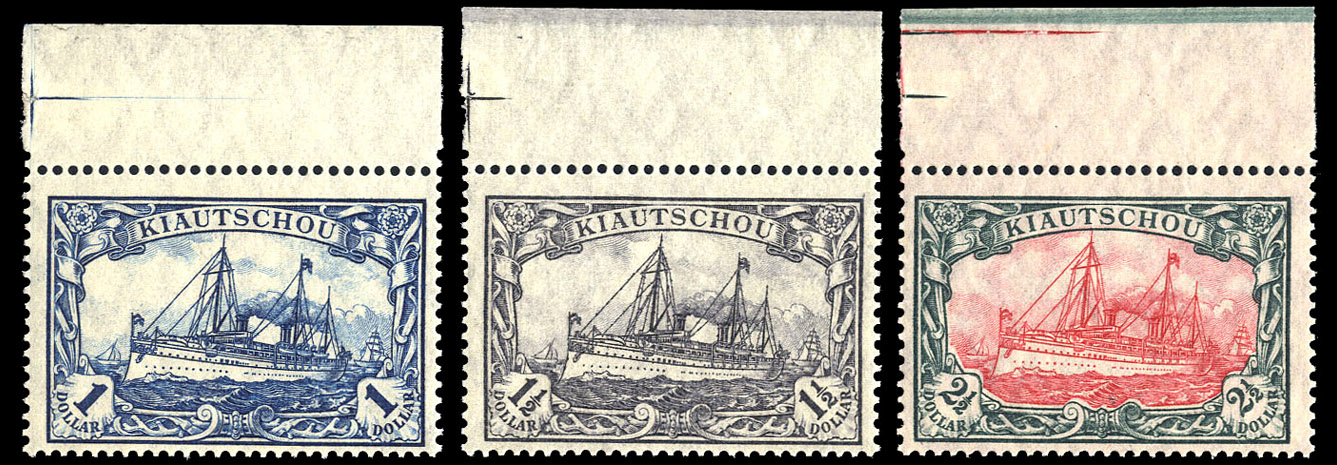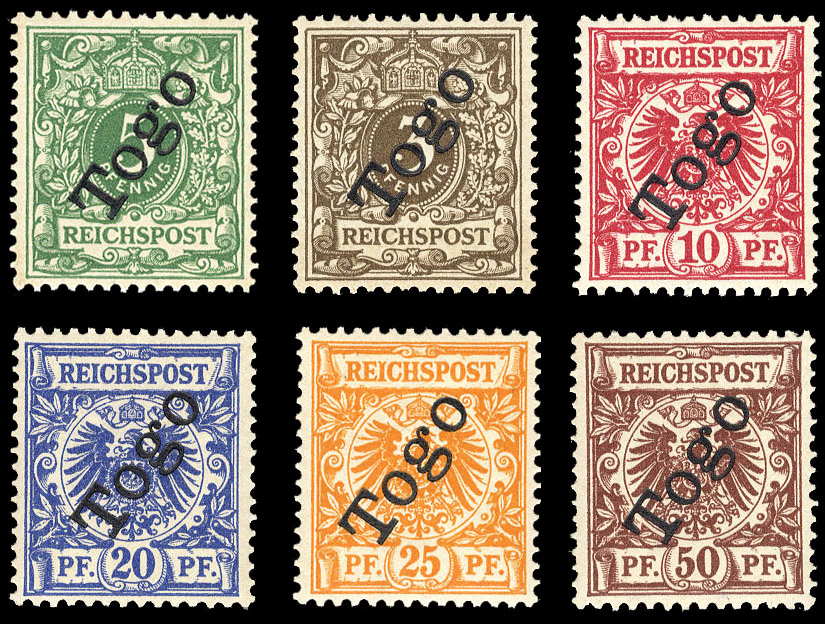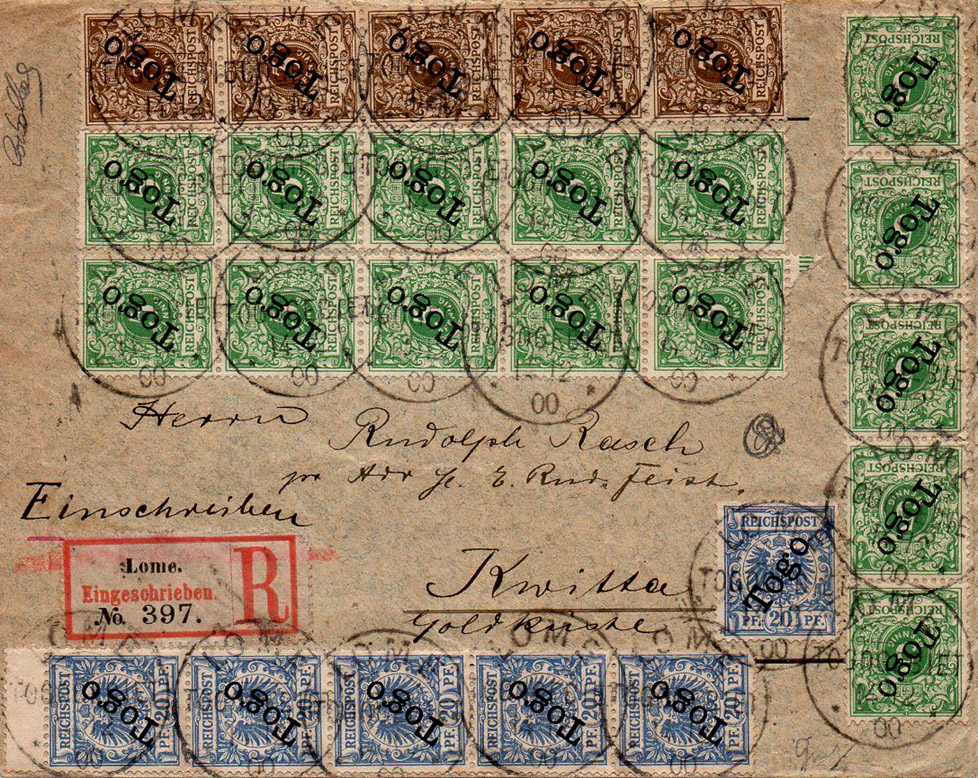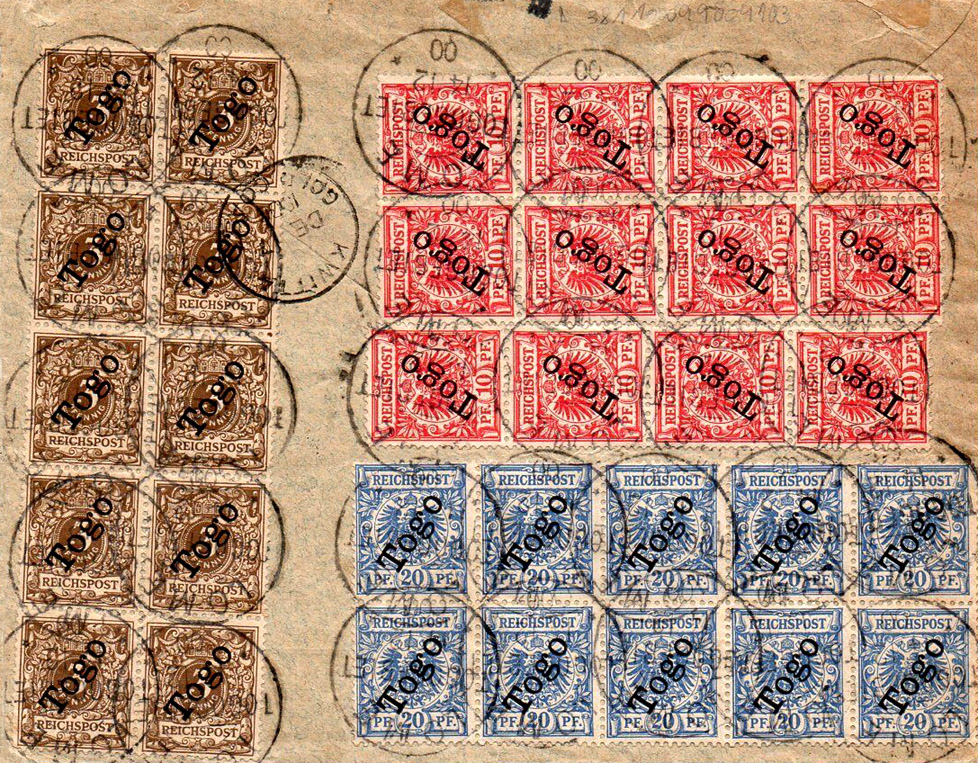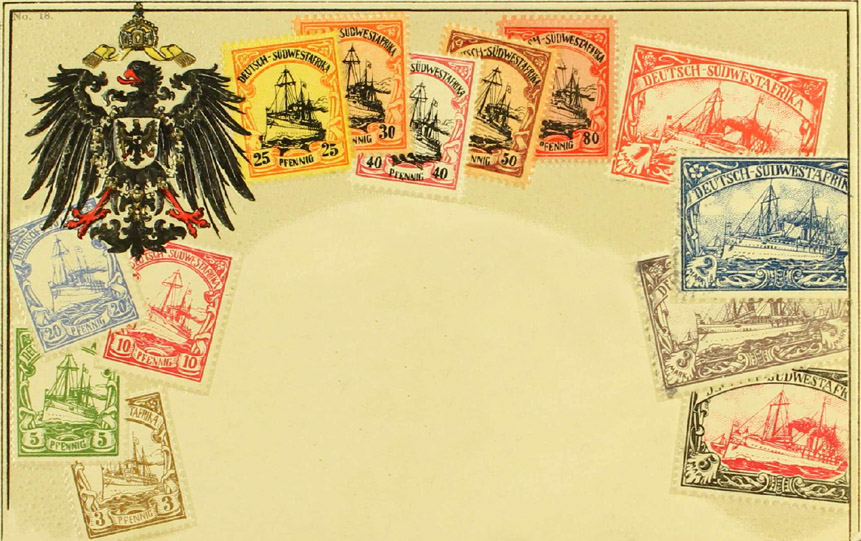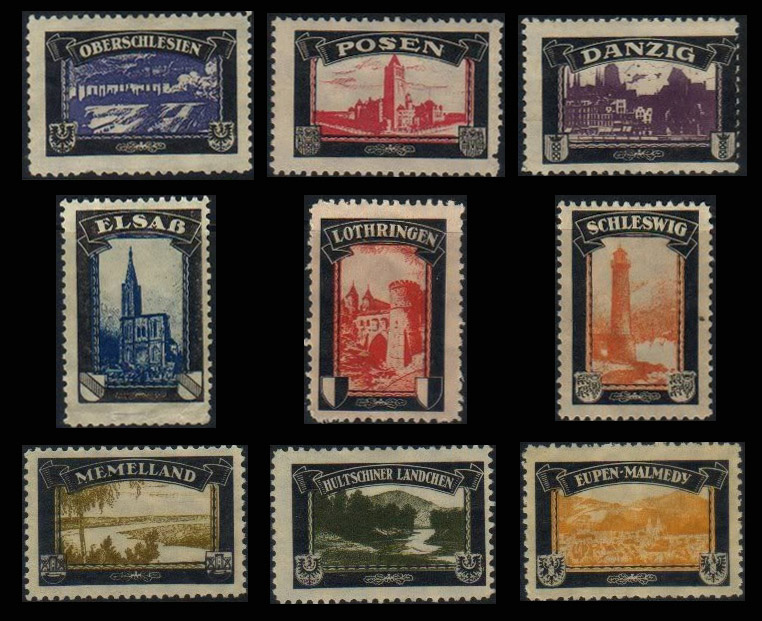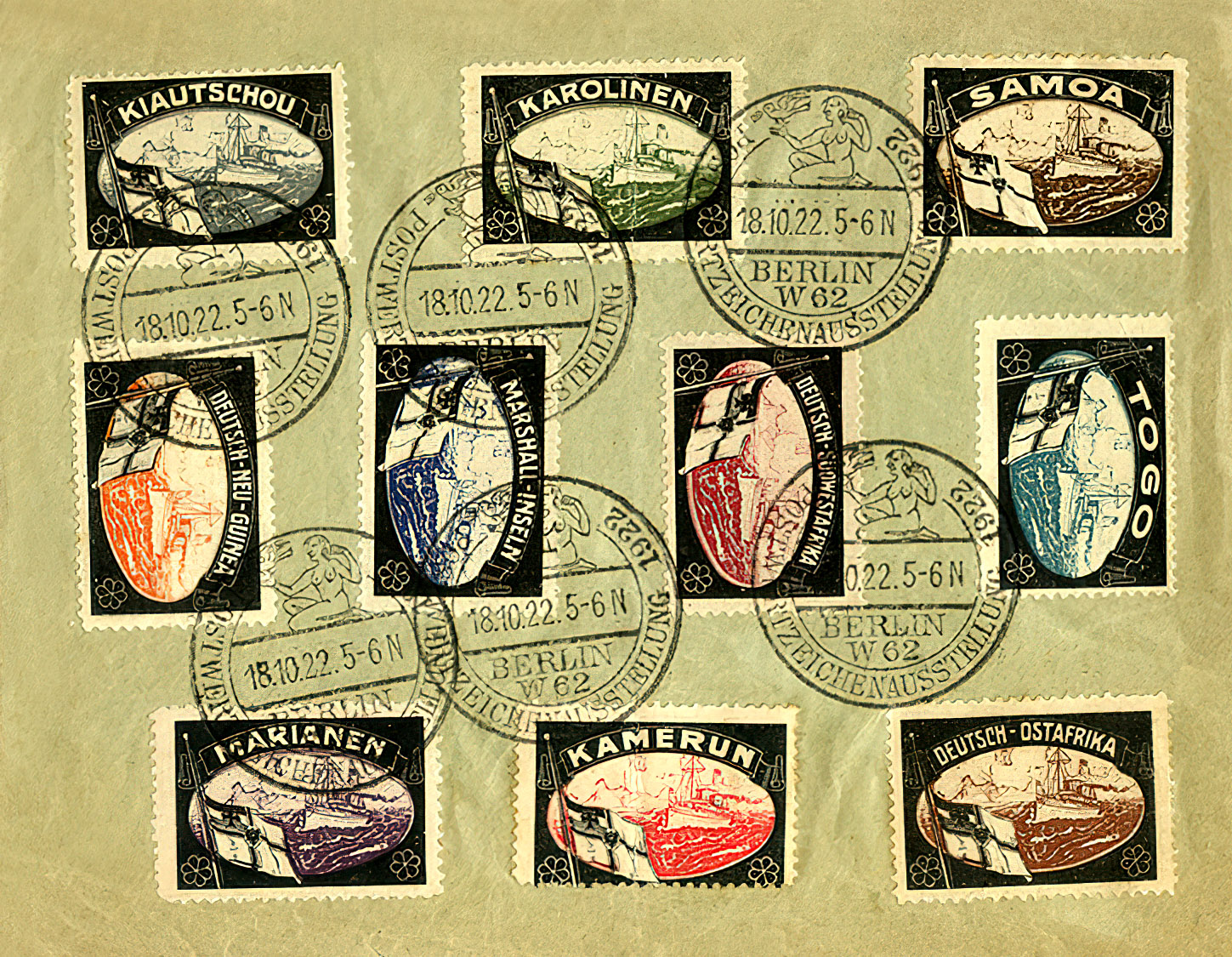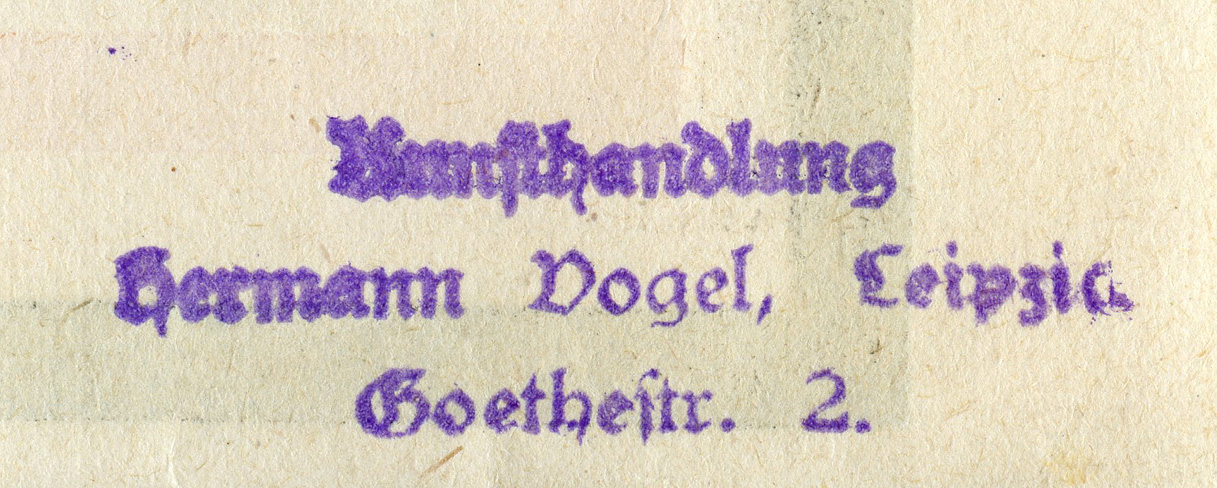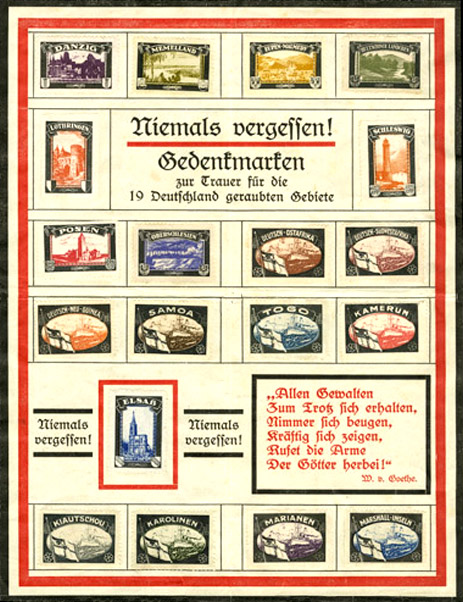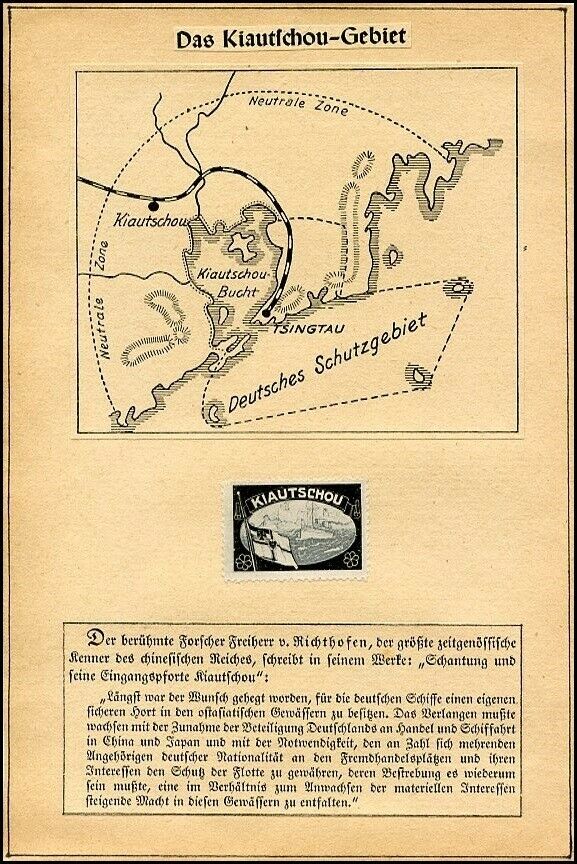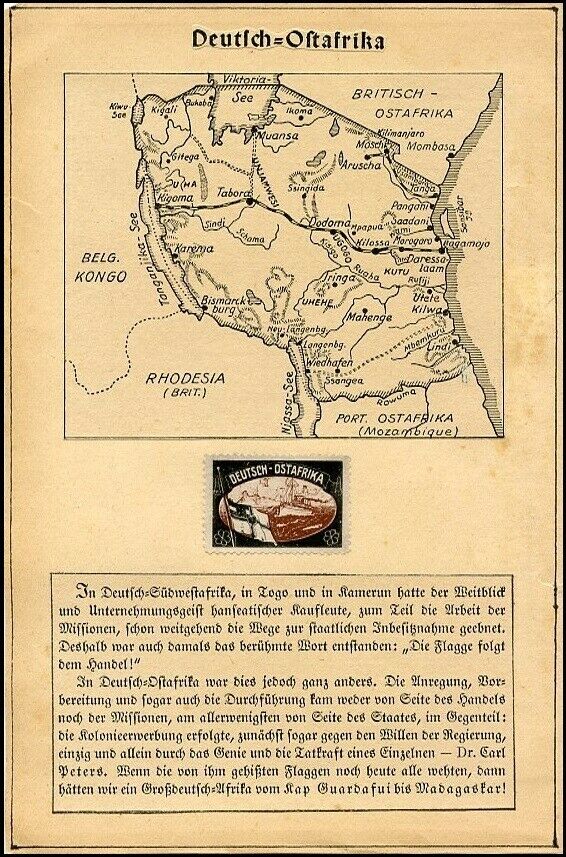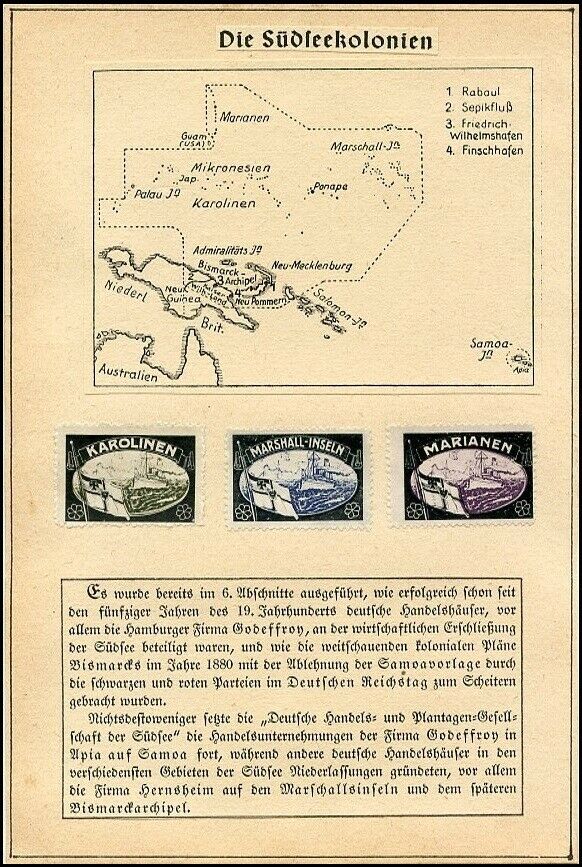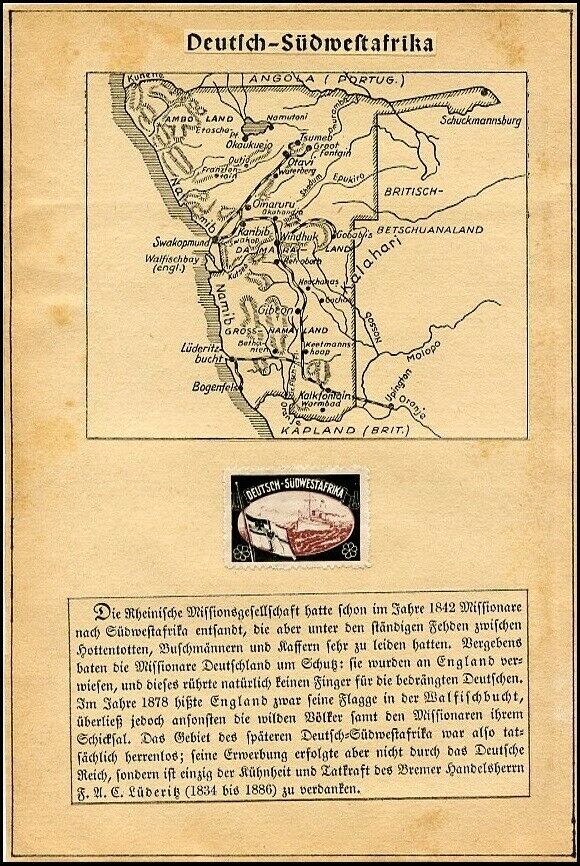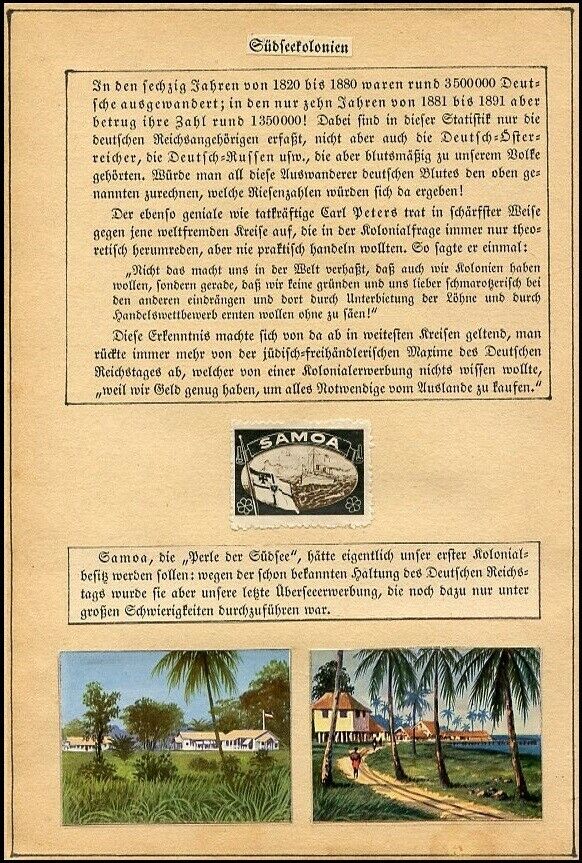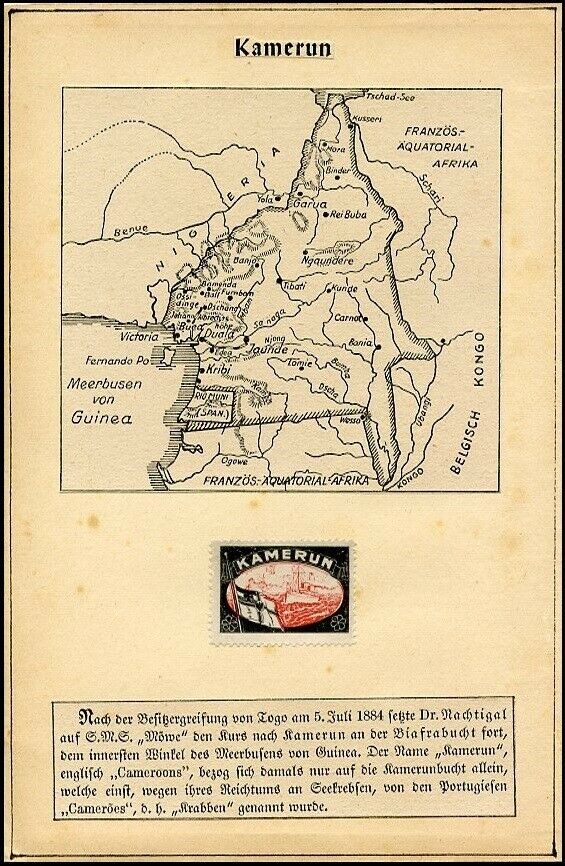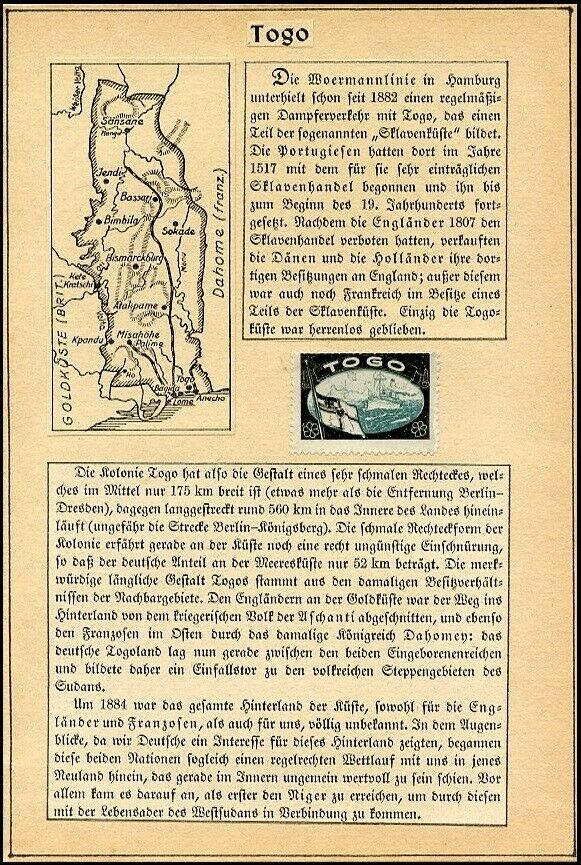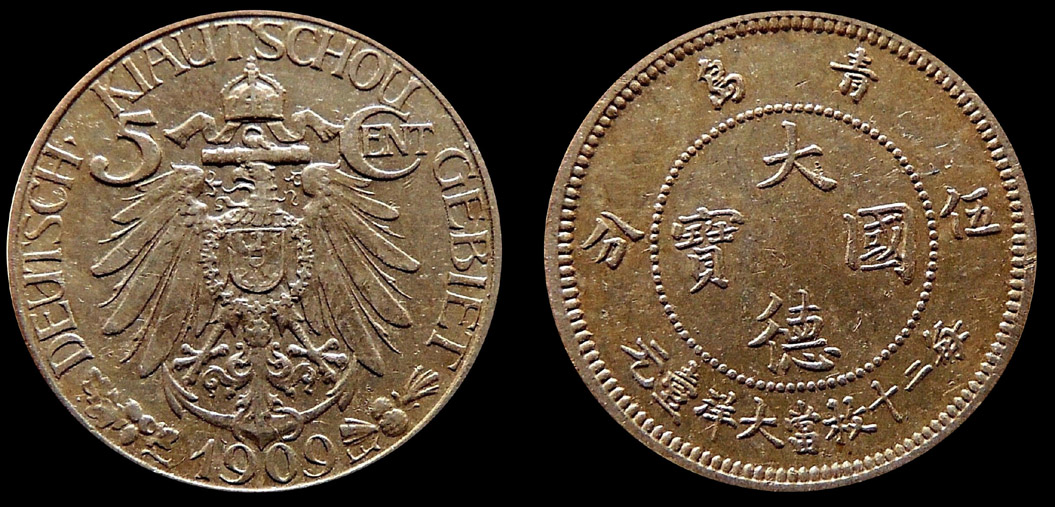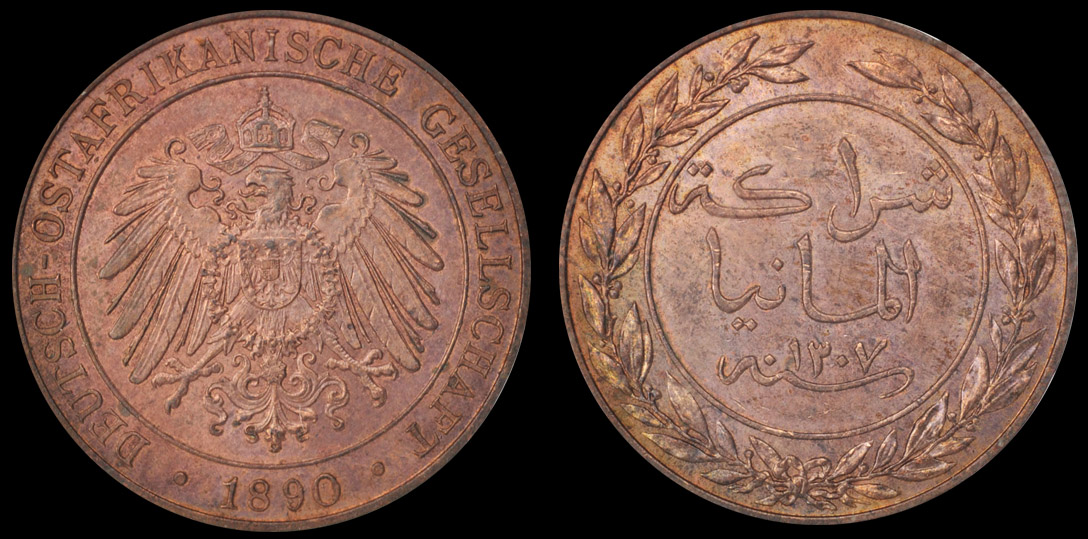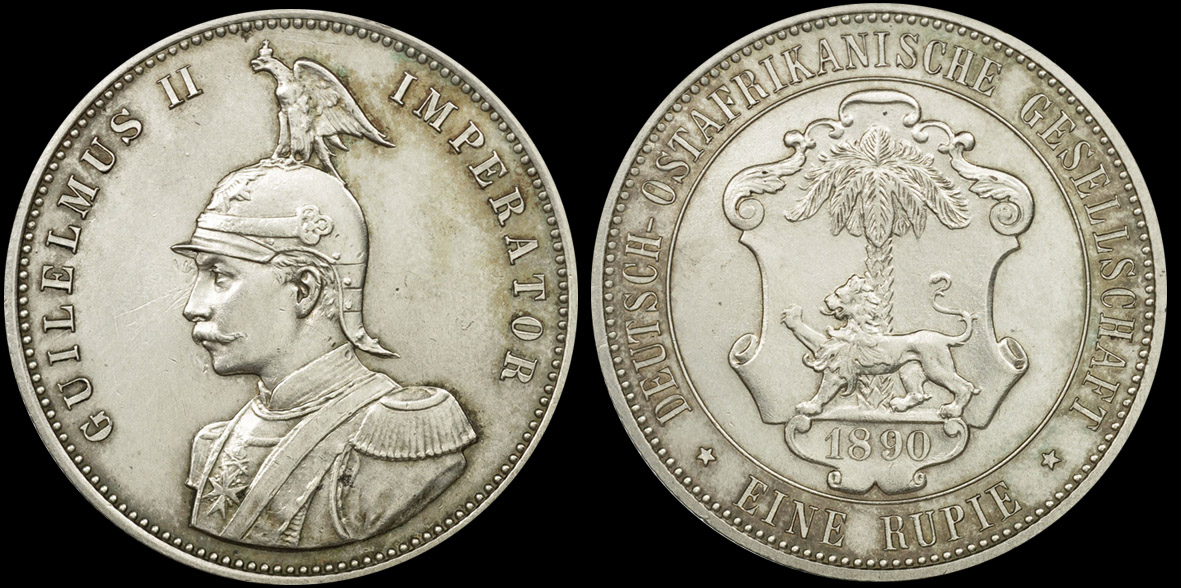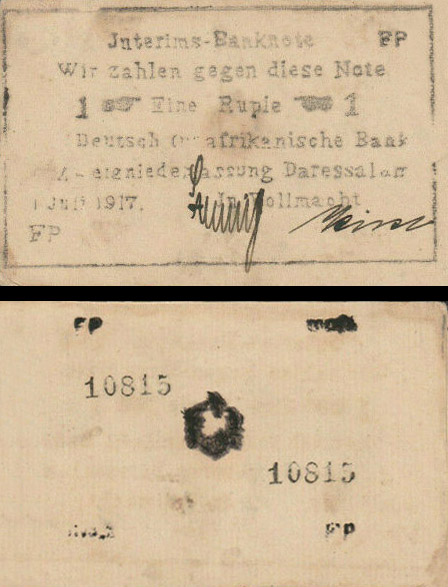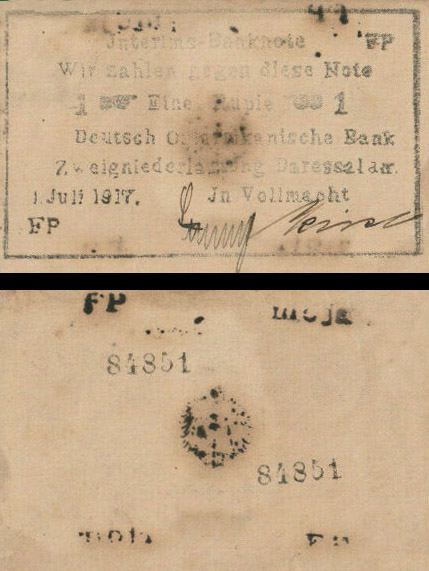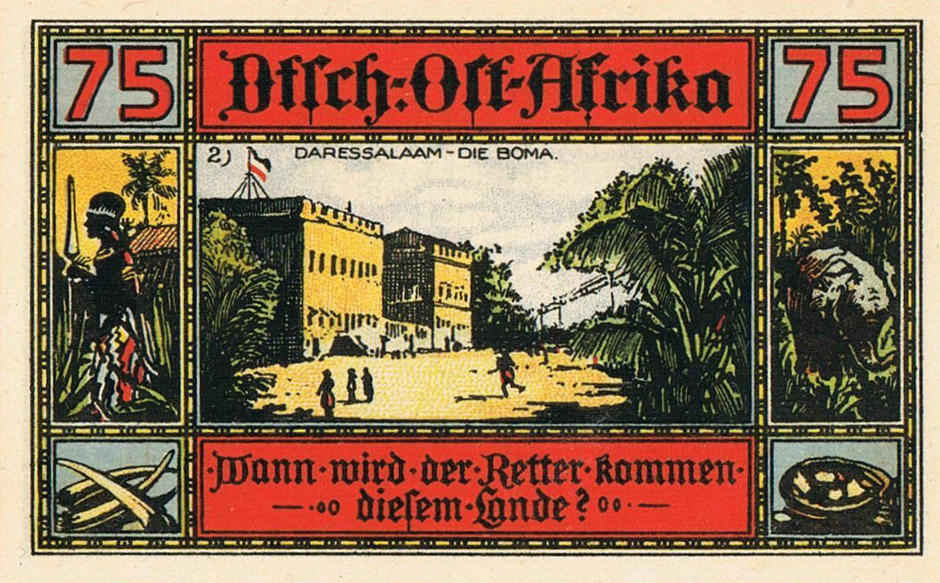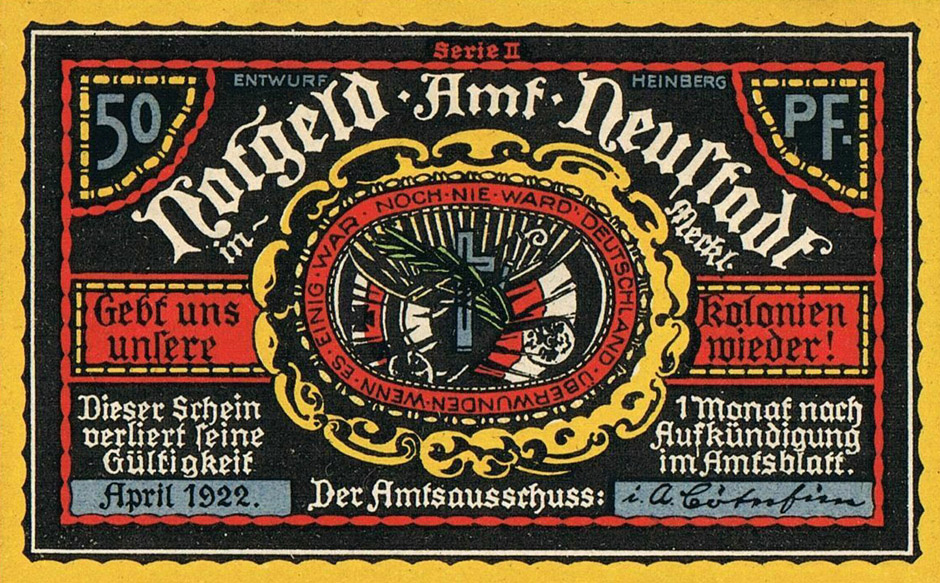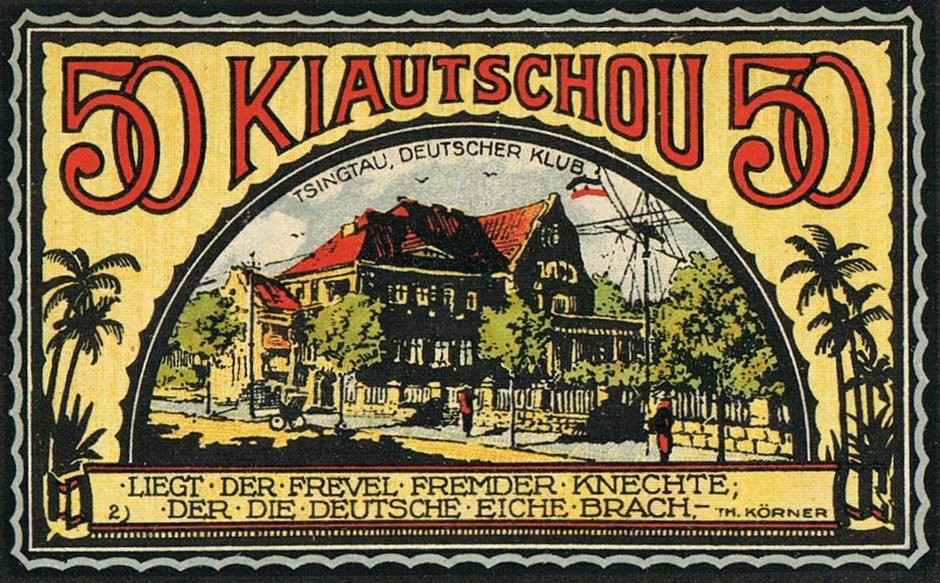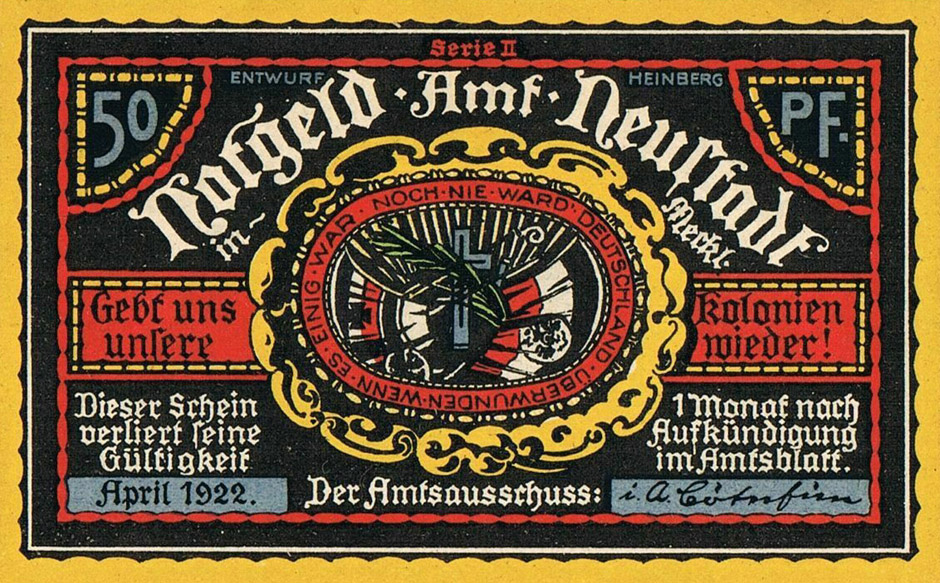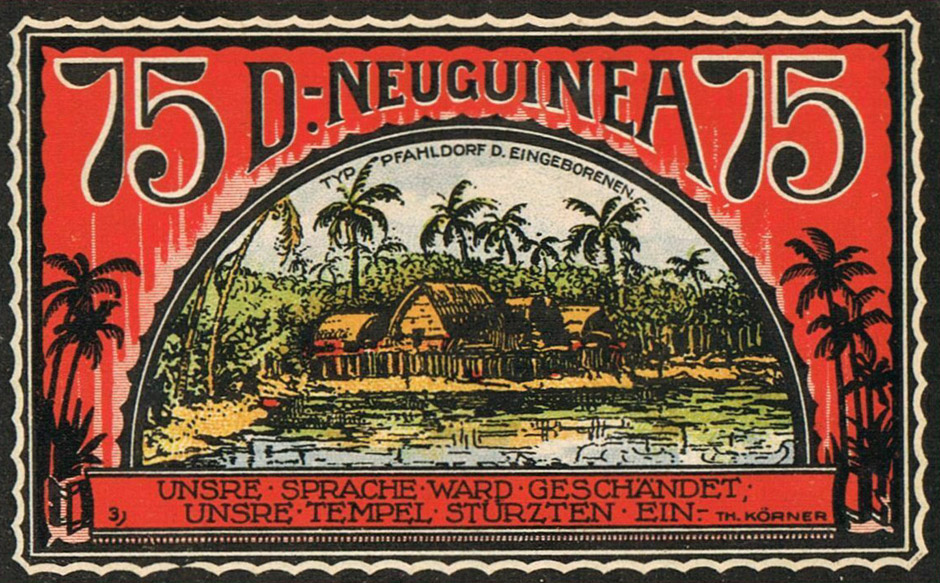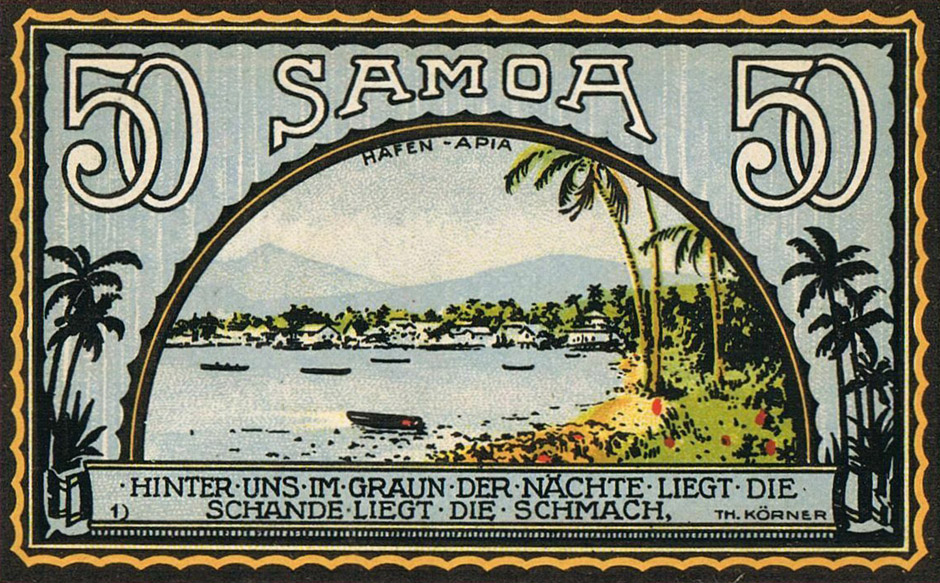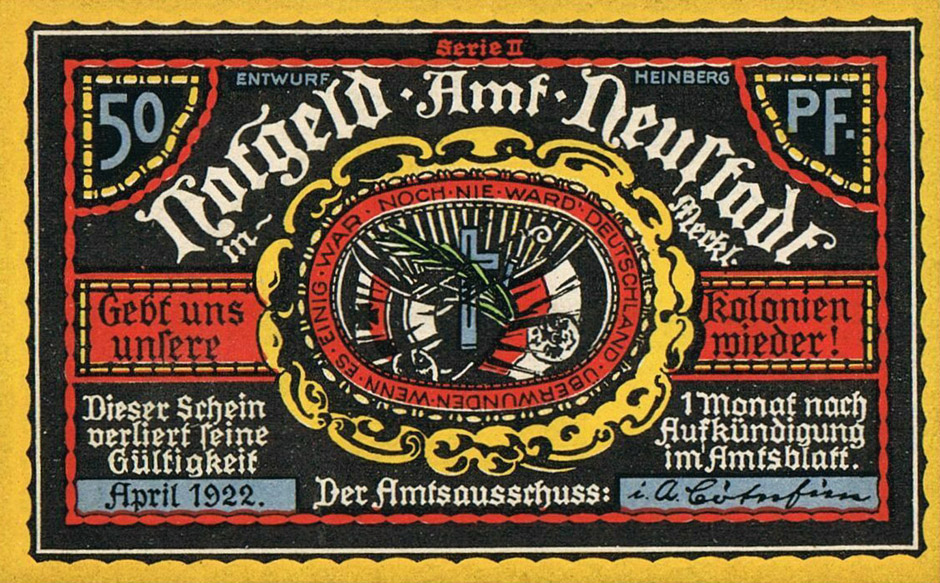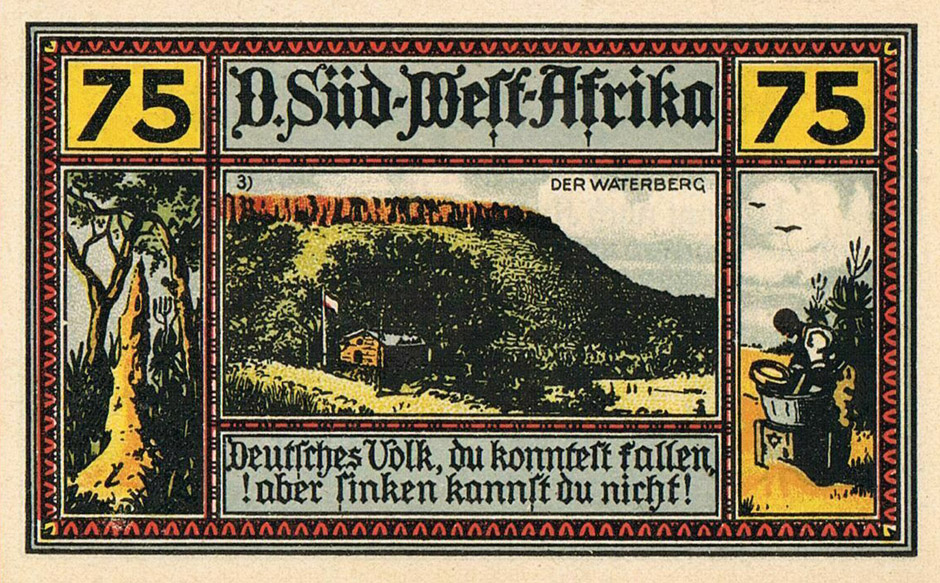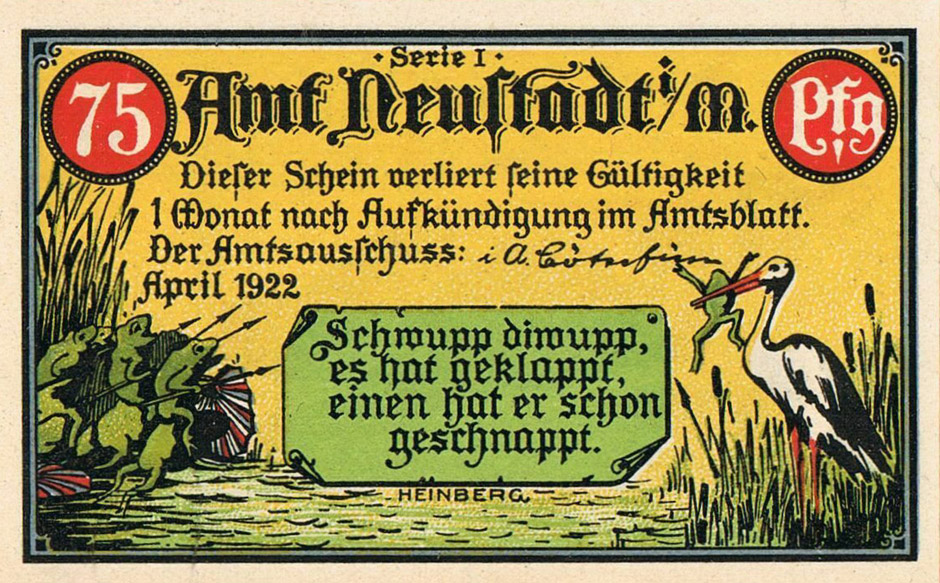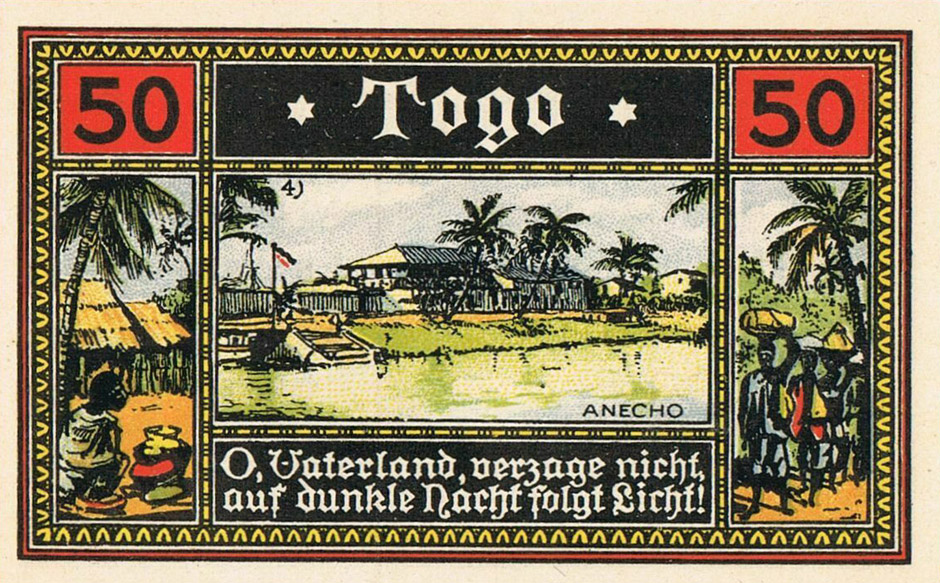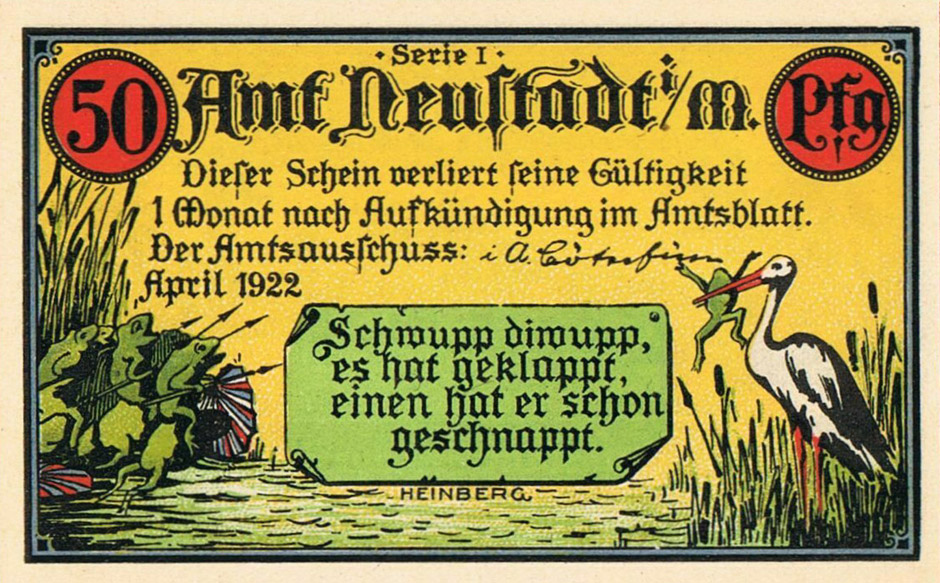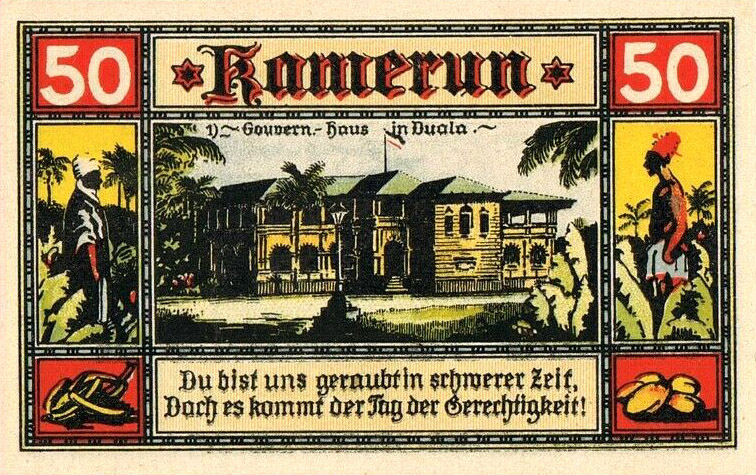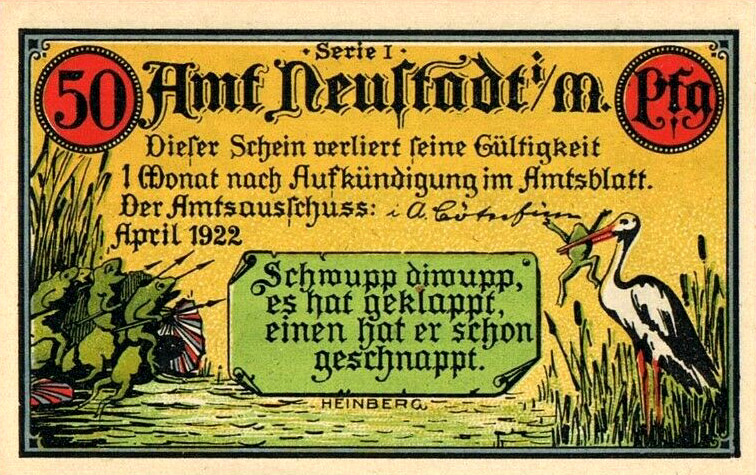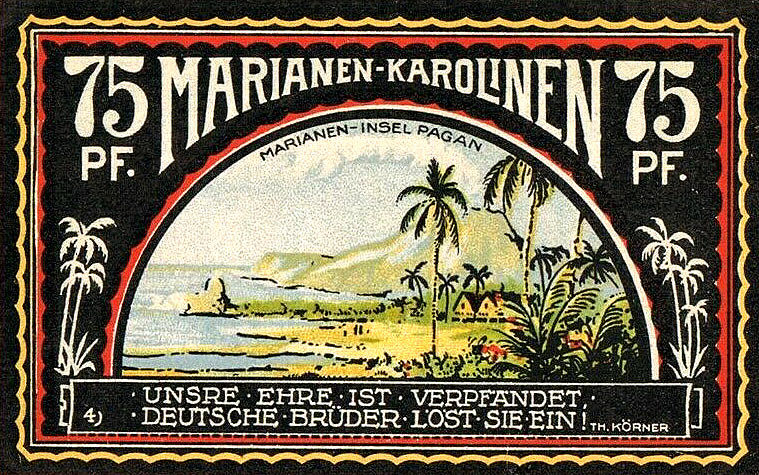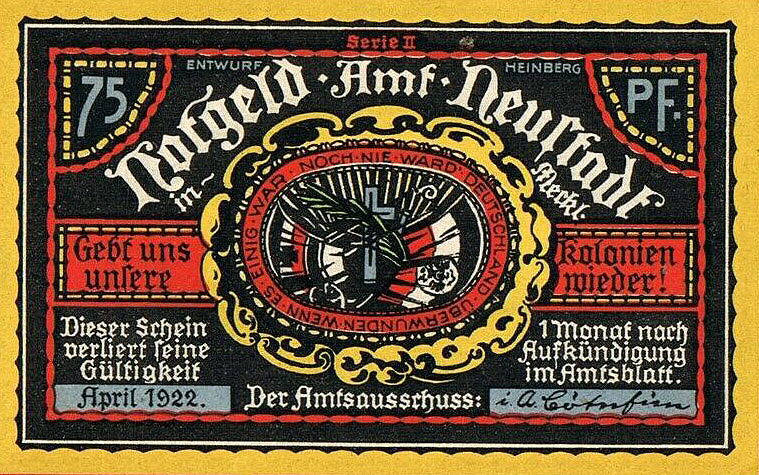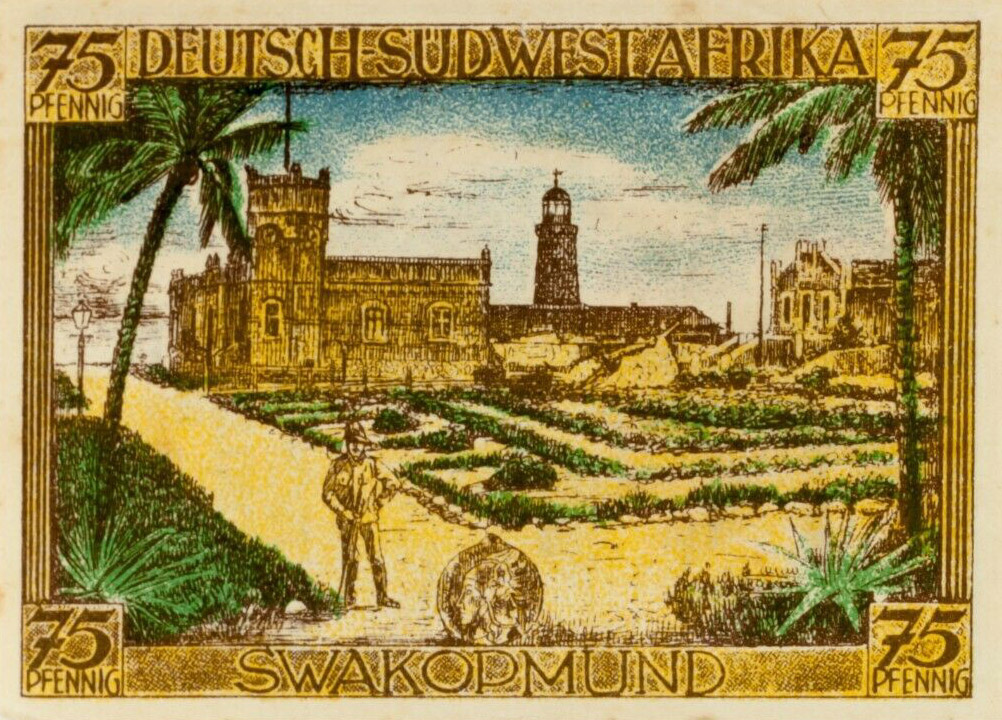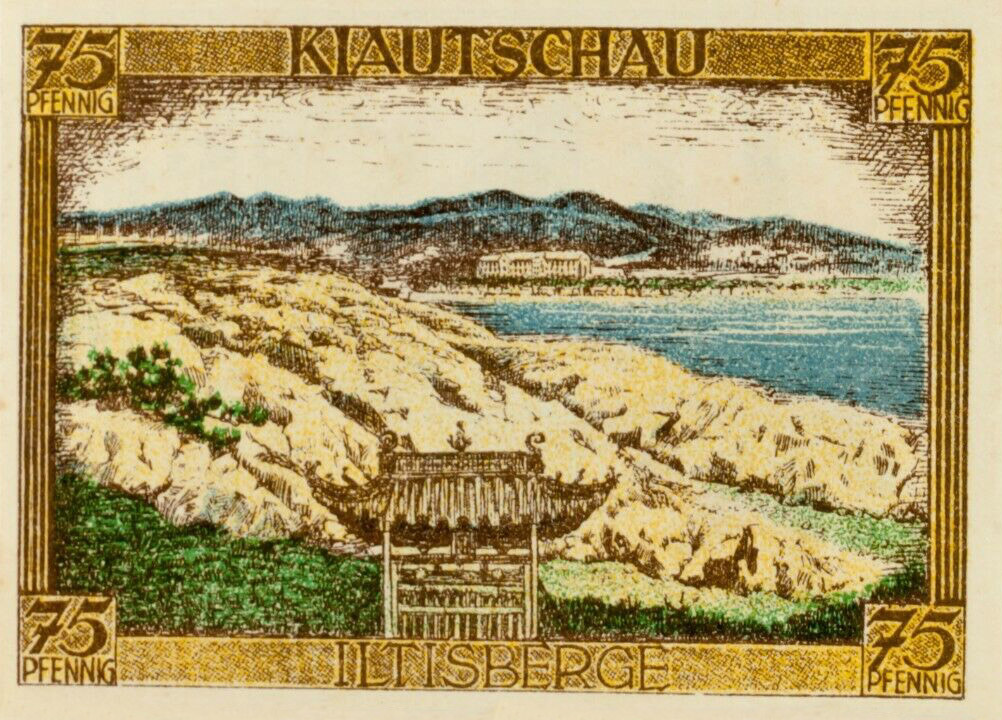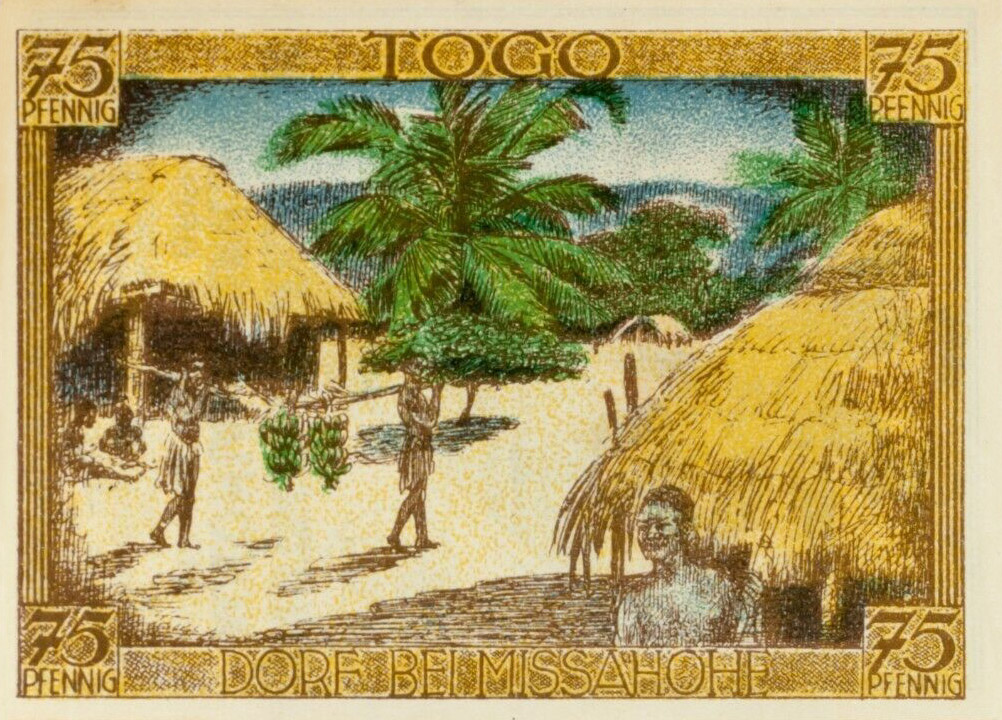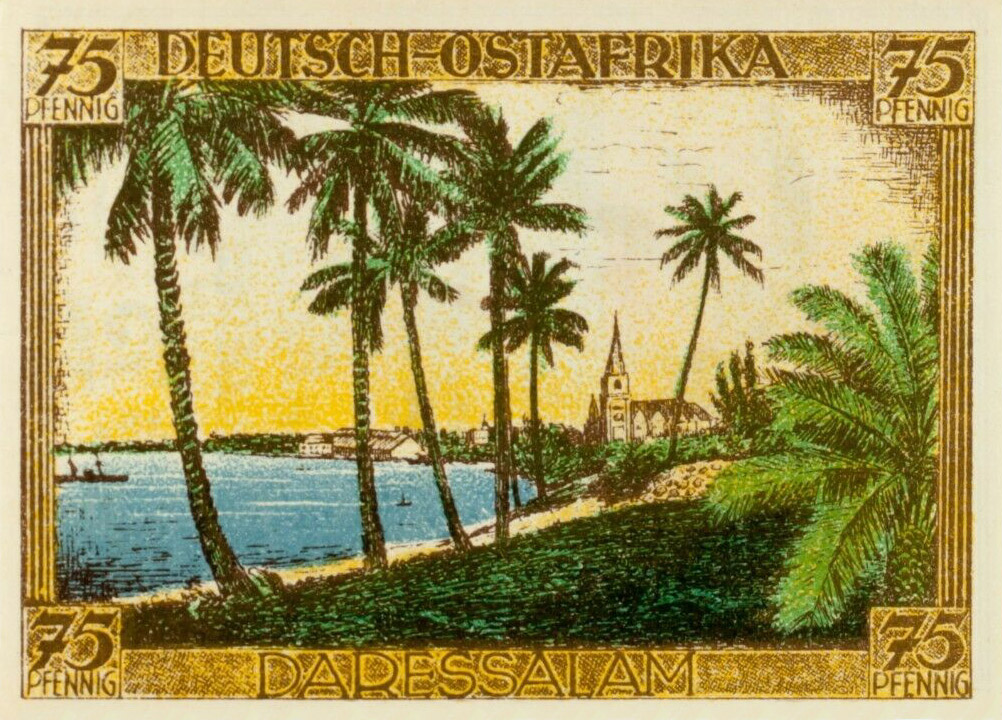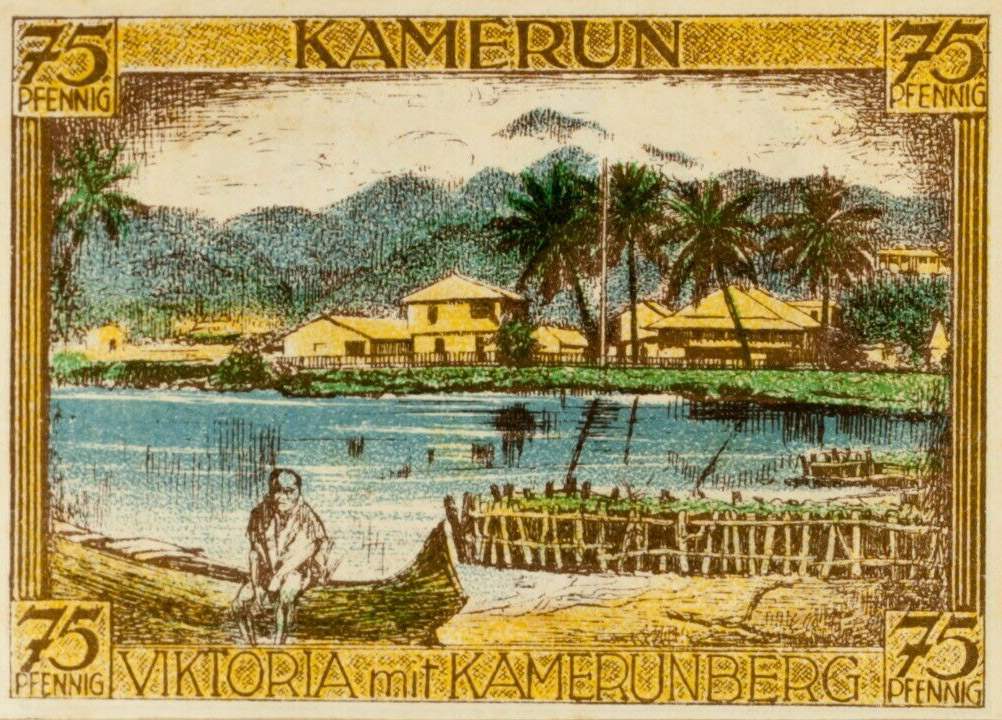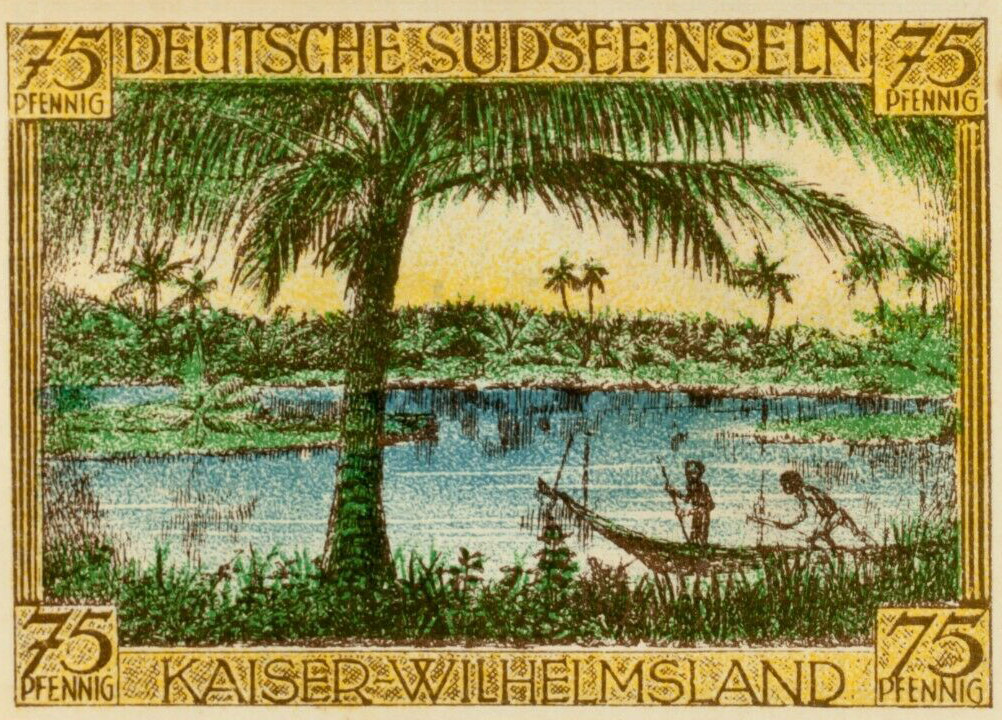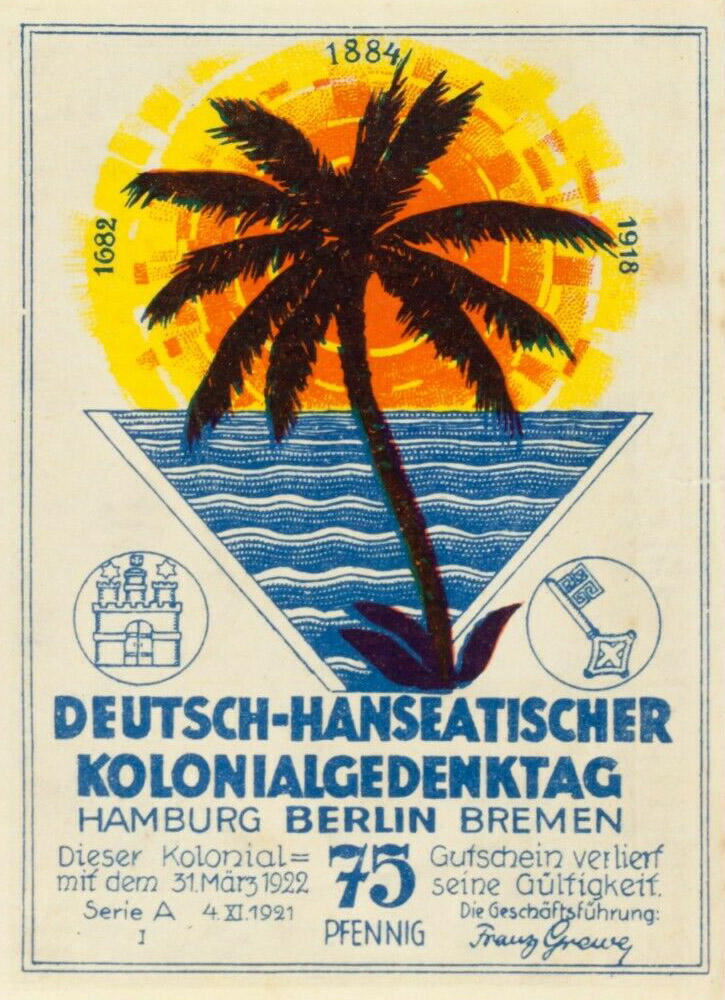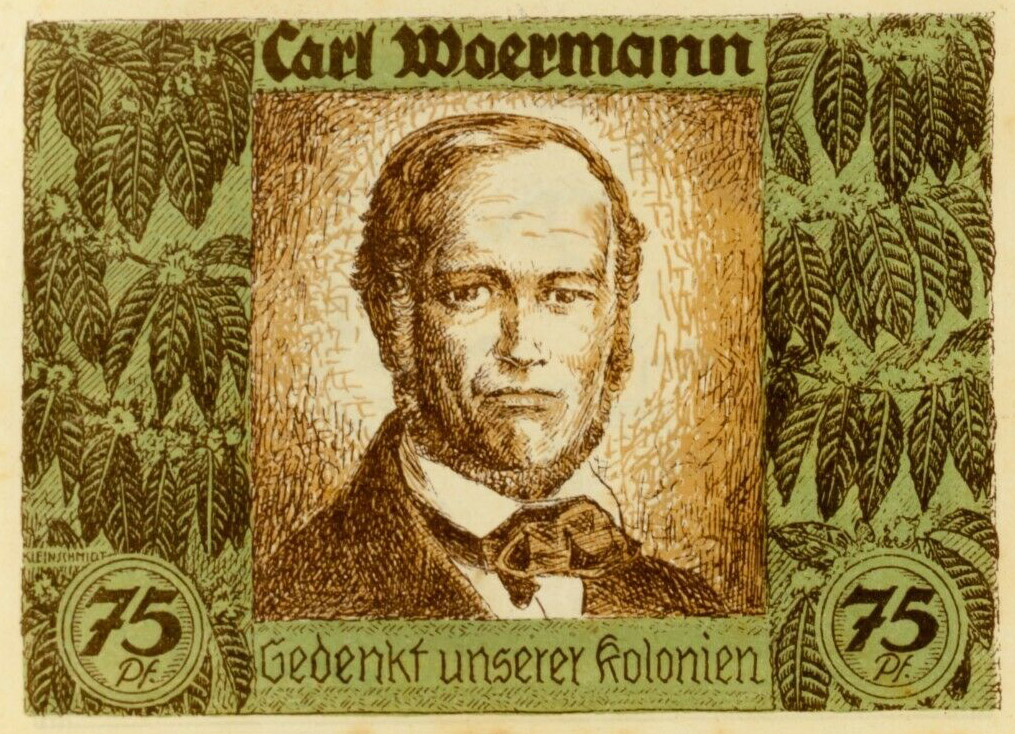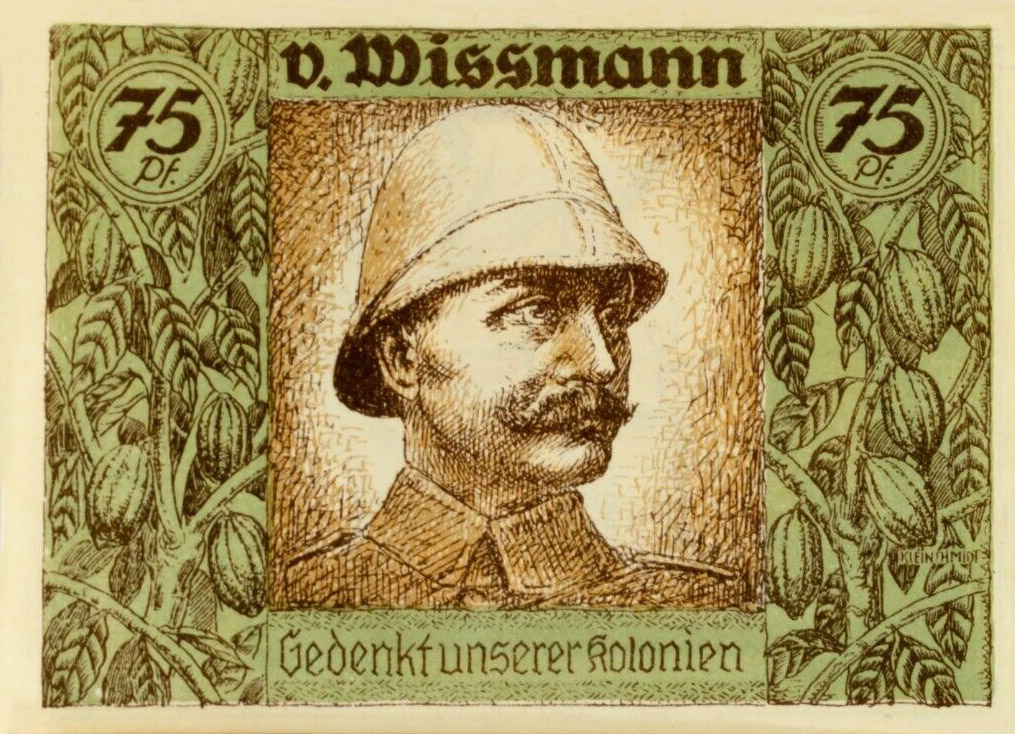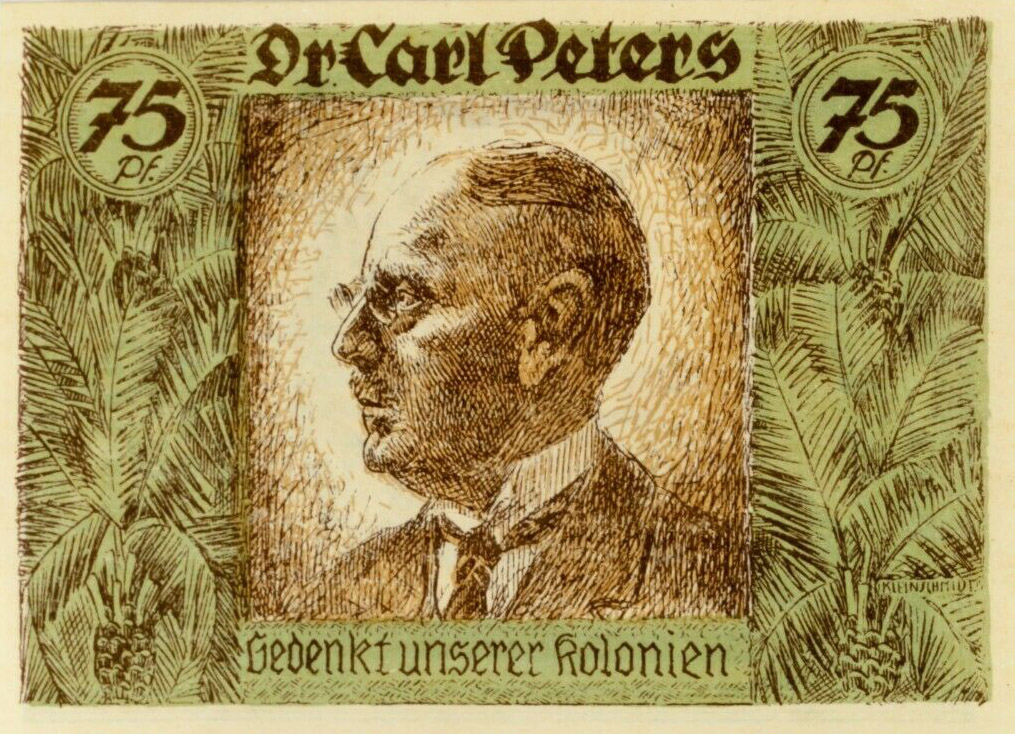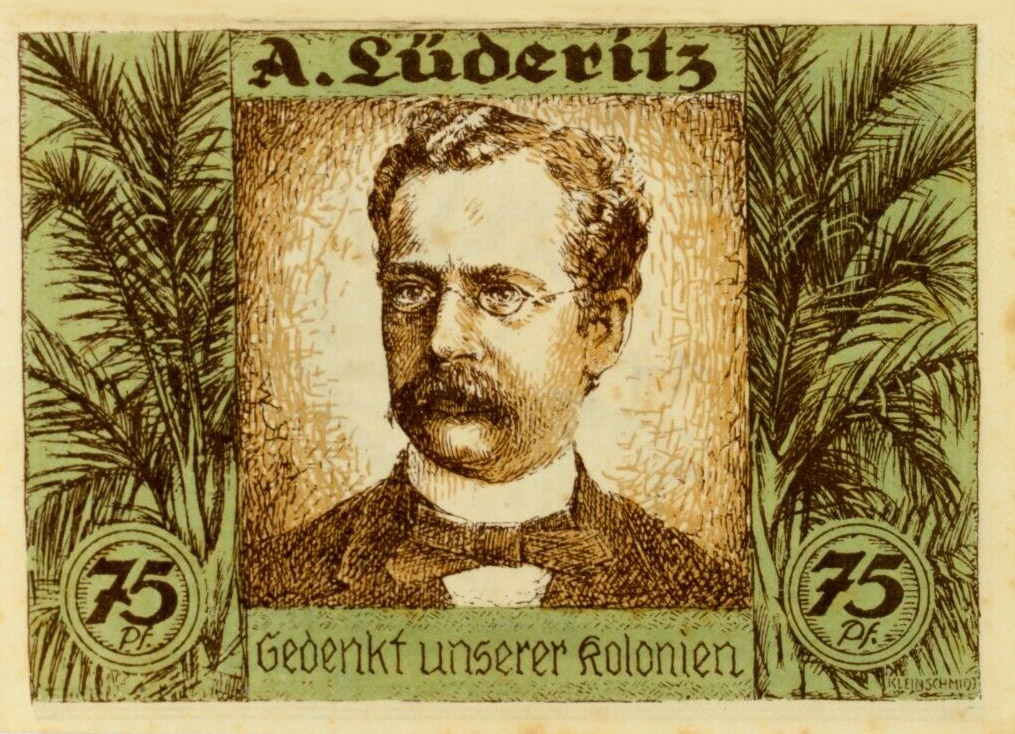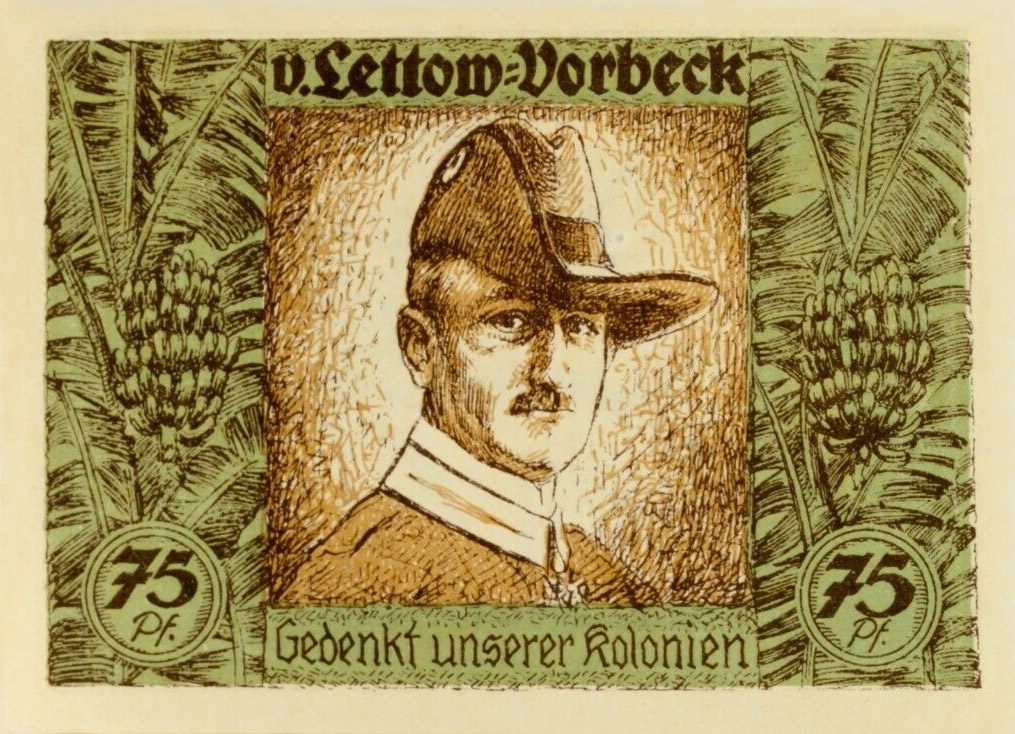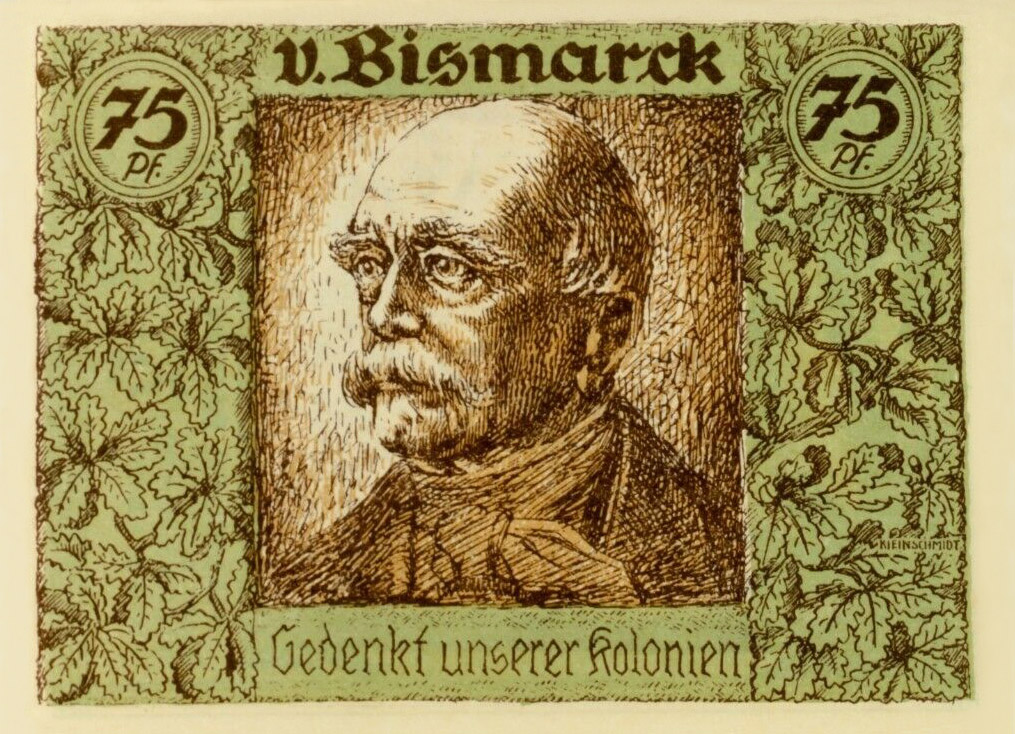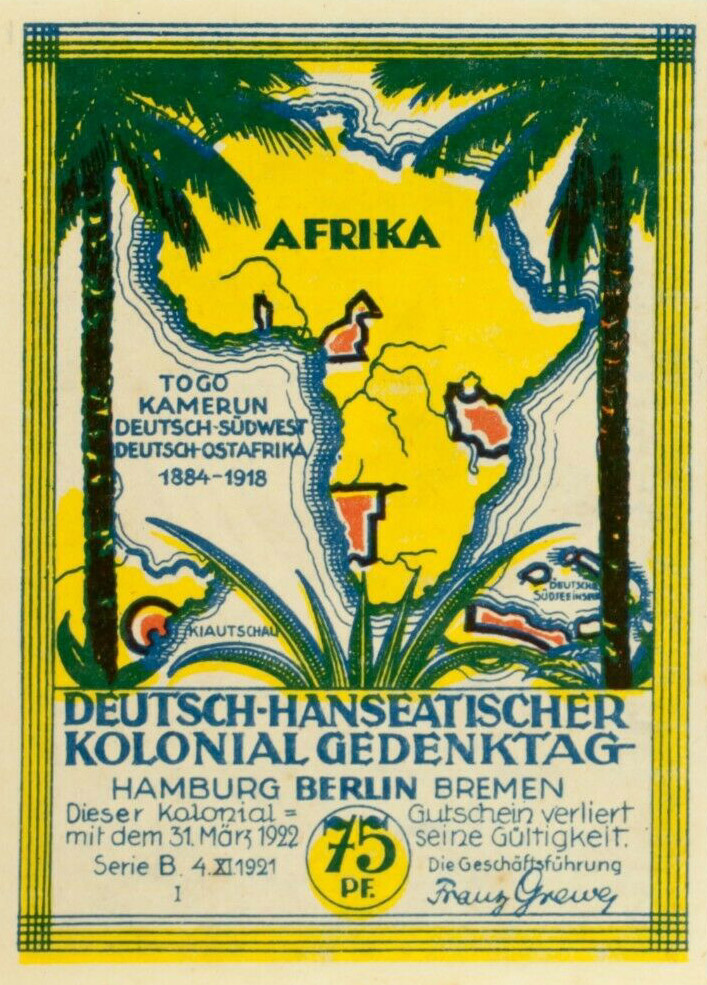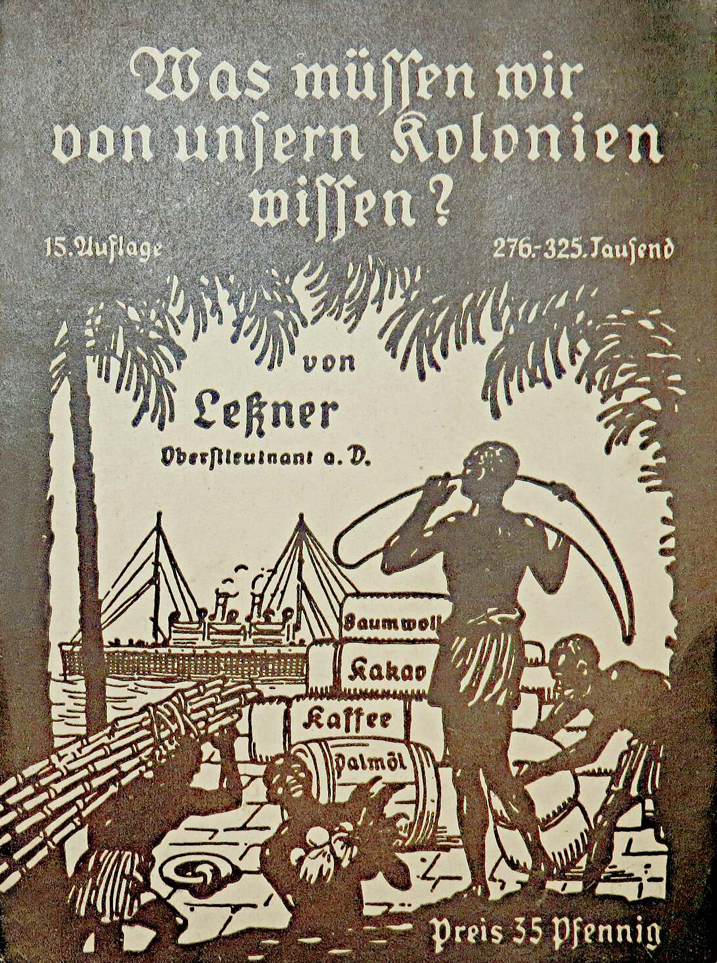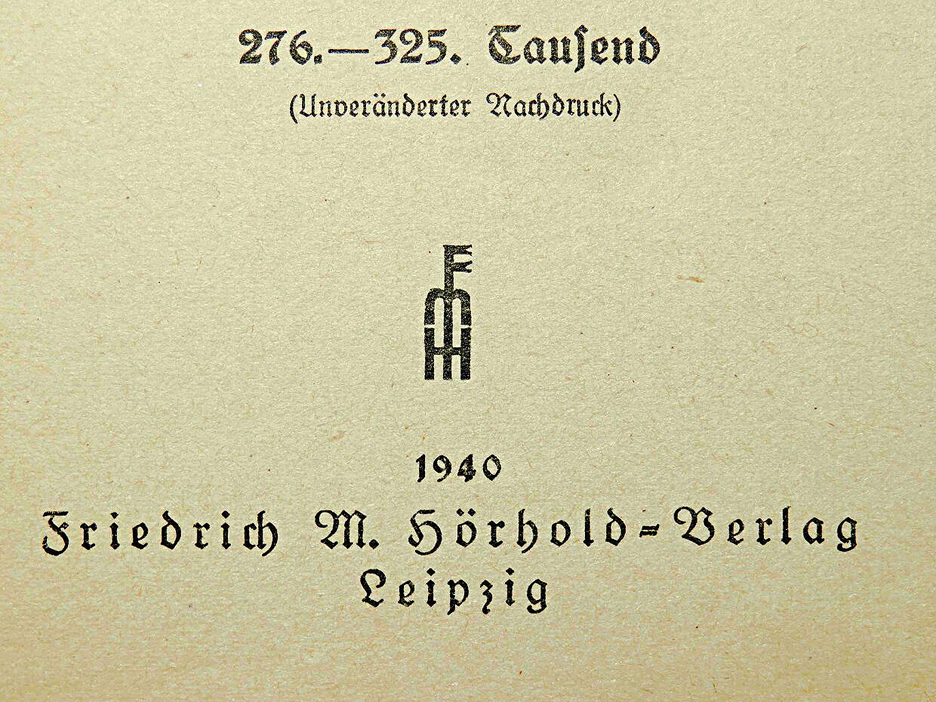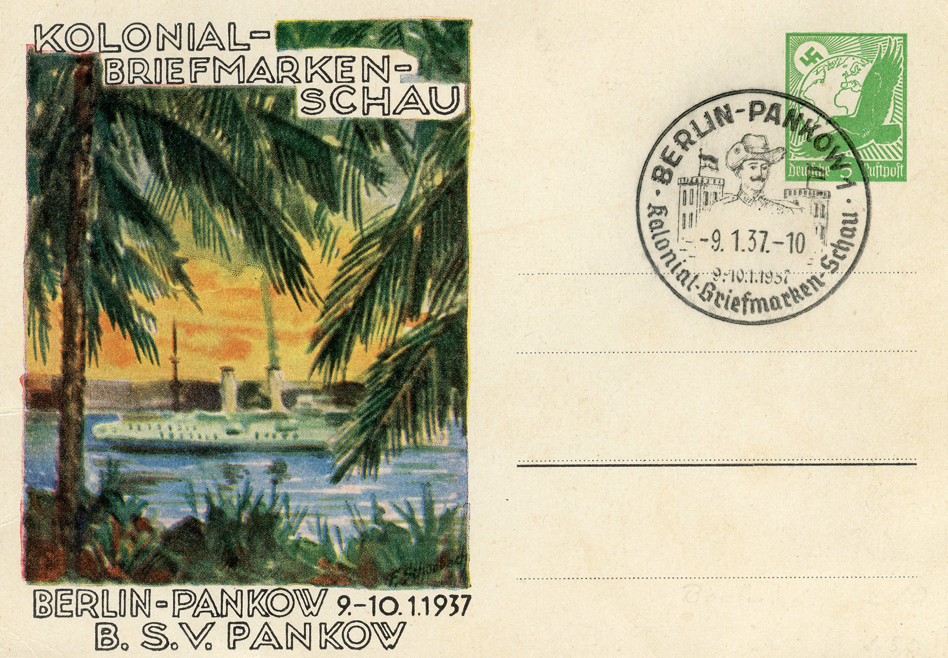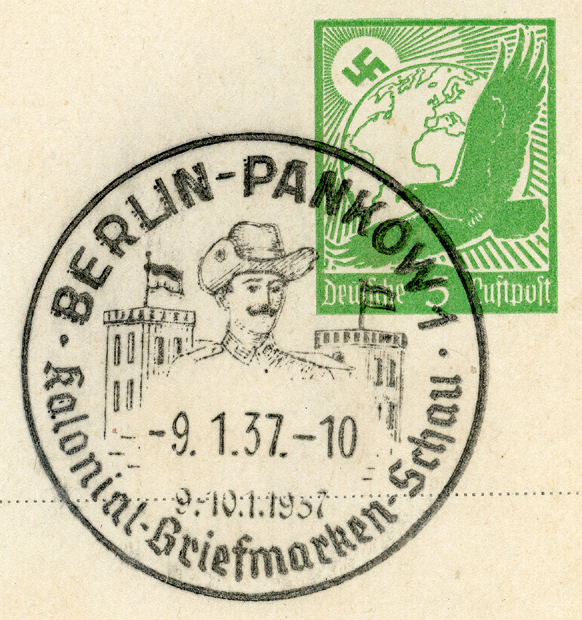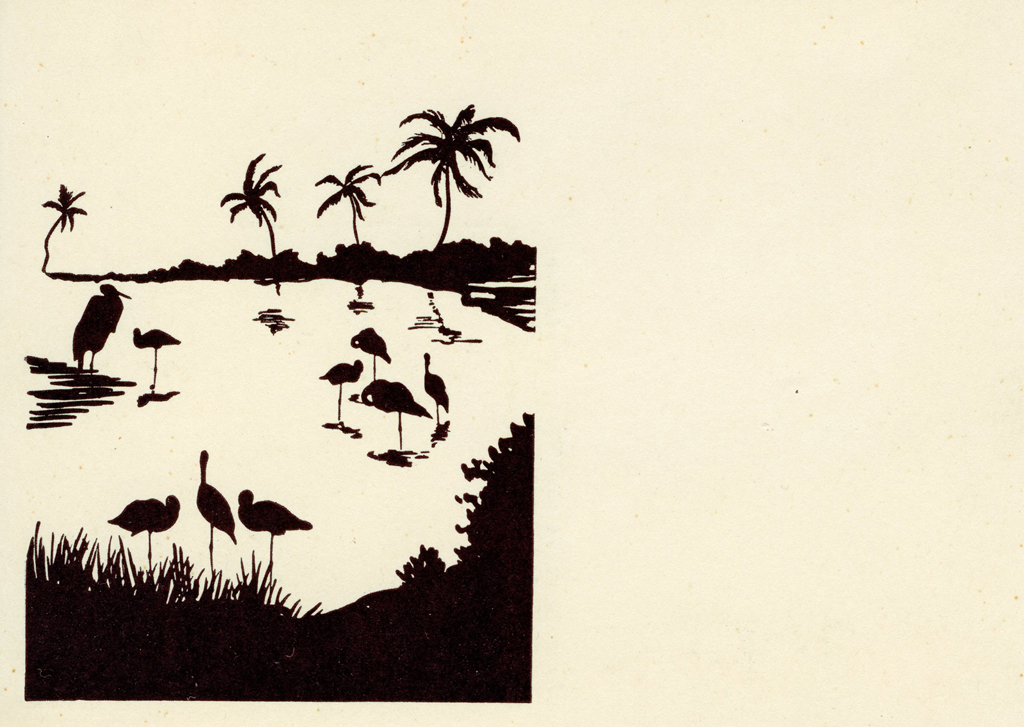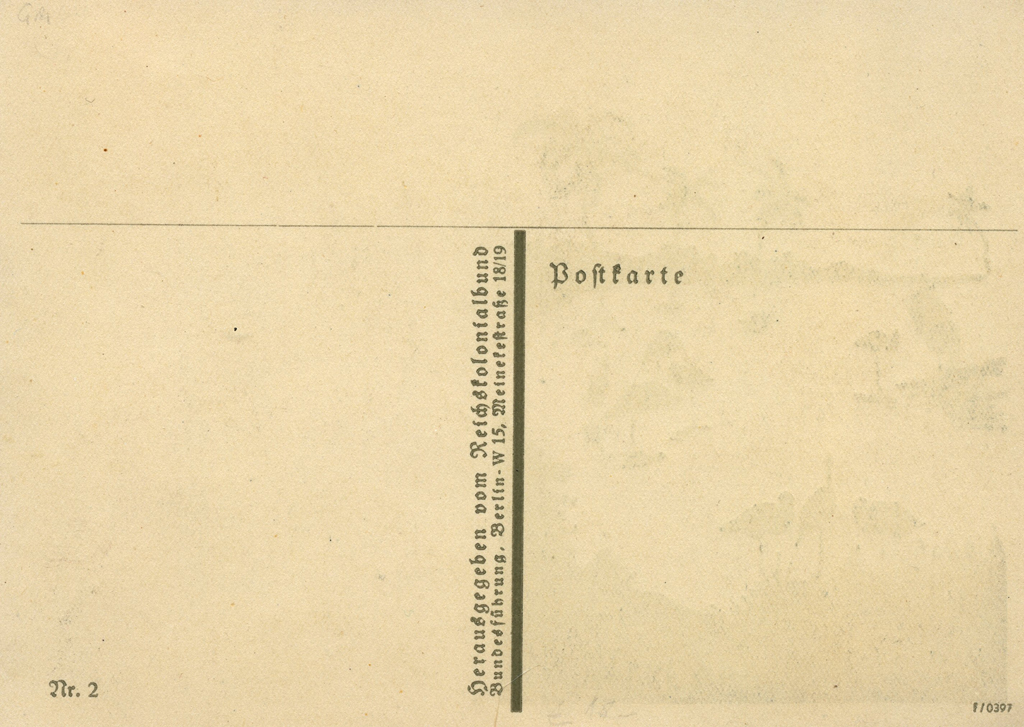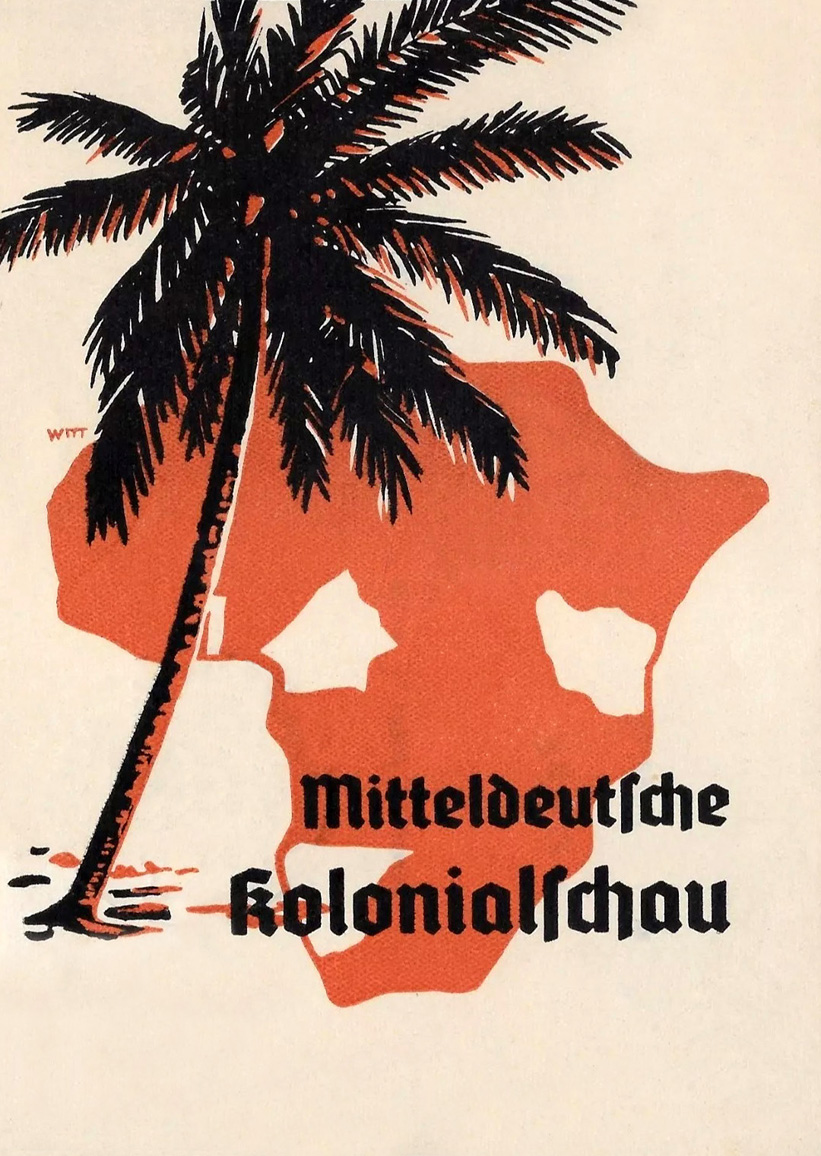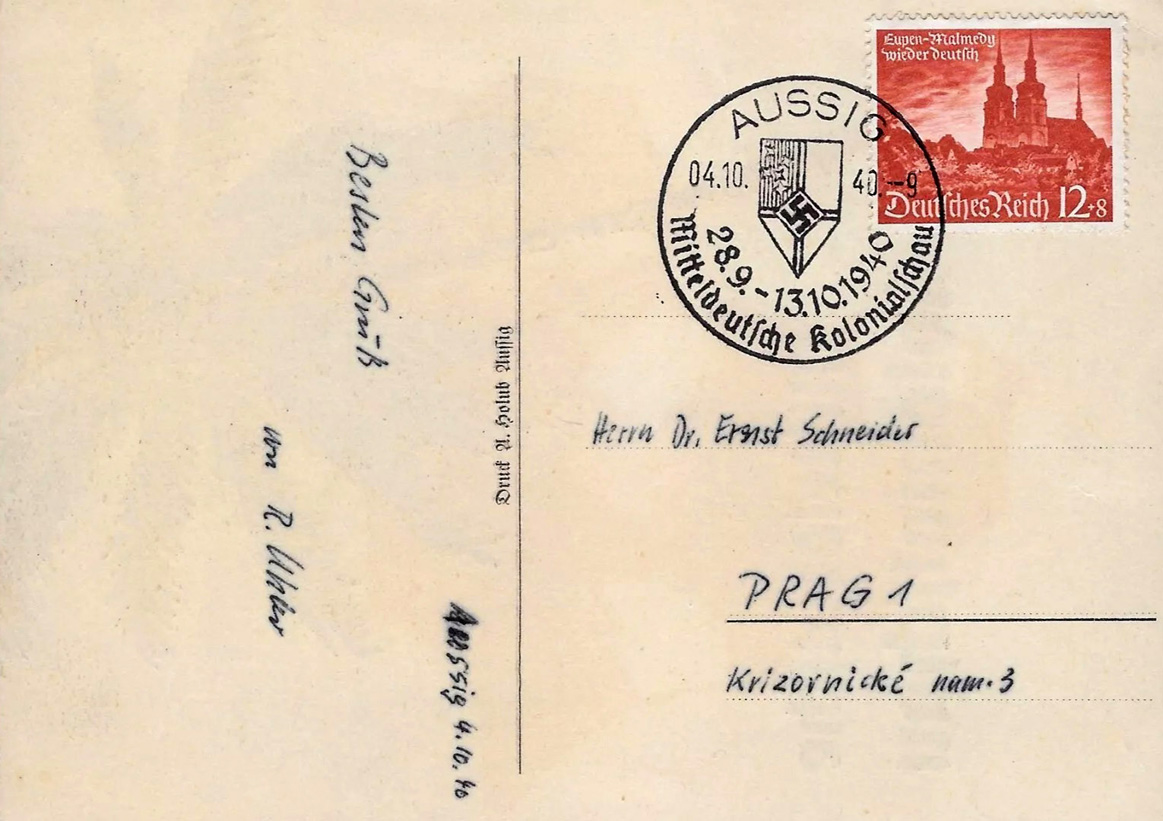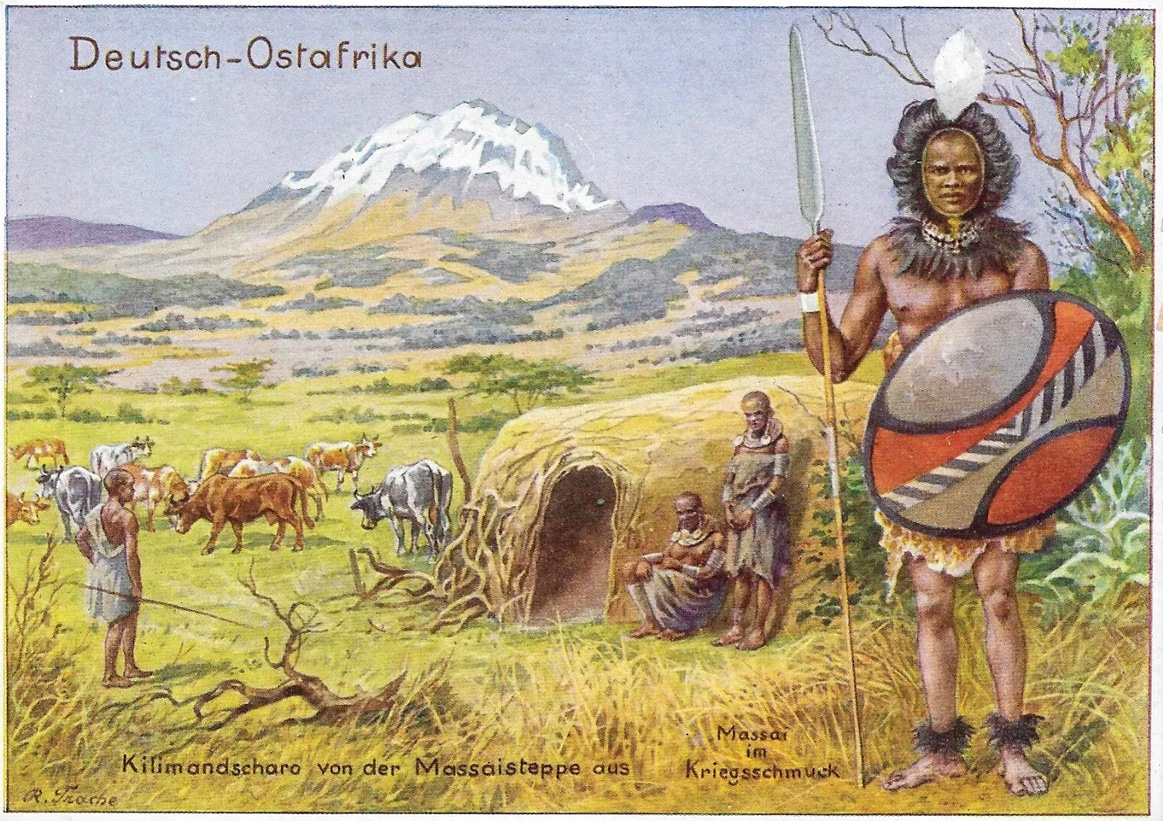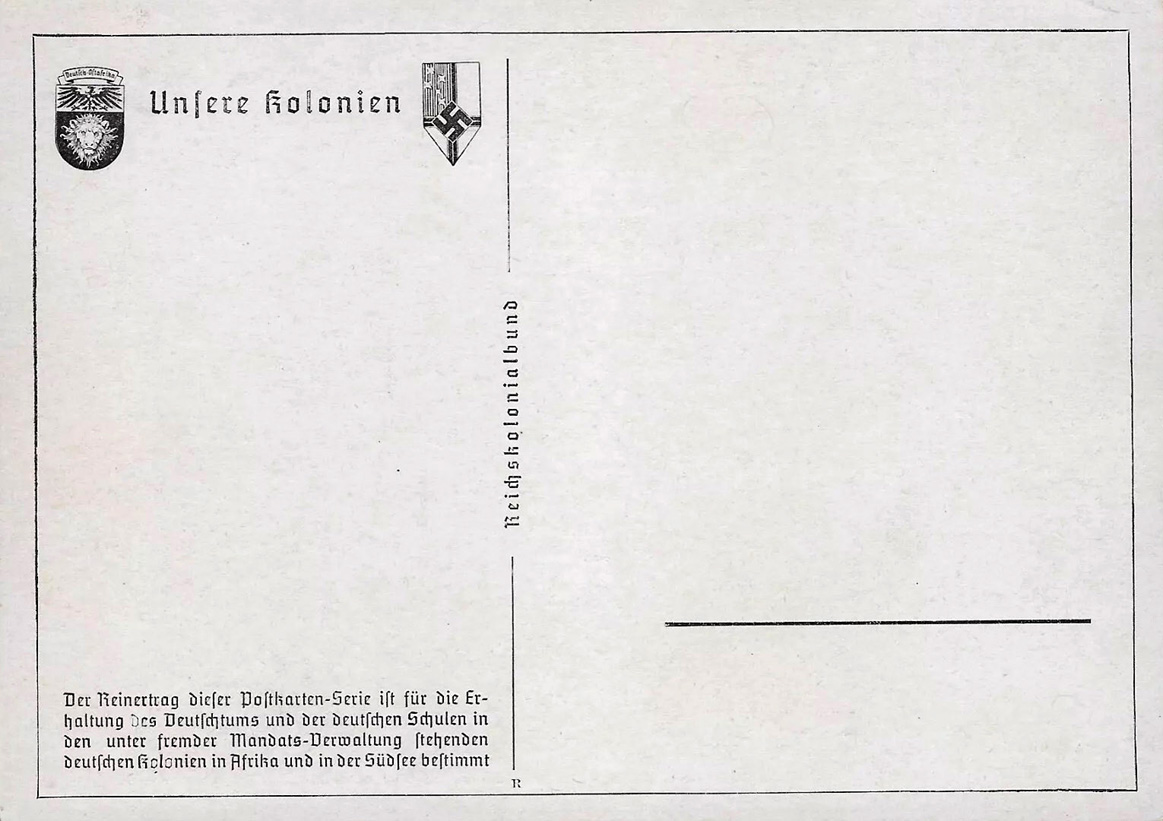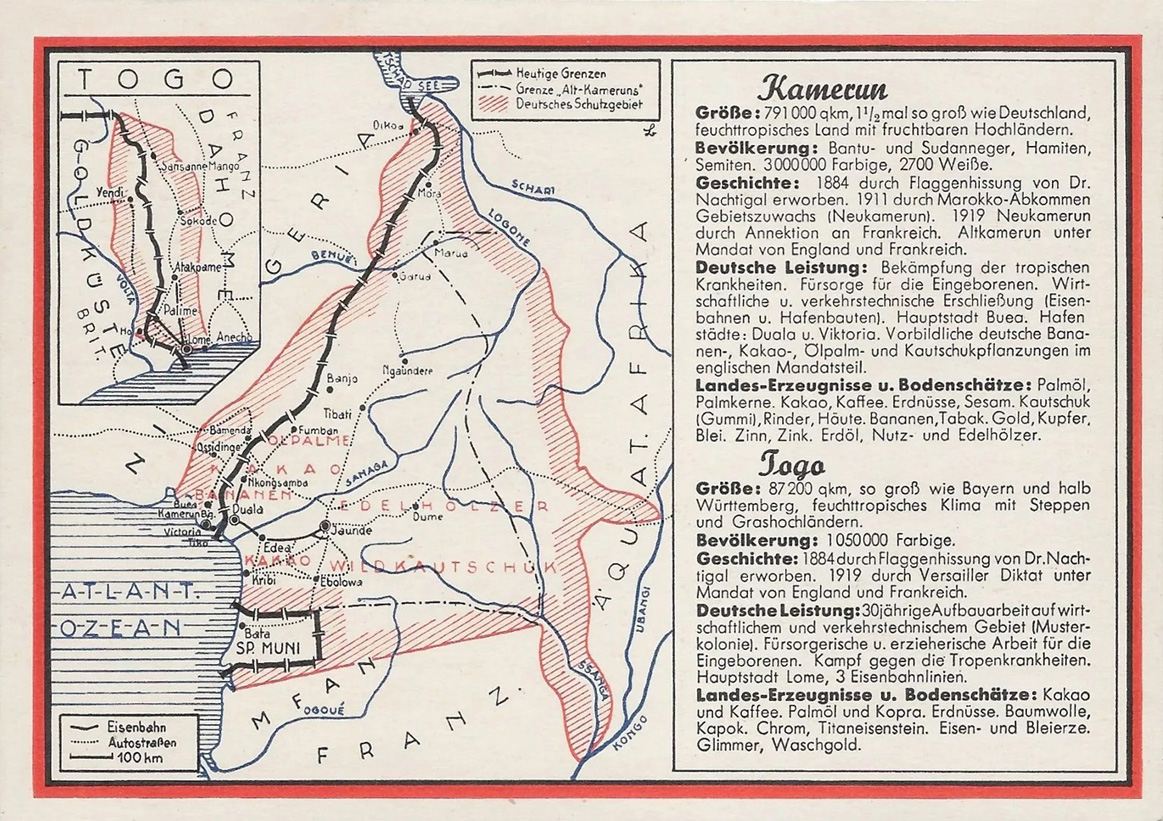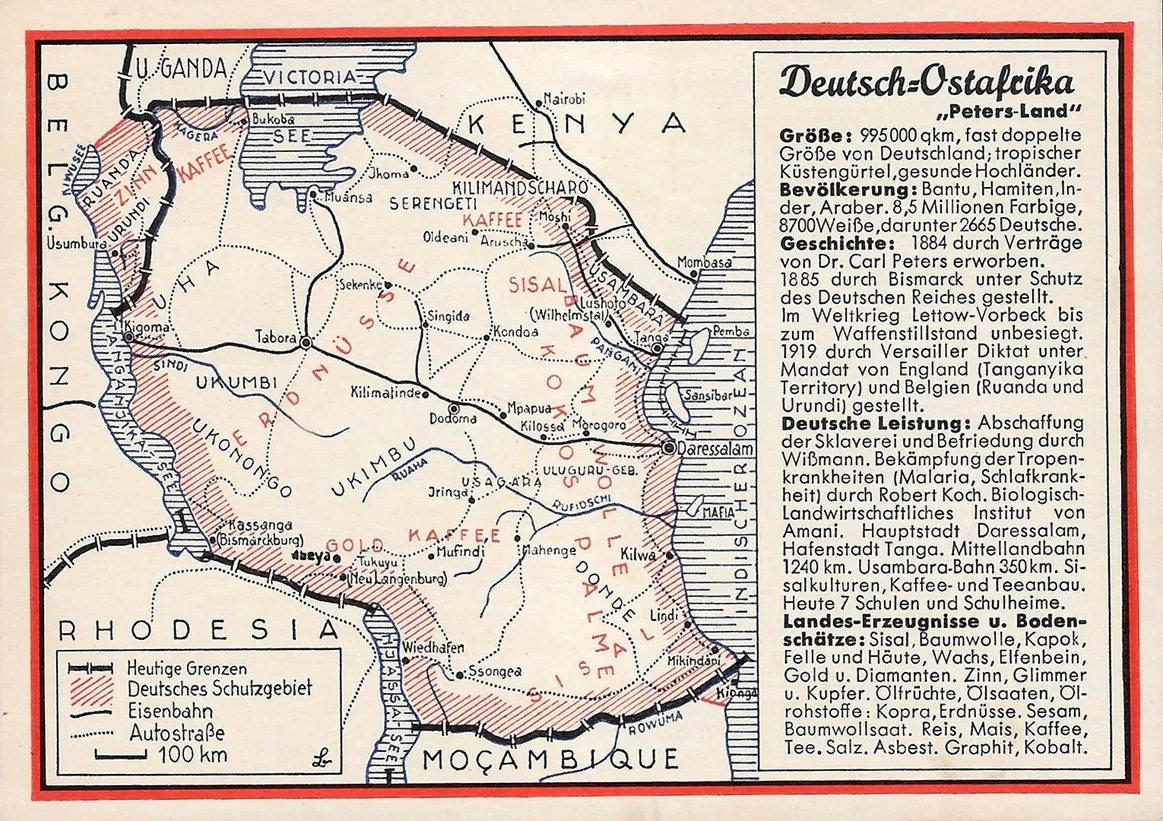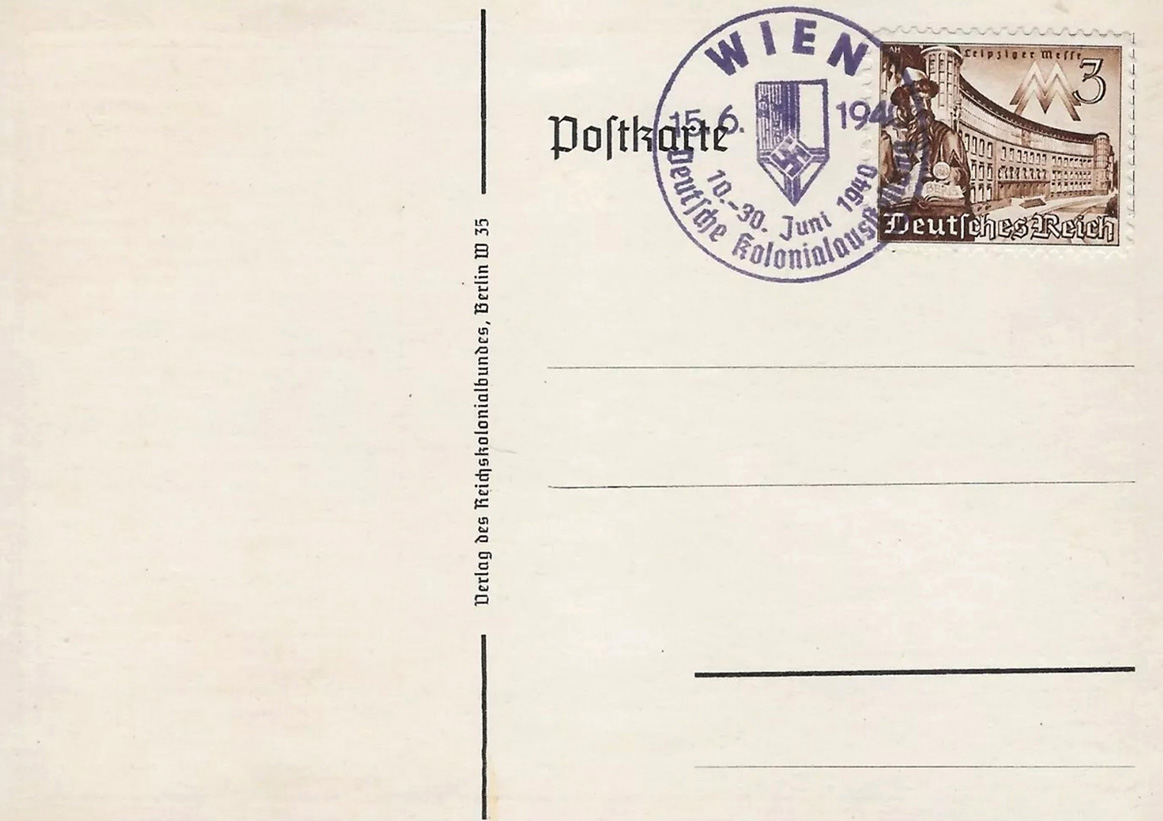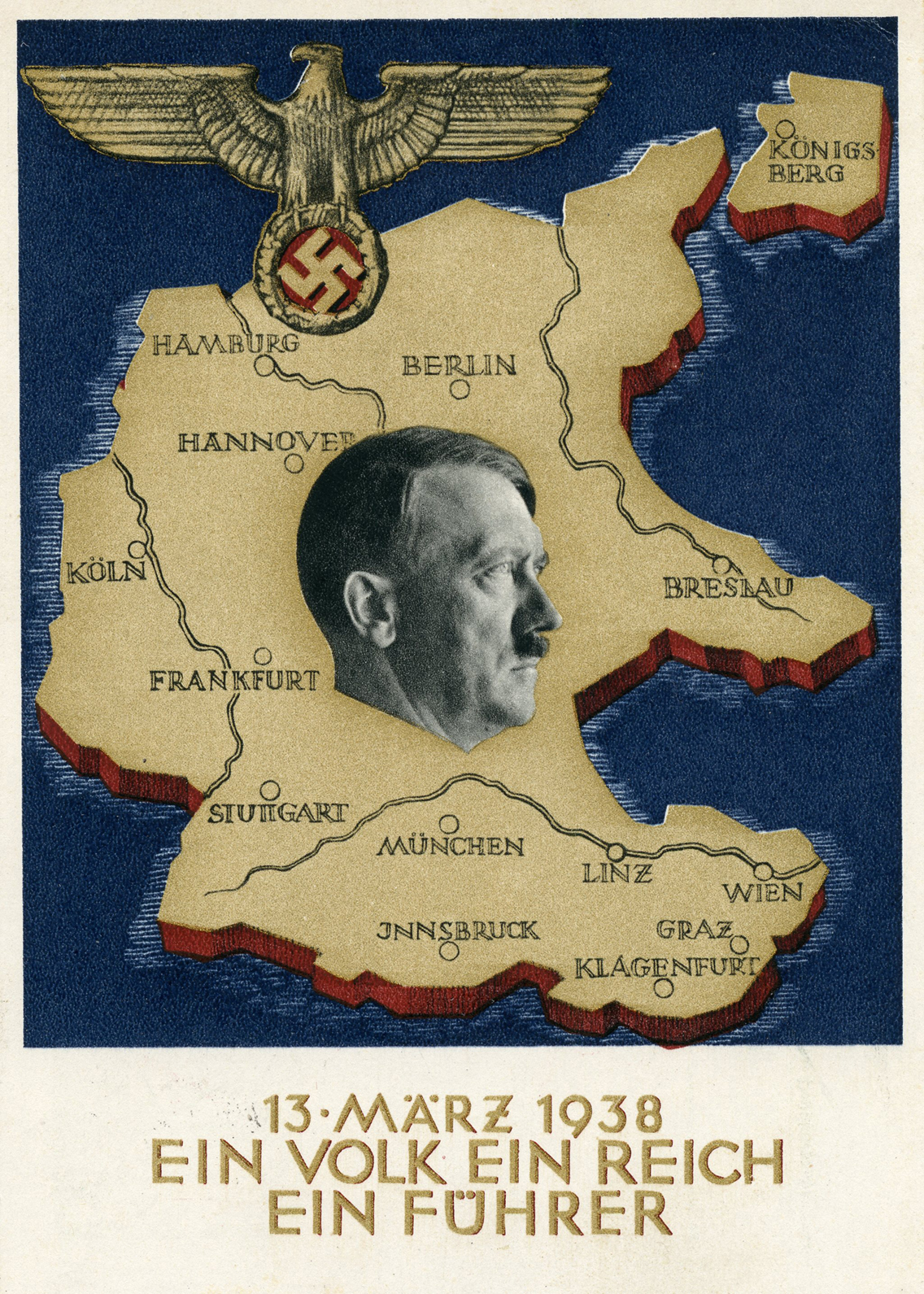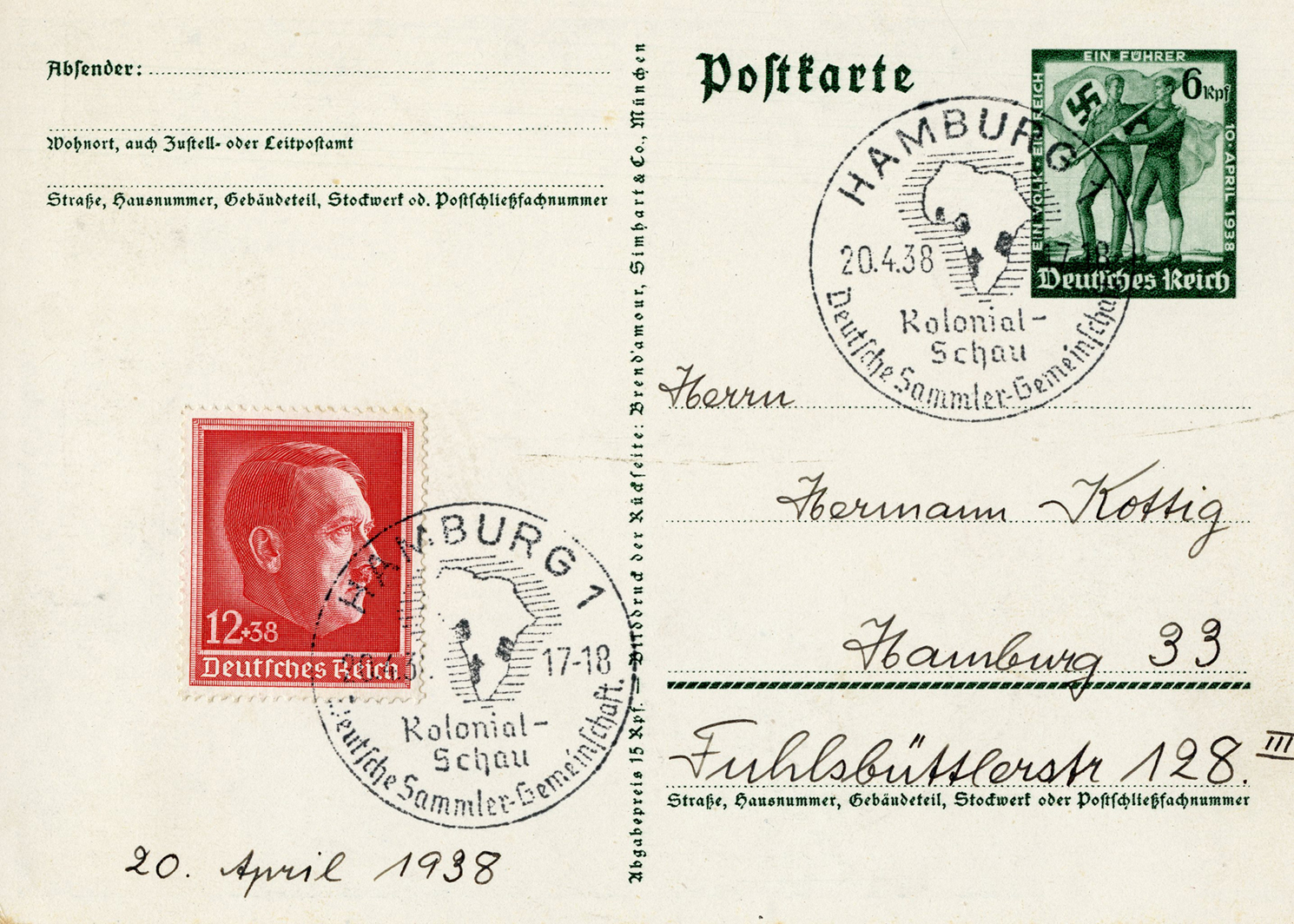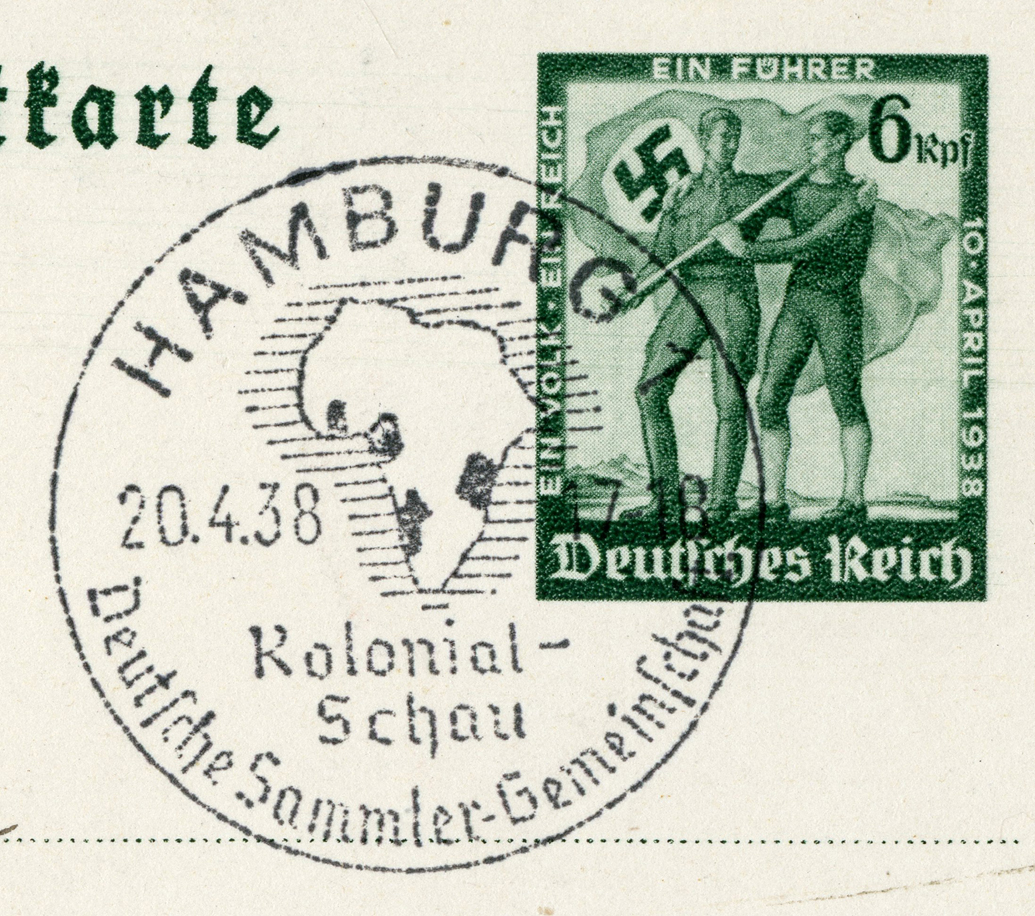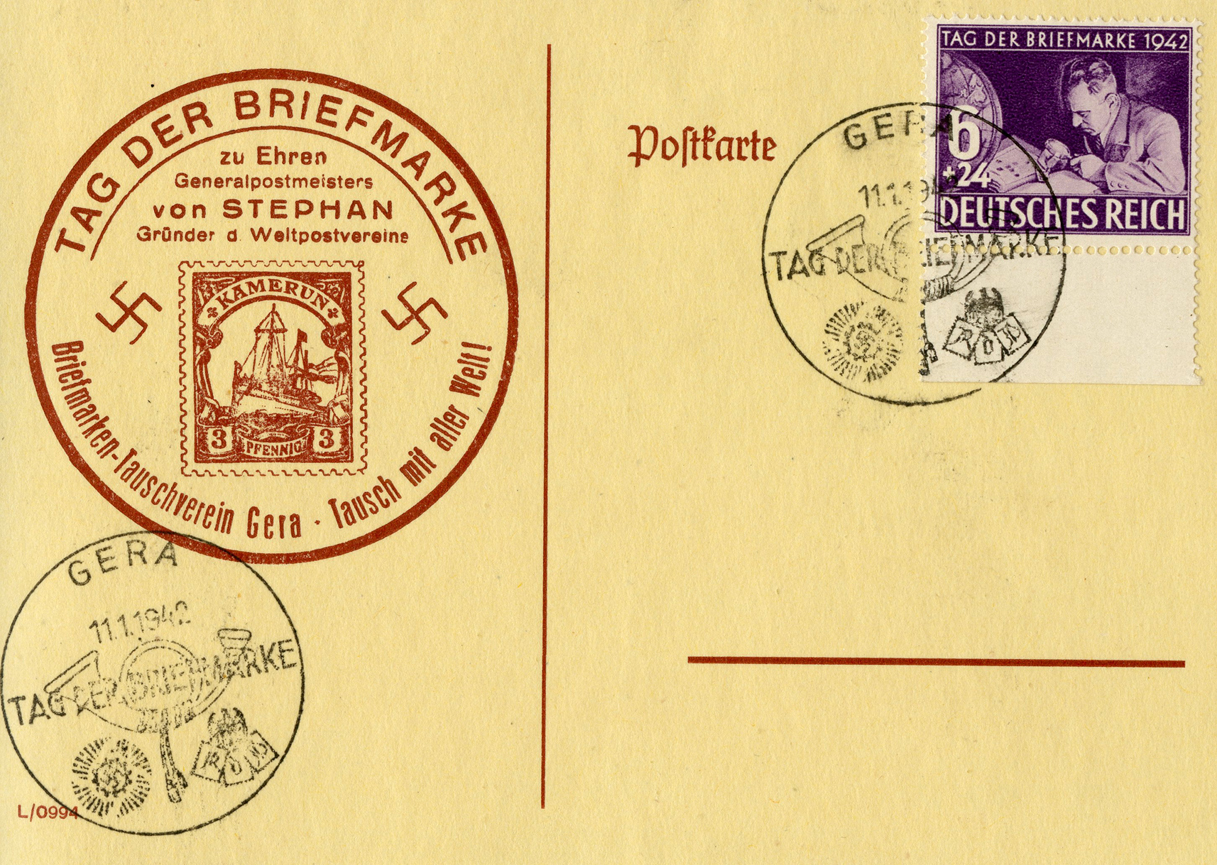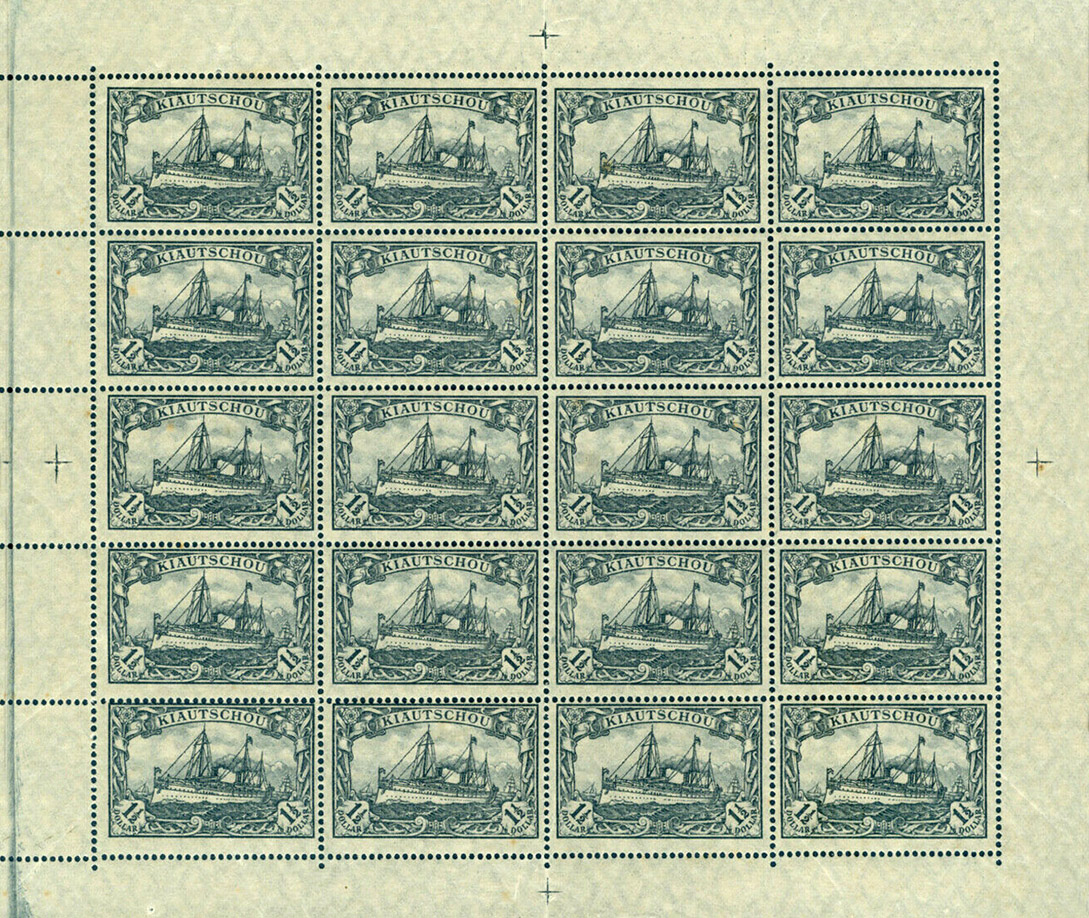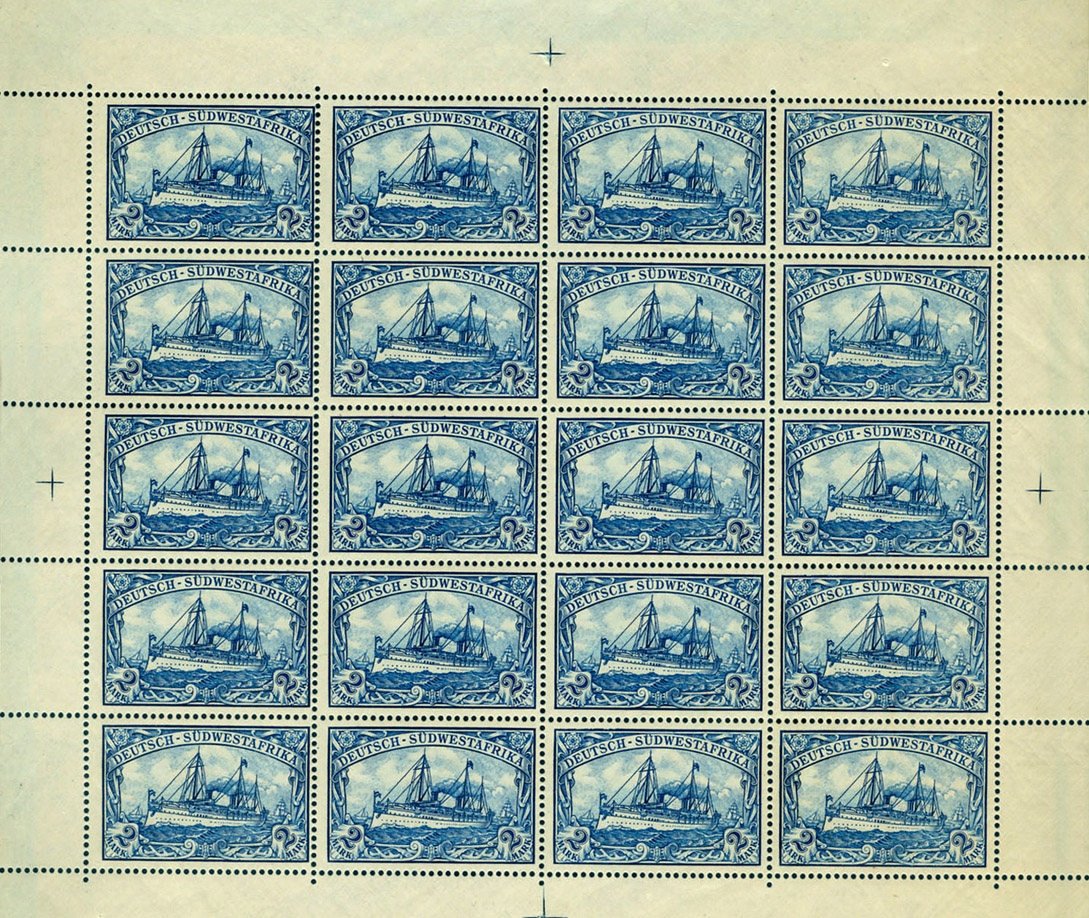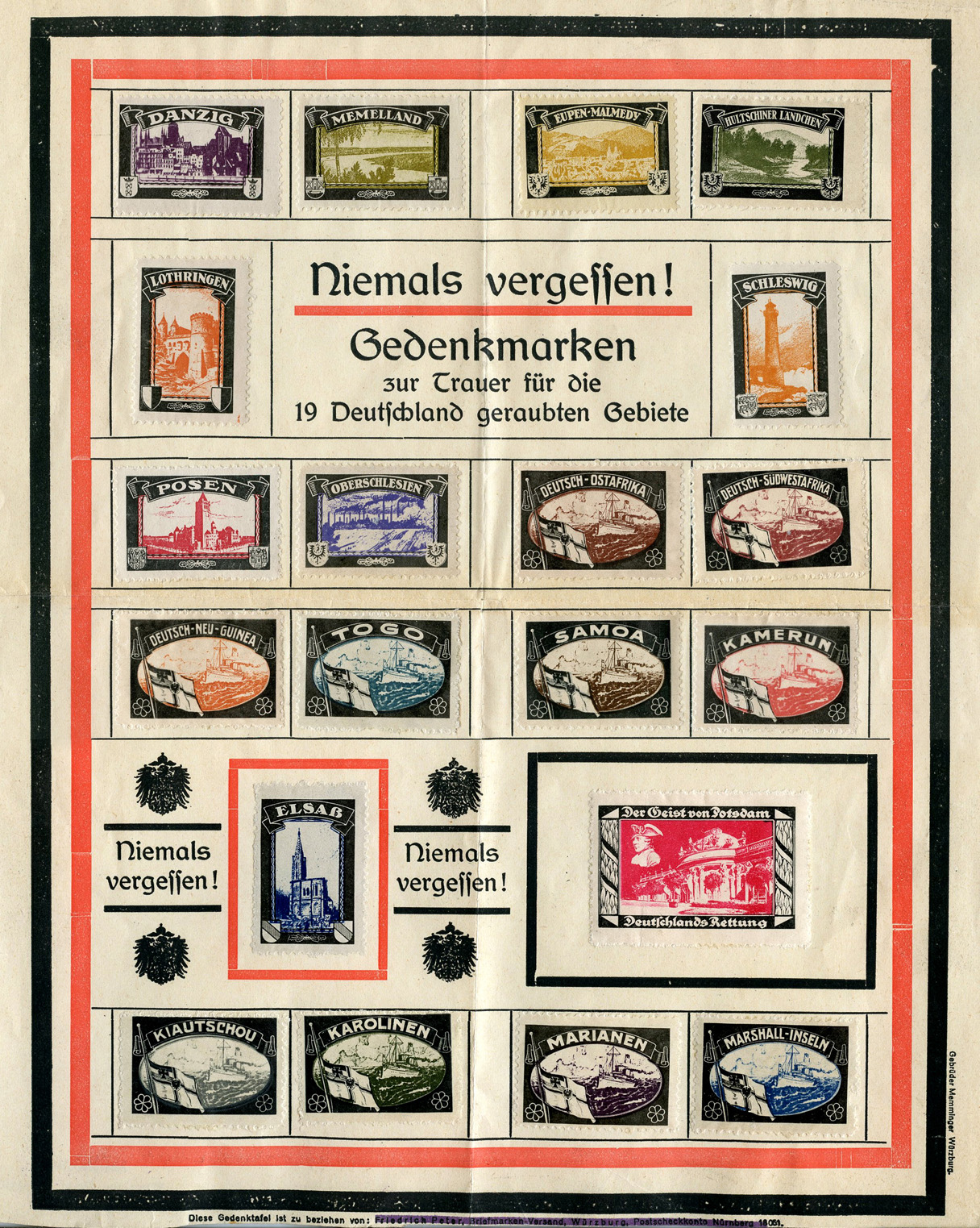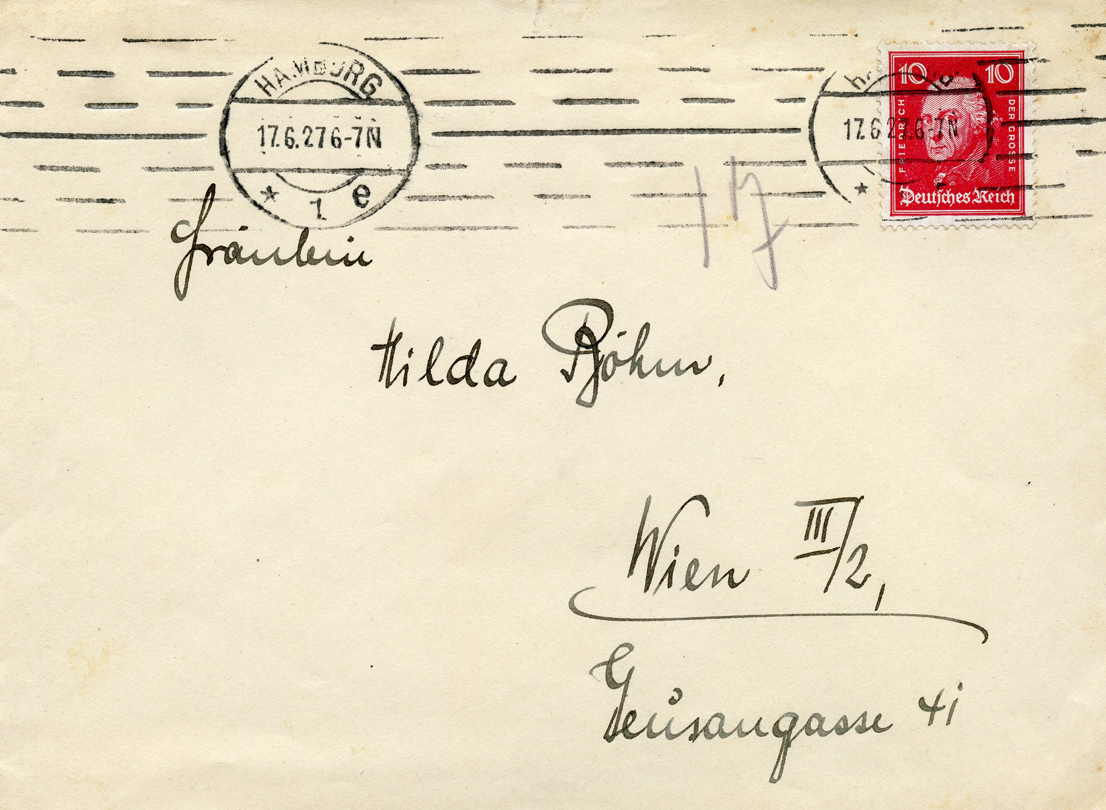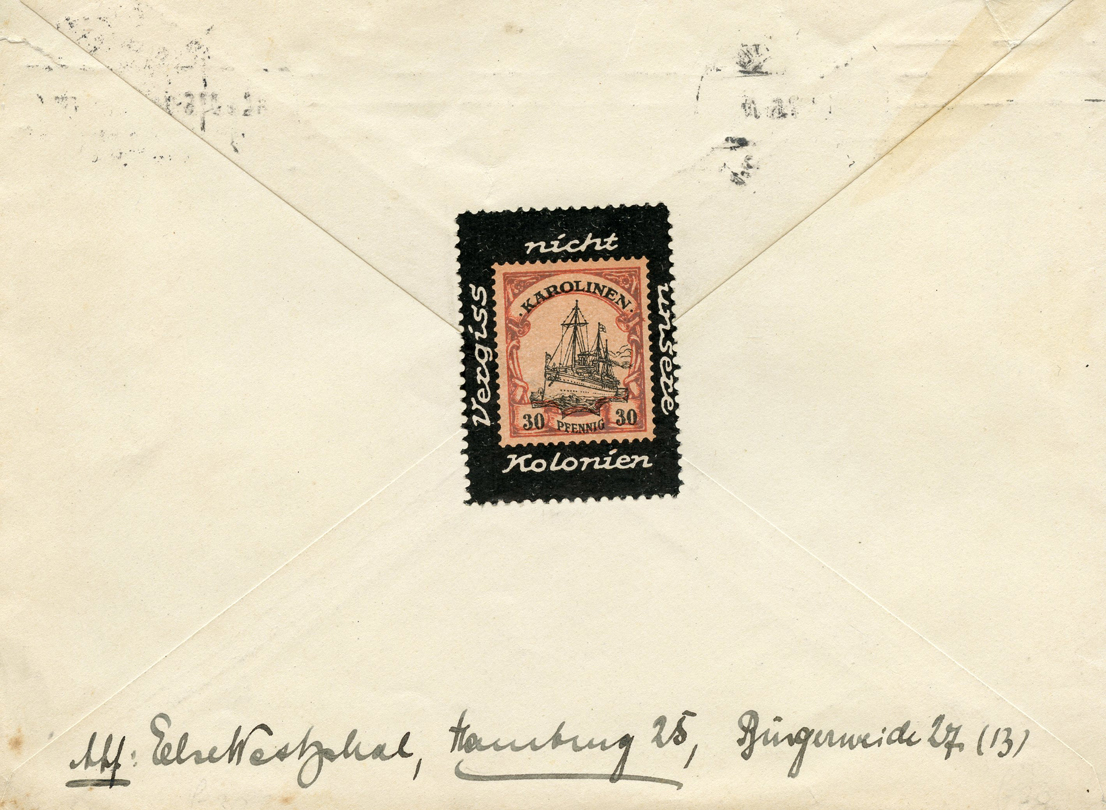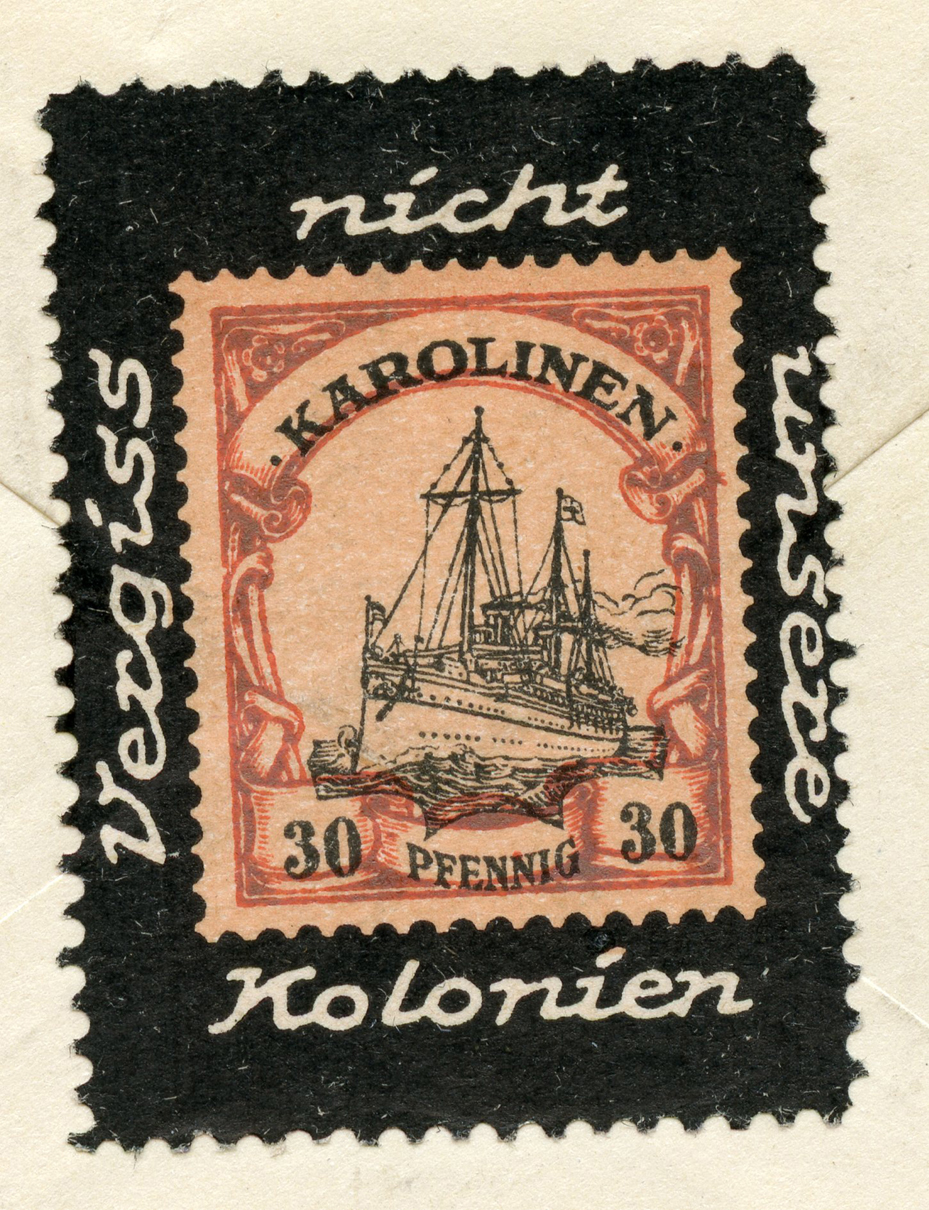[Above: Booklet titled: 'What Germany lost in her colonies'.]
[Above: Booklet titled: 'What do we need to know about our colonies'.]
[Above: Reverse of booklet.]
[Above: This is a member of a German Youth Group in Africa.]
[Above: This book is called 'Raubstaat England' or 'The Robber State England'.]
[Above: Postcard. 'Auch hier liegt unser lebensraum' = 'Here also lies our living space']
[Above: Text from back of postcard with quote from Adolf Hitler.]
[Above: Different version than that above.]
[Above: Postcard. 'Mitteldeutsche kolonialschau' = 'Central German colonial show', 9-29 through 10-13-1940]
[Above: Postcard.]
[Above: Postcard reverse. Used in Vienna showing Adolf Hitler, Hermann Göring and Freikorps and Kolonialbund leader Ritter von Epp, used 6-14-1940]
[Above: Postcard. 'Wie lange noch ohne kolonien?' = 'How long without colonies?']
[Above: Postcard reverse.]
[Above: Postcard. 'Der Reichskolonialbund ruft auch Dich!
' = 'The Reichskolonialbund also calls you!']
[Above: Here is a postcard with a Reichskolonialbund label attached.]
[Above: Here is an envelope with Reichskolonialbund postmarks from June 30, 1940.]
[Above: Here is a postcard with Reichskolonialbund postmarks from November 30, 1940.]
[Above: Close-up.]
[Above: Postcard showing lost German colonies.]
[Above: Colonial Day cancel from July 30, 1938.]
[Above: Colonial Day cancel from August 1, 1938.]
[Above: Colonial Show cancel from April 20, 1938.]
[Above: Postcard from the 1939 German Colonial Exhibition.]
[Above: Postcard from the 1937.]
[Above: Close-up of cancel.]
[Above: Better image of the cancel, but smaller.]
[Above: This is a rather odd colonial postcard from the Reichskolonialbund.]
[Above: Reverse.]
[Above: 'Askari Bugler from German East Africa' and 'Askari-Company in Dar-es-salam on Parade'.]
[Above: Here is an envelope addressed to the NSDAP Reichs Colonial Office.]
[Above: This special envelope, from January 1937, shows Germany's 'lost colonies' (stolen) and advertises a 'colonial stamp show'. It also has a special cancel from Berlin-Pankow (Pankow is the most populous and the second-largest borough by area of Berlin).]
[Above: Close-up of cancel.]
[Above: Here is a better example of the cancel.]
[Above: A late war lost colonies envelope canceled on July 17, 1944. It says:
'Deutschland,
(Germany,
It is reminding Germans of the colonies that were stolen from them after WWI.]]
[Above: Close-up]
[Above: Close-up]
[Above: Postcard.]
[Above: Postcard.]
[Above: Postcard. Note the scarification on his face]
[Above: Postcard.]
[Above: Postcard.]
[Above: Embossed Happy New Year postcard from German Southwest Africa, 1906.]
[Above: Another embossed Happy New Year postcard from German Southwest Africa, 1908.]
[Above: Postcard advertising the 'Mitteldeutsche Kolonialschau' (Central German Colonial Show). Front.]
[Above: Postcard reverse.]
[Above: Postcard from the Reichskolonialbund (Reich Colonial Organization). Front.]
[Above: Postcard reverse.]
[Above: Postcard from the Reichskolonialbund (Reich Colonial Organization). Front.]
[Above: Close-up.]
[Above: Postcard reverse.]
[Above: Postcard from the Reichskolonialbund (Reich Colonial Organization). Front.]
[Above: Close-up.]
[Above: Postcard reverse.]
[Above: Anschluss postcard with Hamburg colonial show cancel from April 20, 1938. Front.]
[Above: Reverse.]
[Above: Close-up.]
[Above: Stamp Day postcard showing old Kamerun stamp, January 11, 1942.]
[Above: This is the case (front/back) of a fairly rare six postcard set. Click to enlarge.]
[Above: 1934 German postage stamps mourning Germany's lost colonies.]
[Below: These are Reichskolonialbund (Reich Colonial League)
dues stamps.]
[Above: Stamp booklet for the German East Africa stamps - front.]
[Above: Stamp booklet for the German East Africa stamps - back.]
[Above: 1910 stamp booklet (2 marks) for the German Southwest Africa stamps - back.]
[Above: Official postage stamps from German East Africa. These are rare 'Specimen' versions. Circa 1901.]
[Above: Part of stamp sheet from German South-West Africa showing title selvage. Circa 1901.]
[Above: Half pane from a German East Africa stamp booklet showing advertising.]
[Above: Half pane from a German East Africa stamp booklet showing advertising.]
[Above: Half pane from a German East Africa stamp booklet showing advertising.]
[Above: A pane from a German East Africa stamp booklet showing advertising.]
[Above: Rare sheet of Germany colony Kiautschou - 1 and 1/2 Dollar. Kiautschou was a bay leased from China from 1898 to 1914. Click to enlarge.]
[Above: Rare sheet of Germany colony Kiautschou - 2 and 1/2 Dollar. Click to enlarge.]
[Above: Rare sheet of Germany colony in Southwest Africa - 2 Marks. Click to enlarge.]
[Above: This is a German sheetlet from 1978 commemorating the 75th year of the release of the German Southwest Africa stamps.]
[Above: Stamps from private German East African Sea Post. Because the private contract expired these stamps were never used. Circa 1892.]
[Above: Rare stamp sheet for the above stamps.]
[Above: German East Africa fiscal revenue.]
[Above: German East Africa fiscal revenue.]
[Above: German East Africa fiscal revenue.]
[Above: German East Africa fiscal revenue.]
[Above: German Southwest fiscal revenue.]
[Above: German East Africa official postal stationery. Crude and rare.]
[Above: German Southwest Africa Feldpost sent April 22, 1905 and received in Potsdam, Germany on May 28, over a month later.]
[Above: Close-up.]
[Above: Back.]
[Above: German postal administration in Swahililand, Lamu/Zanzibar. Circa 1889. Extremely rare!]
[Above: German postal administration in Swahililand. Circa 1889. The so-called Malakote issue. This is a private issue, pure fantasy, yet still quite rare and pricey.]
[Above: German postal administration in Swahililand. Circa 1889. The so-called Malakote issue. This is a private issue, pure fantasy, yet still quite rare and pricey.]
[Above: This is a postal vignette that basically says 'The goal of our enemy is to rob our colonies'.]
[Above: These are German stamps from the 1920s but with a private overprint.
[Above: Three high dollar postage stamps from German Kiautschou.]
[Above: In 1884, Germany declared a region including present-day Togo as a protectorate called Togoland. Like all of her possessions and colonies, the Versailles Treaty stripped it away and gave it France.]
[Above: Here is an incredible envelope from the German colony of Togo (the stamps were issued in 1897-1899). It was stolen from Germany by French and English troops on August 26, 1914. - FRONT.]
[Above: Here is an incredible envelope from the German colony of Togo - BACK.]
[Above: This is an unaddressed envelope showing the postage stamps of the German African colonies.]
[Above: These are 'Mourning' vignettes for each of Germany's colonies stolen from them with the Versailles Treaty.]
[Above: More 'Mourning' vignettes, this time for each of Germany's regions stolen from them with the Versailles Treaty.]
[Above: 'Mourning' vignettes on an unaddressed philatelic envelope from October 18, 1922. Check out that spicy cancel!]
[Above: 'Mourning' sheet. Click to enlarge.]
[Above: This is stamped on the reverse of the 'Mourning' sheet above.]
[Above: This is another 'Mourning' sheet. Note that this is a variation, it is missing the eagles and the 'Der Geist von Potsdam' (The Ghost of Potsdam) stamp.]
[Above & below: Pages showing the 'Mourning' stamps with pictures and descriptions.]
[Above: This envelope was postmarked in Hamburg on June 17, 1927. Now let's look at the reverse...]
[Above: A lost colonies vignette that is many times rarer than the ones above. This says: 'Vergiss nicht unsere Kolonien' (Don't forget our colonies).]
[Above: Close-up. This vignette shows the Caroline Islands, which Spain sold to the German Empire in 1899. I'm sure this set has the other lost colonies as well, but they are pretty rare so we'll probably never see them.]
[Above: This is a five cent coin (about the size of an American nickel) from Kiauchau, 1909. This was a German leased territory beginning in 1898. The Bay of Kiauchau is south-east of Peking (Beijing). Although it was officially leased by the Chinese government for 99 years, it was stolen from Germany with the rest of its territories. On November 7, 1914 it was forced to surrender.]
[Above: This is a copper German East African coin from 1890.]
[Above: This is a silver one Rupie German East African coin from 1890.]
[Above & below: Here are some crude examples of German East African notes from World War I - One Rupie Note 1917. Front/back.]
[Below: German East Africa (today Tanzania & Burundi) - FRONT]
[Below: German East Africa (today Tanzania & Burundi) - BACK]
[Below: Kiauchau (today China) - FRONT]
[Below: Kiauchau (today China) - BACK]
[Below: German New Guinea (today New Guinea)- FRONT]
[Below: German New Guinea (today New Guinea) - BACK]
[Below: Samoa - FRONT]
[Below: Samoa - BACK]
[Below: German Southwest Africa (today Namibia) - FRONT]
[Below: German Southwest Africa (today Namibia) - BACK]
[Below: Togo (today Togolese Republic) - FRONT]
[Below: Togo (today Togolese Republic) - BACK]
[Below: Cameroon (today Republic of Cameroon) - FRONT]
[Below: Cameroon (today Republic of Cameroon) - BACK]
[Below: The Caroline Islands & The Mariana Islands (today the Carolina Islands are divided between the Federated States of Micronesia in the eastern part, and Palau at the extreme western end. The Mariana Islands are divided into two jurisdictions of the United States: the Commonwealth of the Northern Mariana Islands and, at the southern end of the chain, the territory of Guam.) - FRONT]
[Below: The Caroline Islands & The Mariana Islands (today the Carolina Islands are divided between the Federated States of Micronesia in the eastern part, and Palau at the extreme western end. The Mariana Islands are divided into two jurisdictions of the United States: the Commonwealth of the Northern Mariana Islands and, at the southern end of the chain, the territory of Guam.) - BACK]
[Below: Kiautschau- FRONT]
[Below: Togo - FRONT]
[Below: German East Africa - FRONT]
[Below: Cameroon - FRONT]
[Below: German South Sea Islands - Kaiser-Wilhelmsland (Emperor William's Land) was part of German New Guinea - FRONT]
[Below: All of these Notgeld have the same backs, shown here, the only difference is the Roman numeral, in this case 'I'. This is series A - BACK]
[Below: Karl Woermann (July 4, 1844 – February 4, 1933) was a German art historian and museum director. - FRONT]
[Below: Hermann von Wissmann (September 4, 1853 – June 15, 1905), was a German explorer and administrator in Africa. - FRONT]
[Below: Carl Peters (September 27, 1856 – September 10, 1918), was a German colonial ruler, explorer, politician and author. - FRONT]
[Below: Franz Adolf Eduard Lüderitz (July 16, 1834 – October ?, 1886) was a German merchant and the founder of German South West Africa, Germany's first colony. - FRONT]
[Below: Paul Emil von Lettow-Vorbeck (March 20, 1870 – March 9, 1964), nicknamed ;the Lion of Africa', was a general in the Imperial German Army and the commander of German troops in the German East Africa campaign. During WWI he performed miraculous feats in Africa, using 14,000 troops (most of them black Africans) tying down a gigantic force of 300,000 enemy soldiers! His feats have been rightfully described as 'the greatest single guerrilla operation in history, and the most successful.' - FRONT]
[Below: Otto von Bismarck (April 1, 1815 – July 30, 1898), was a German statesman and diplomat and an all-around legend. - FRONT]
[Below: All of these Notgeld have the same backs, shown here, the only difference is the Roman numeral, in this case 'I'. This is series B - BACK]
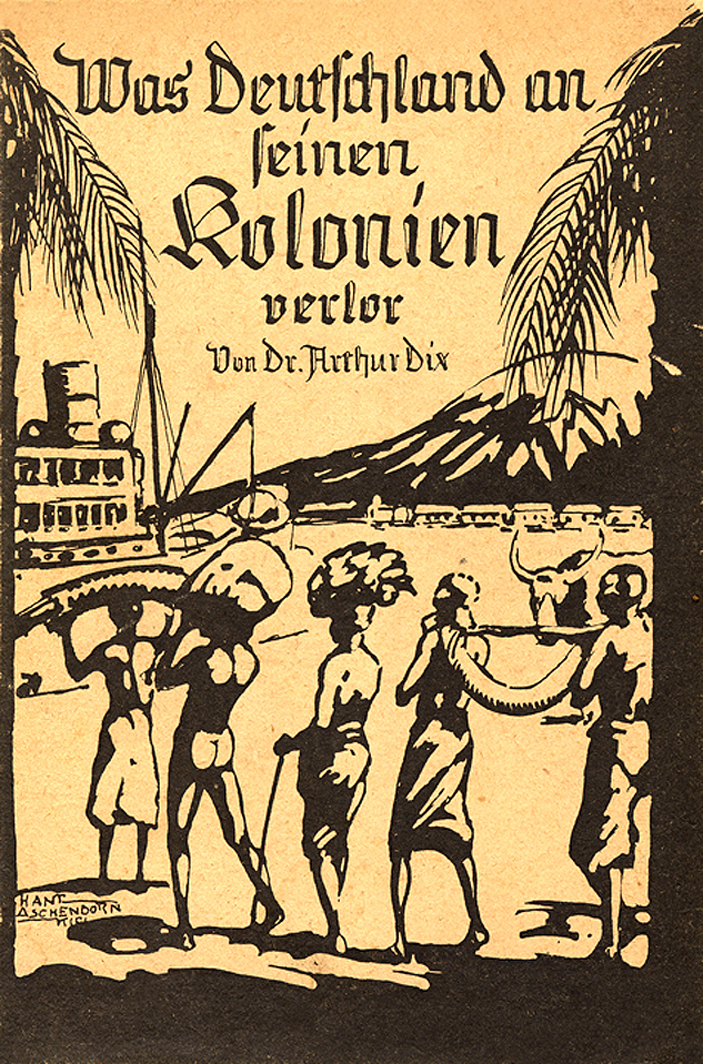
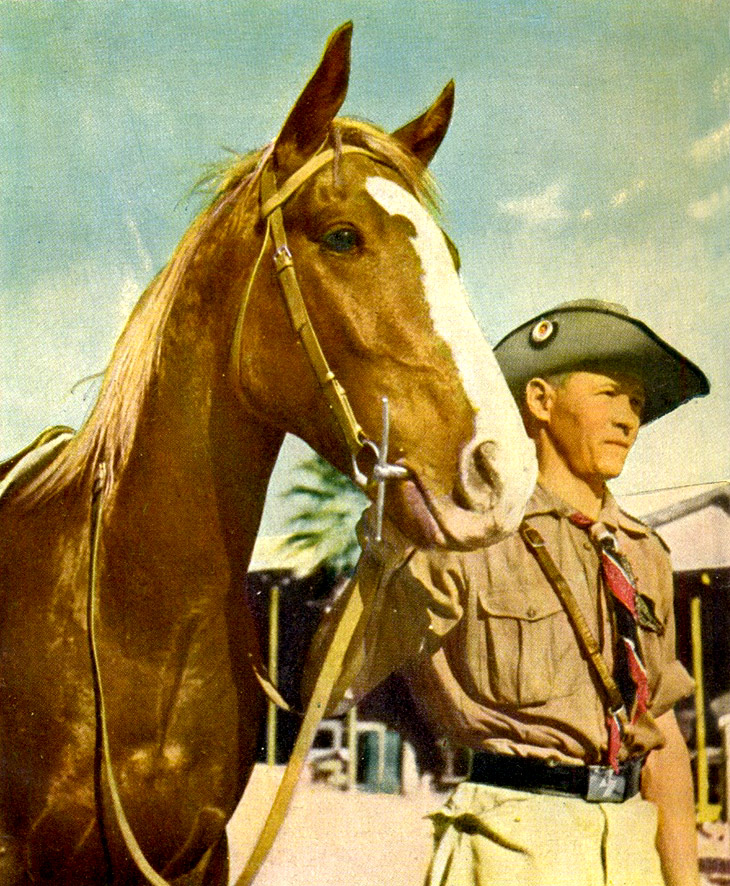
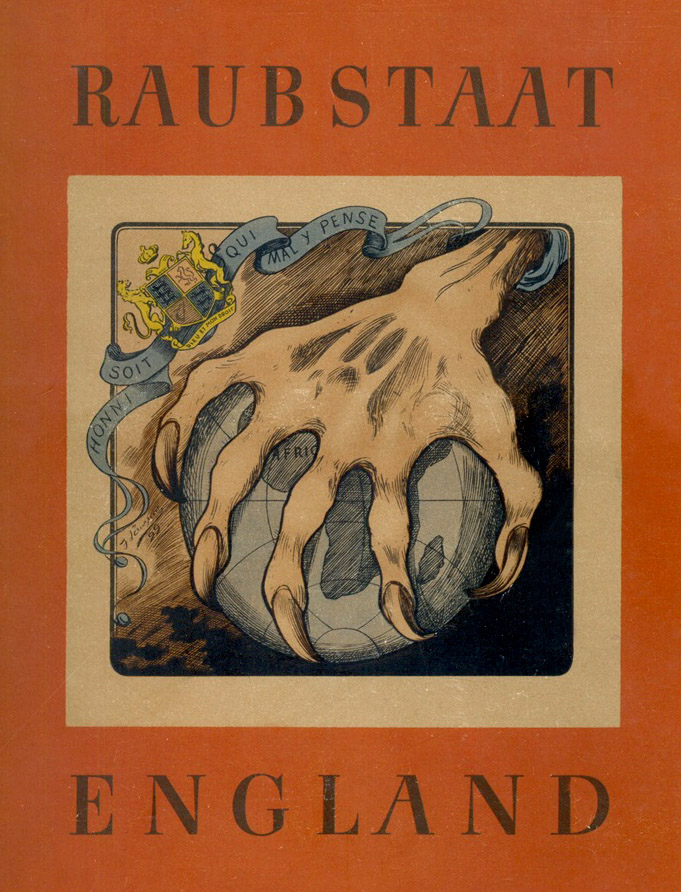
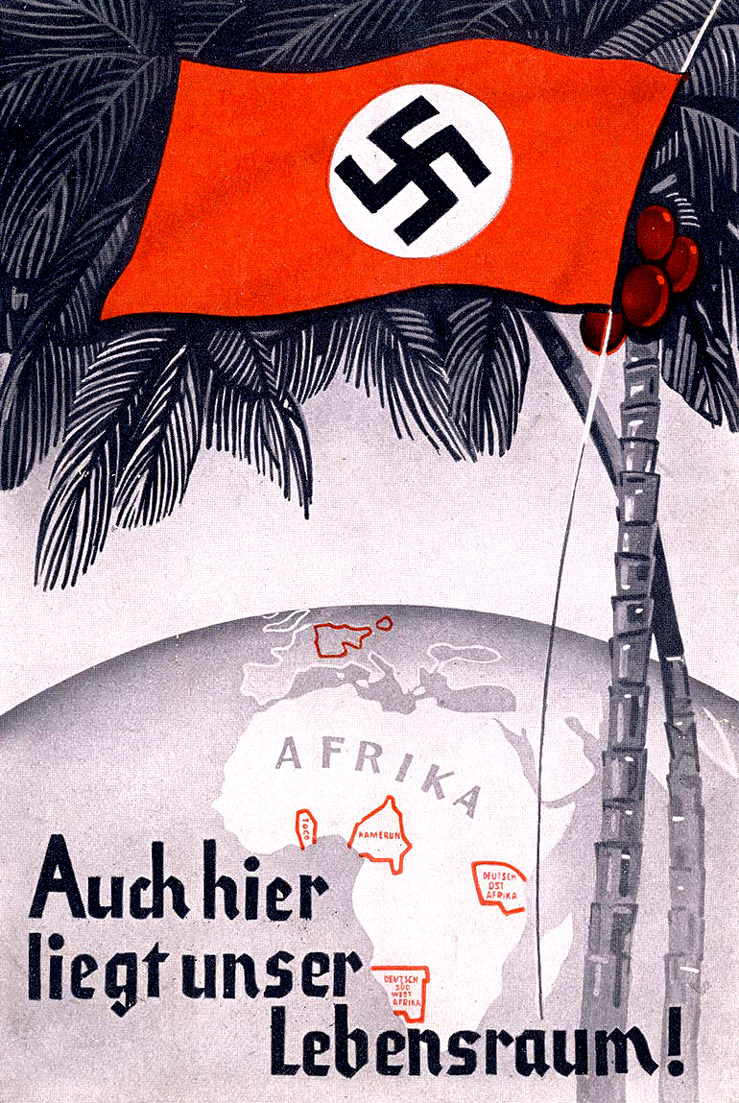
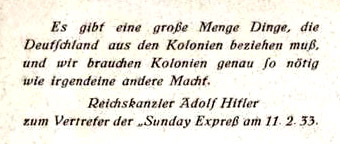
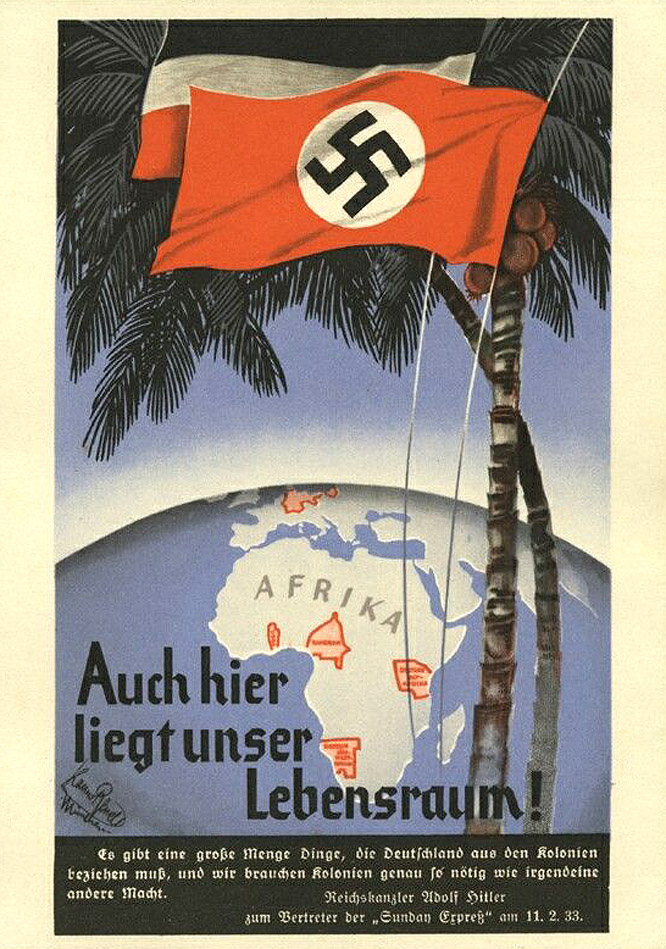
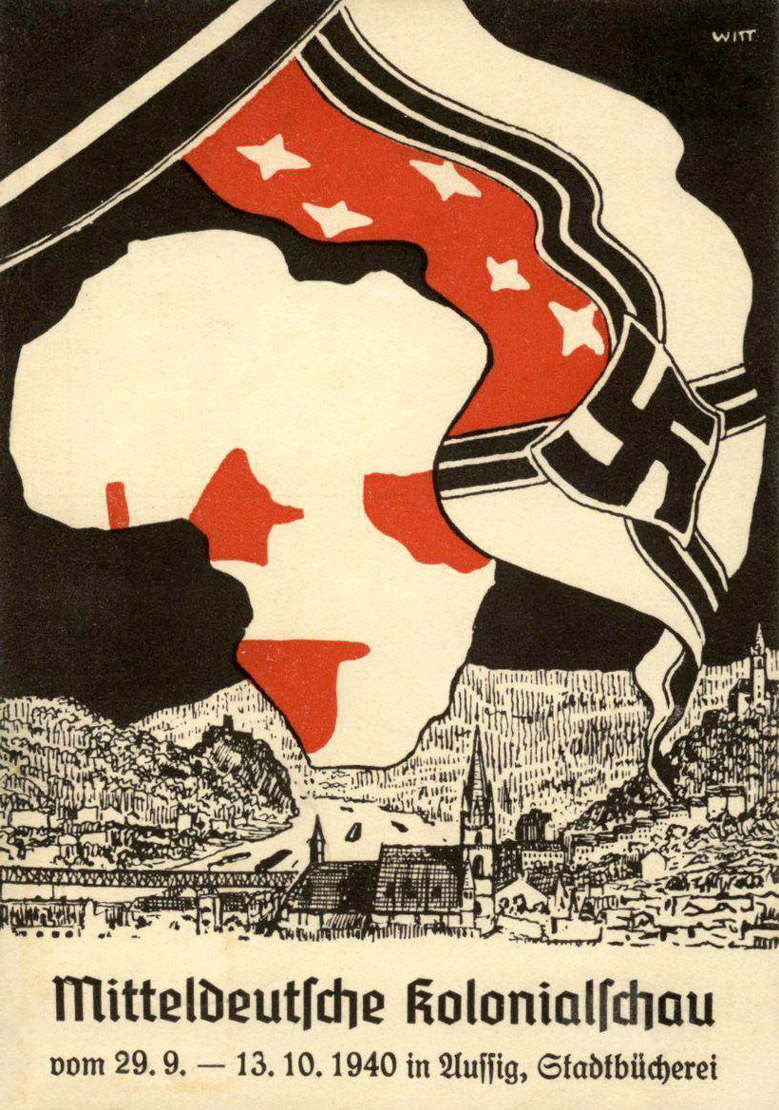
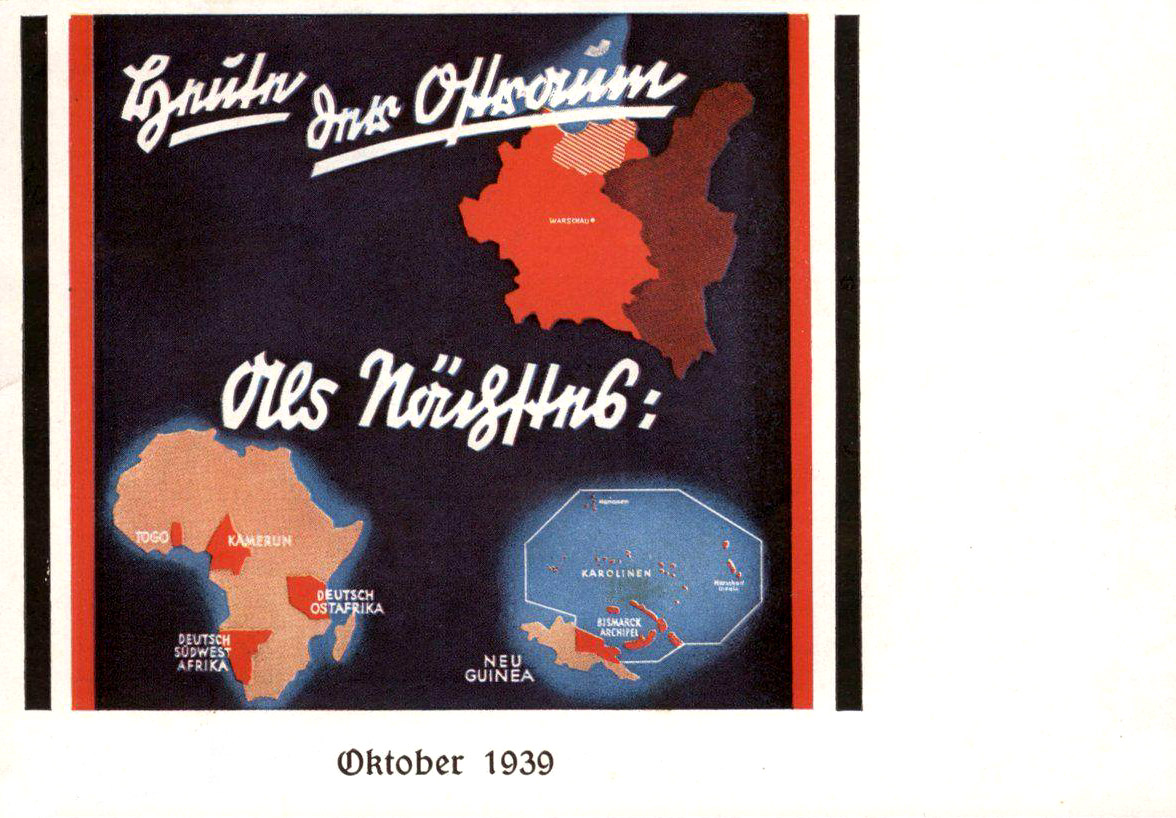
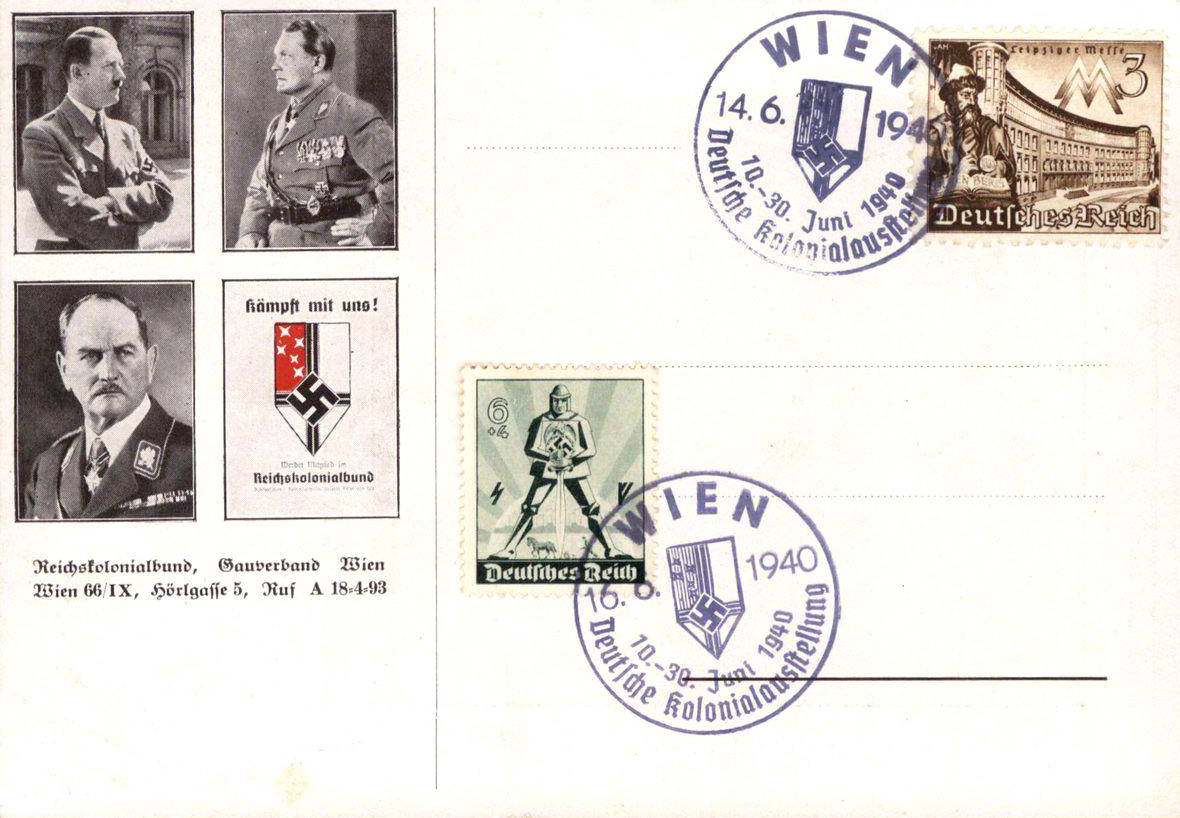
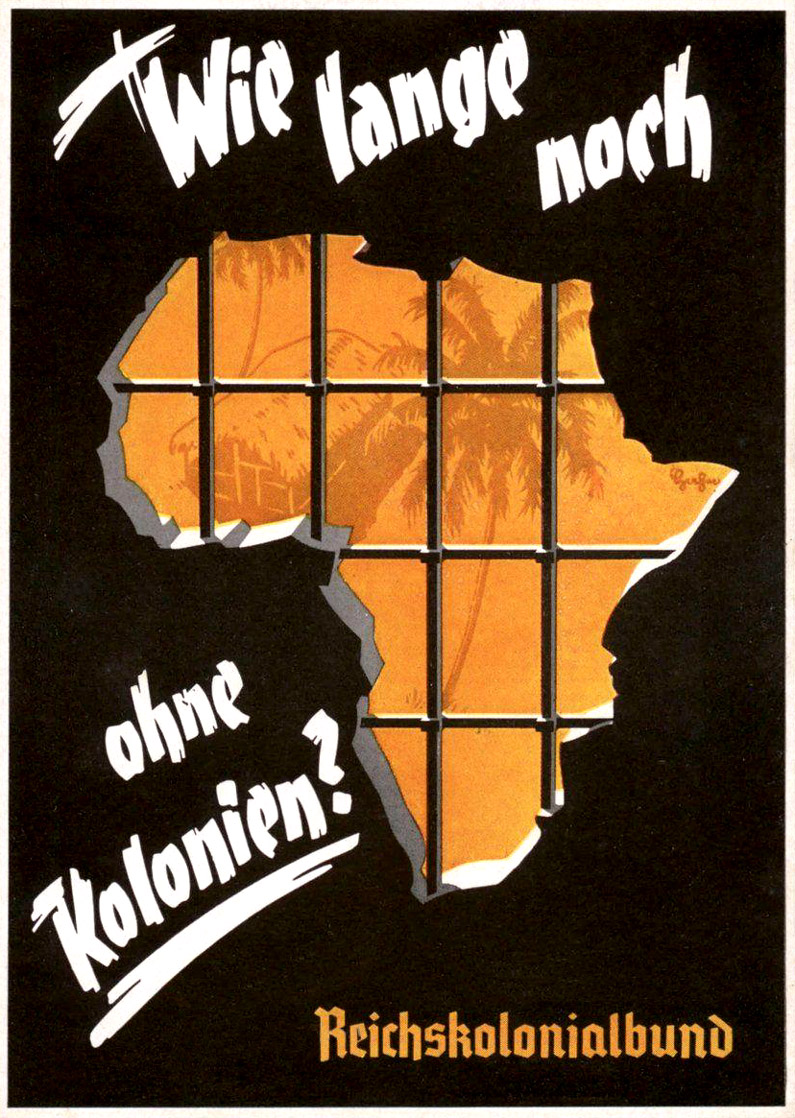
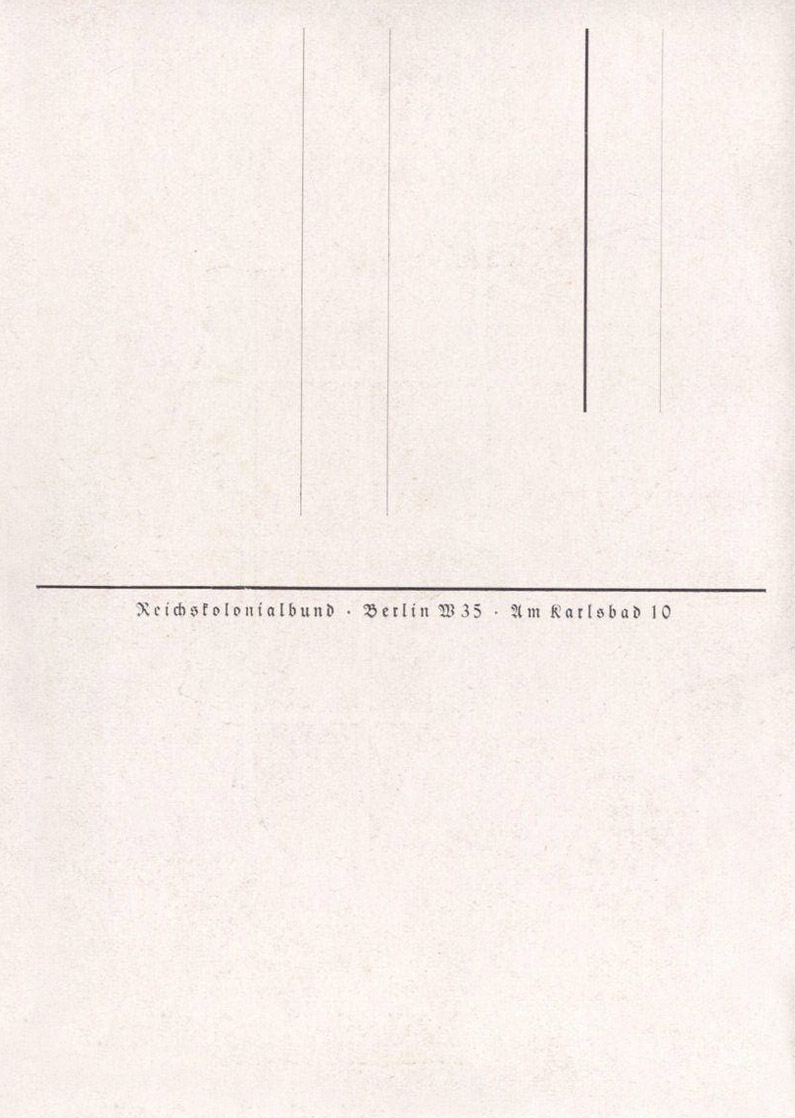
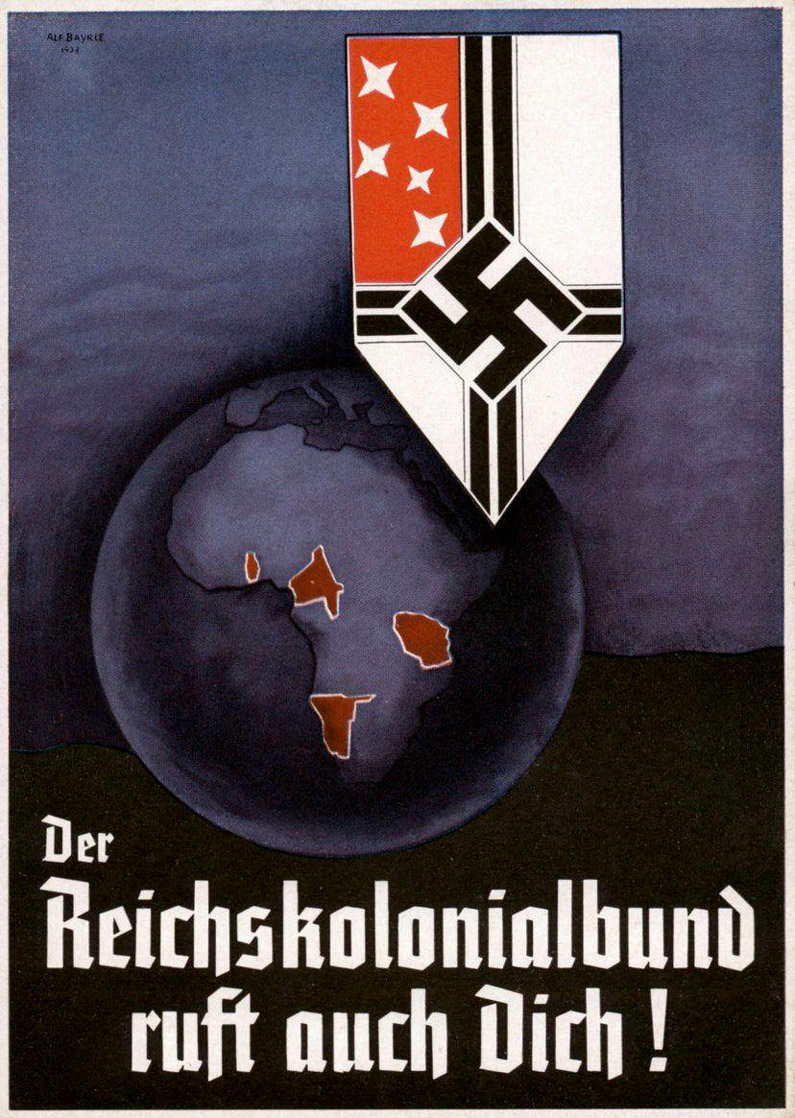
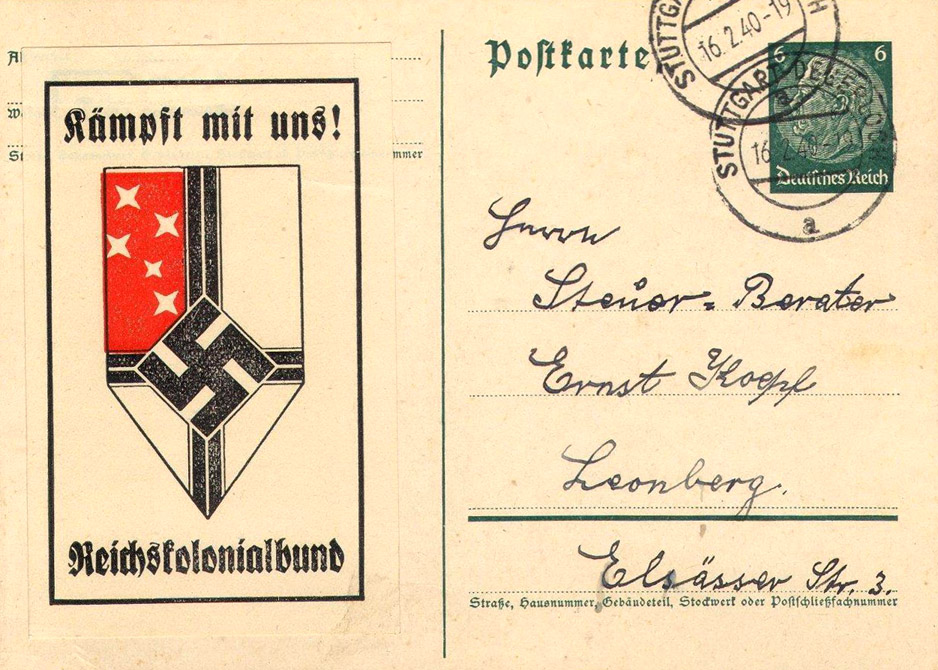
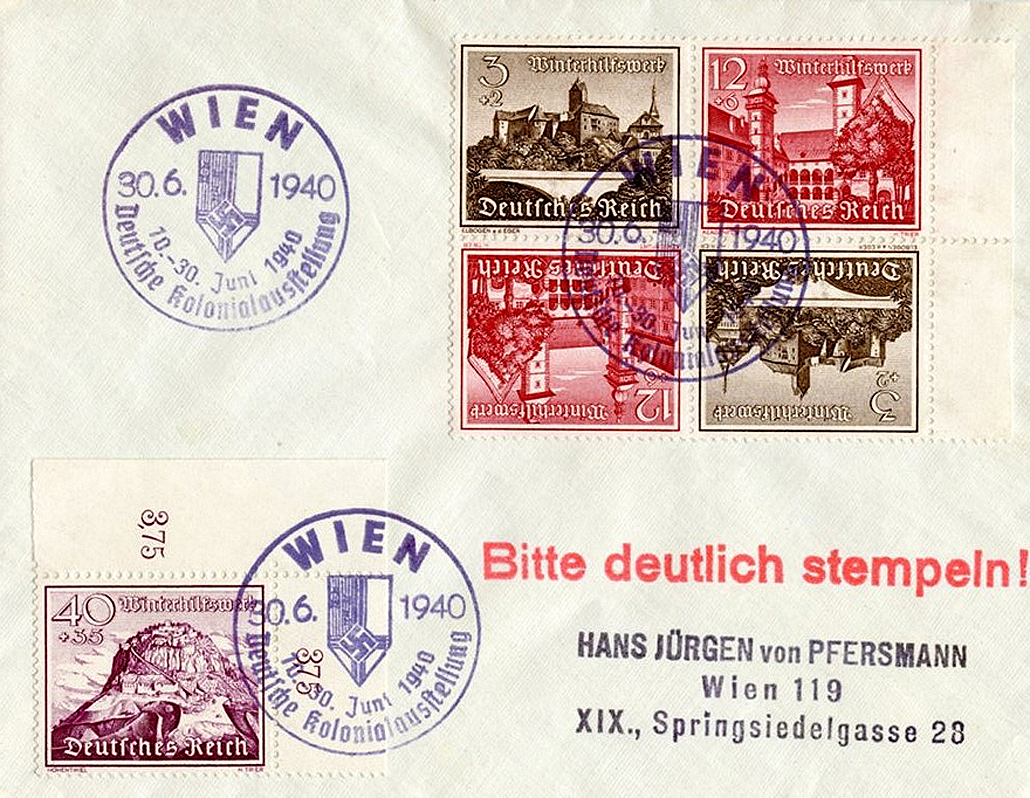
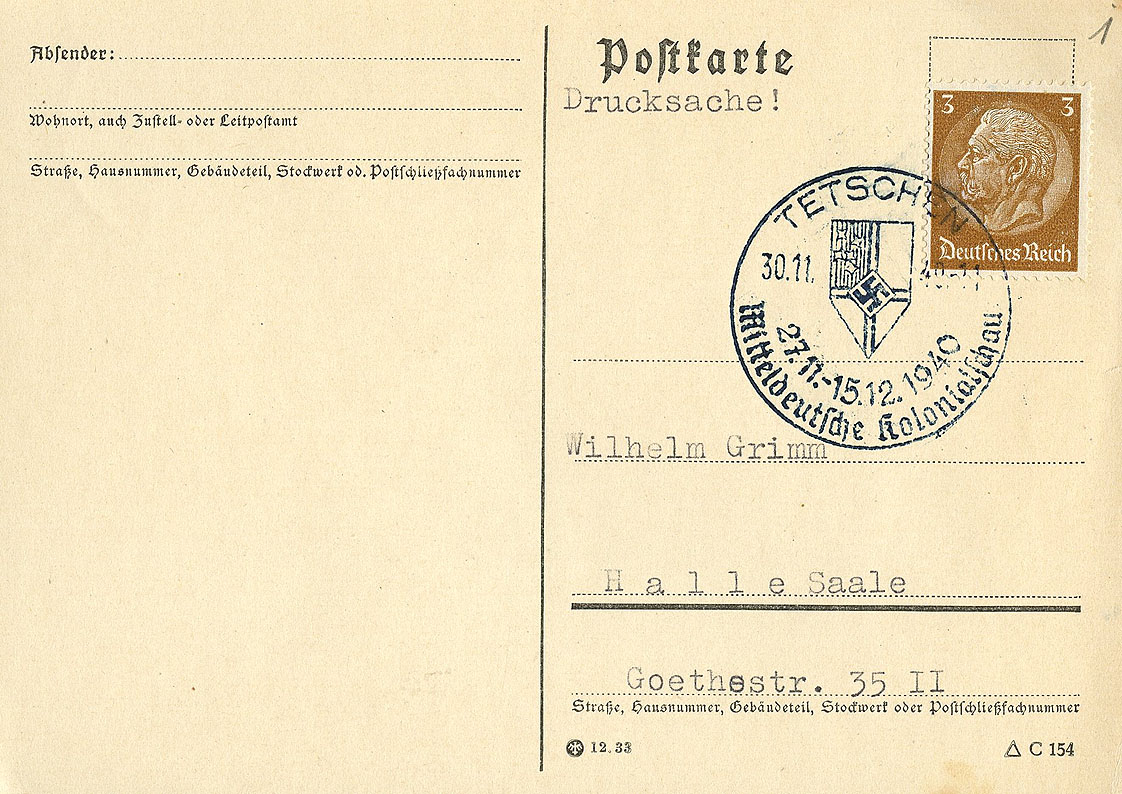
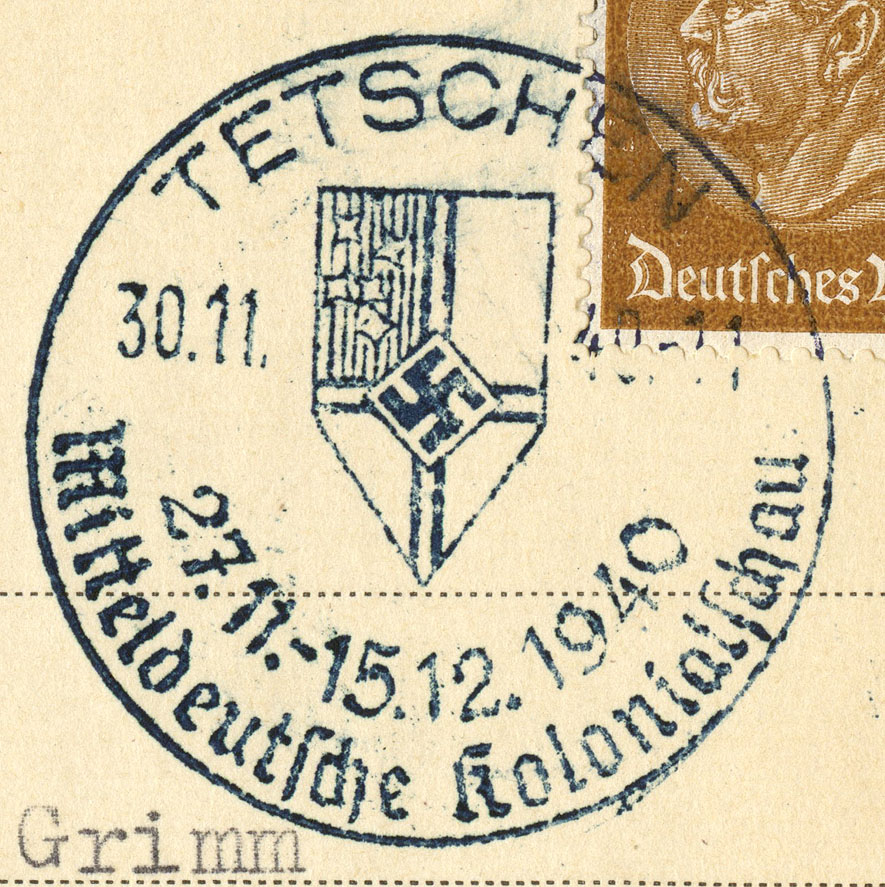
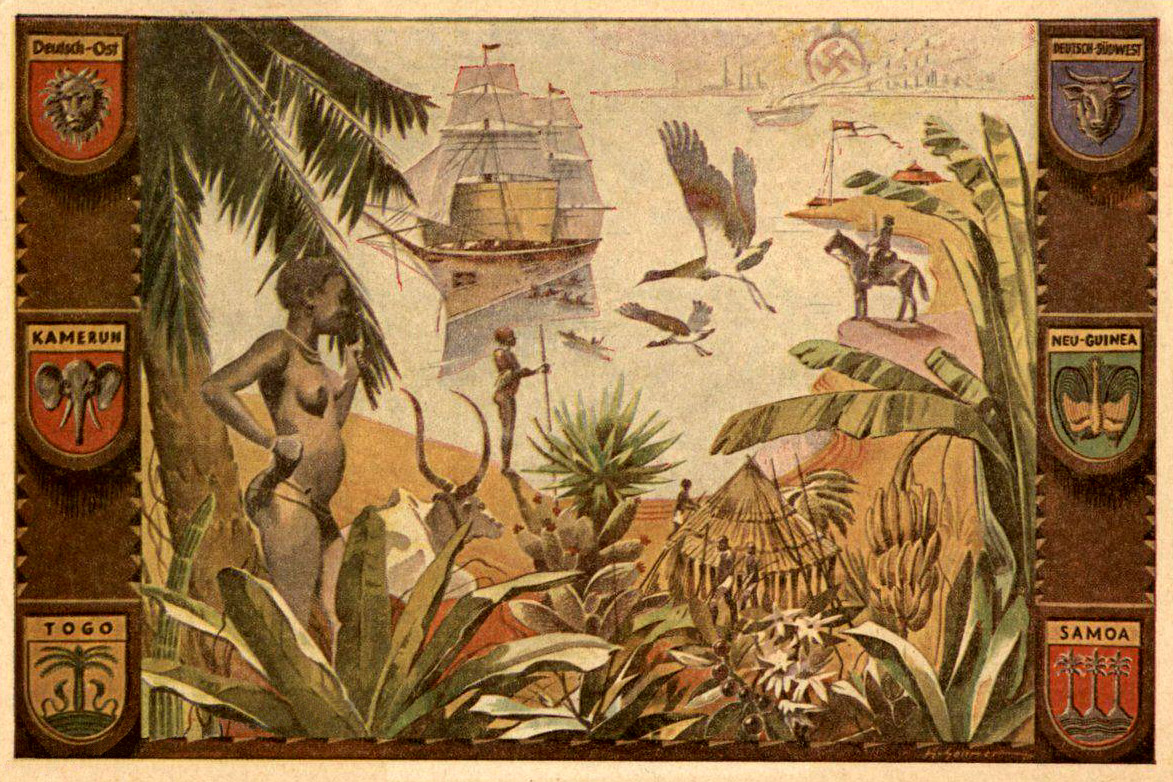
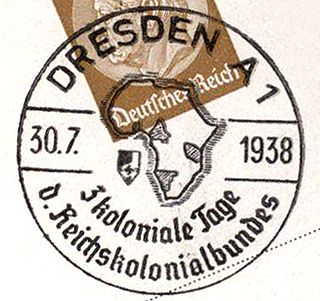
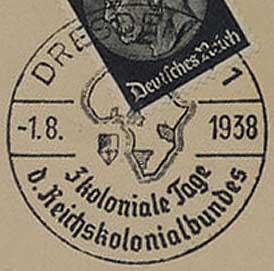
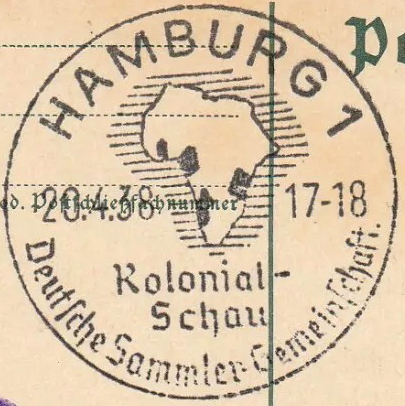
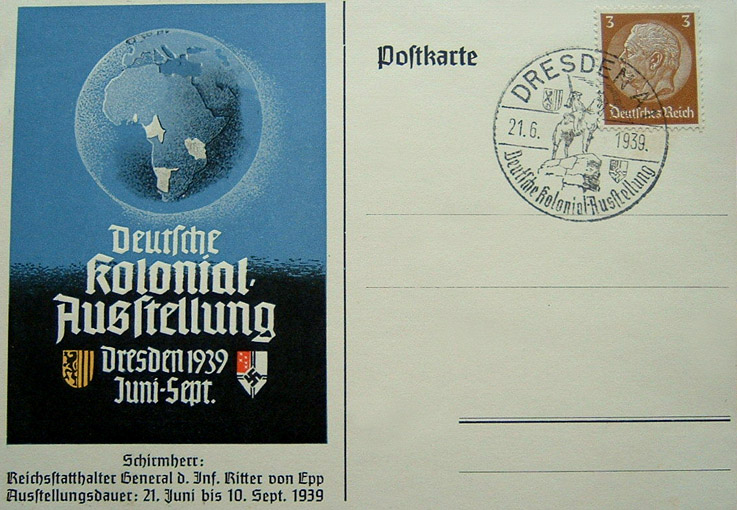
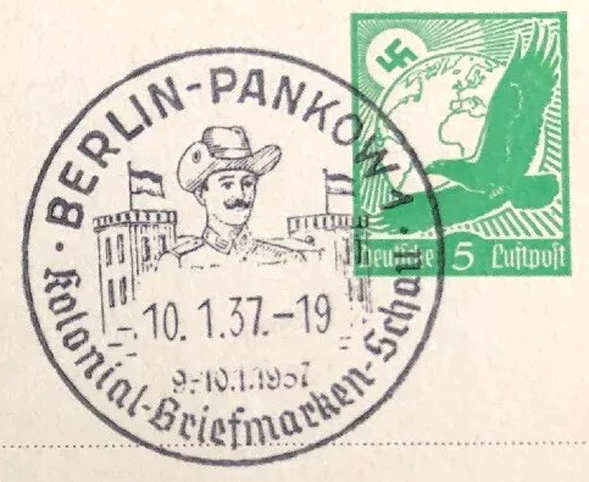
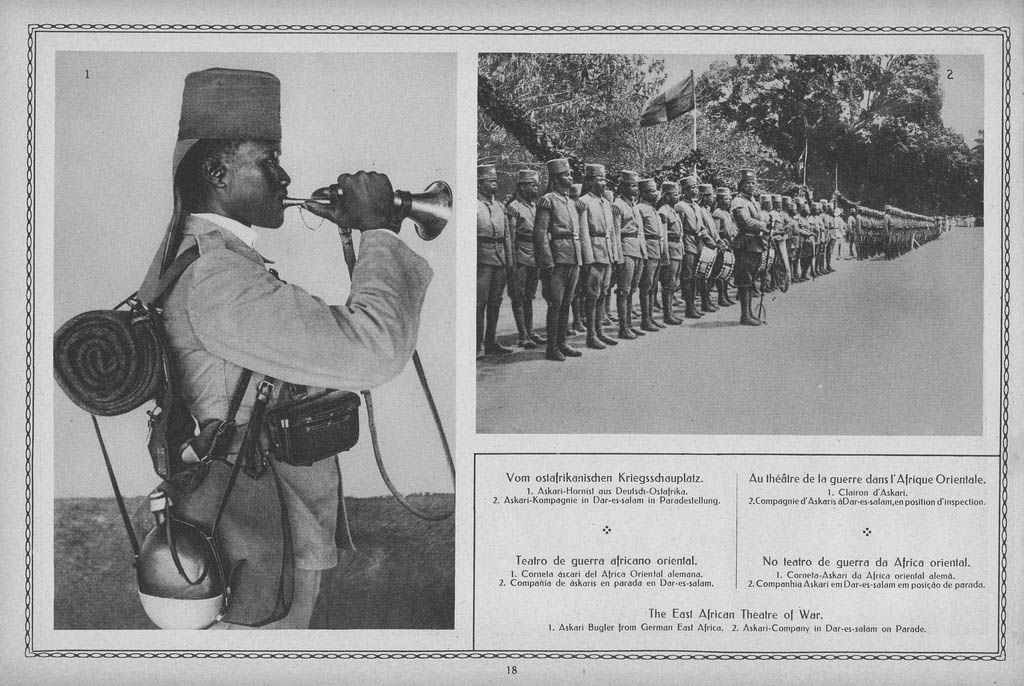
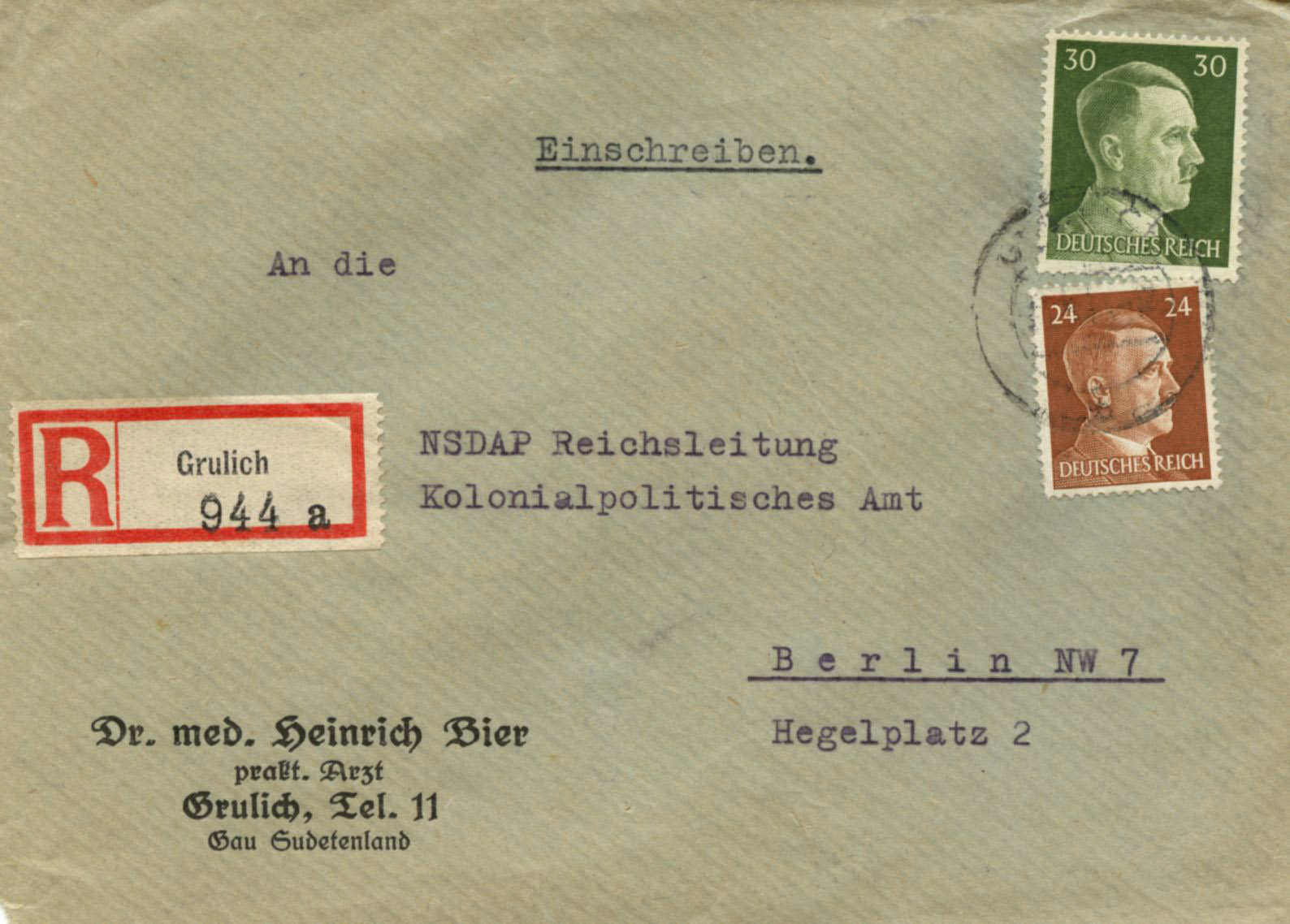
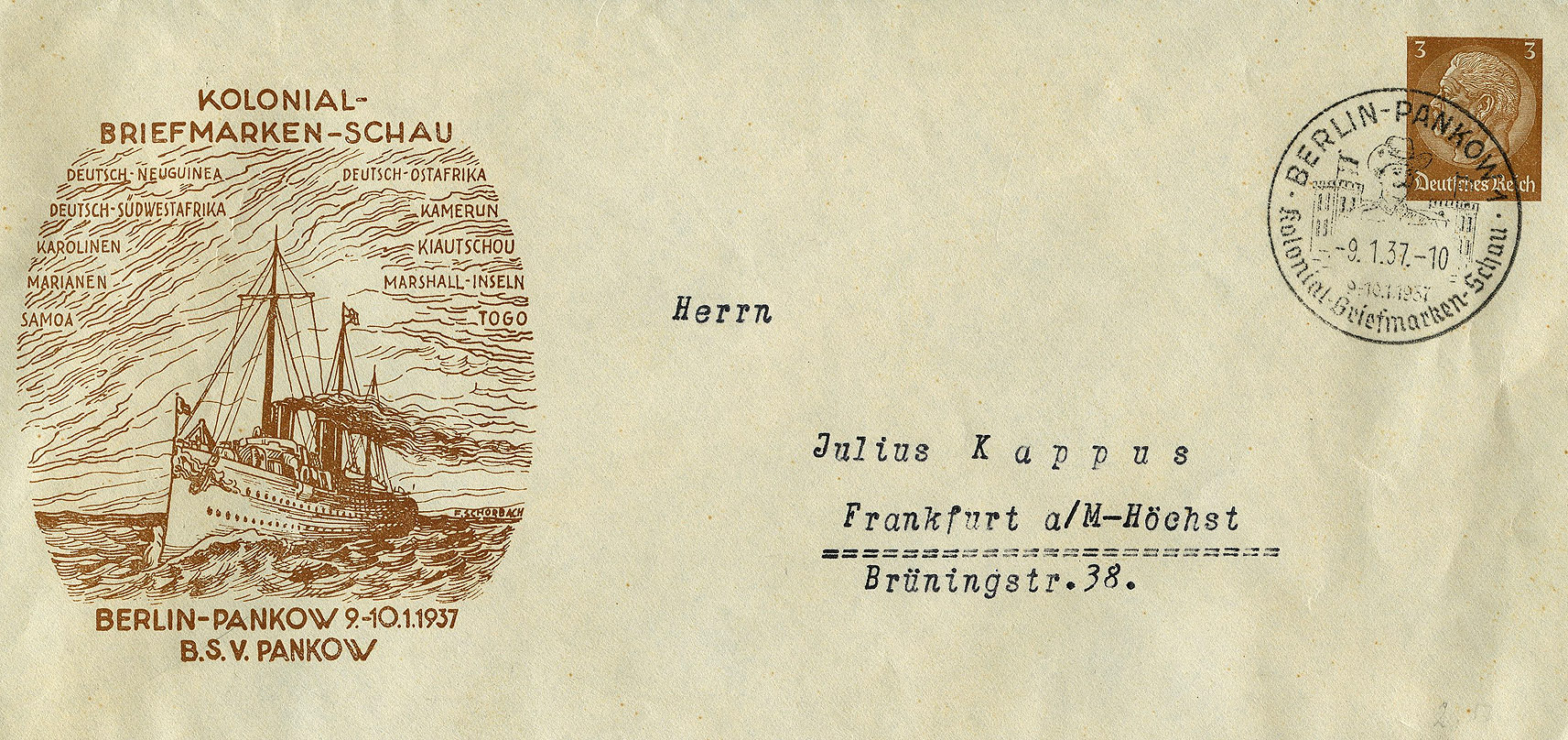

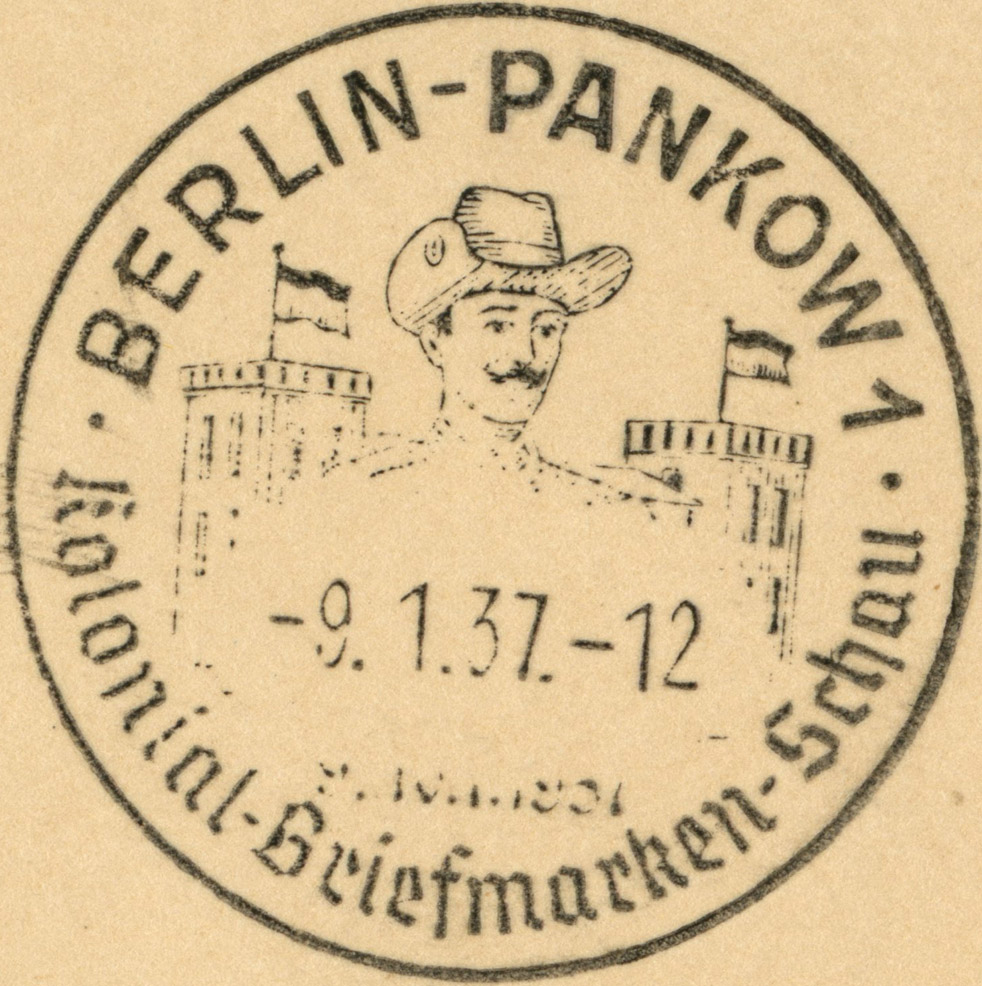
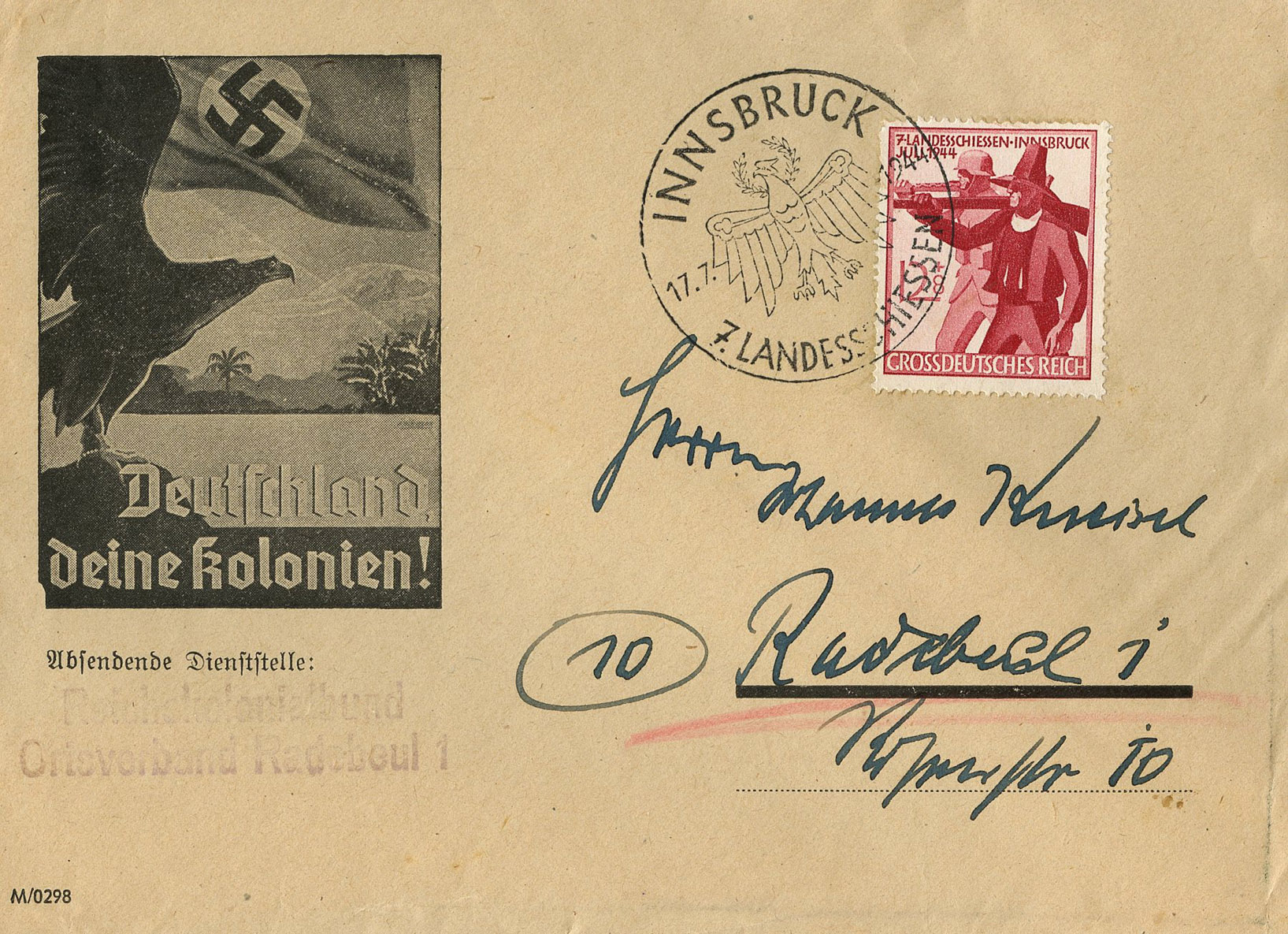
Deine Kolonien!'
Your Colonies!)
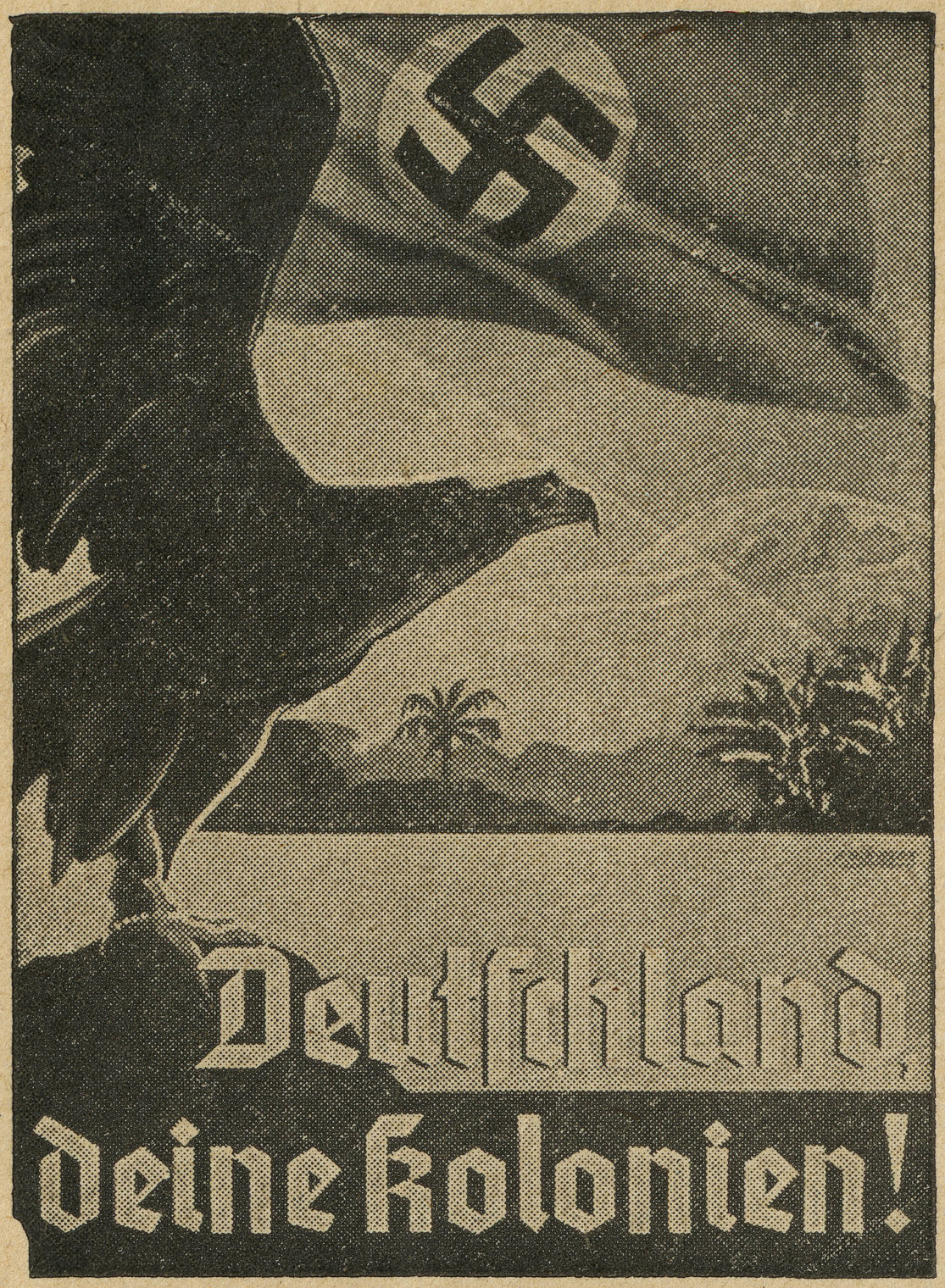
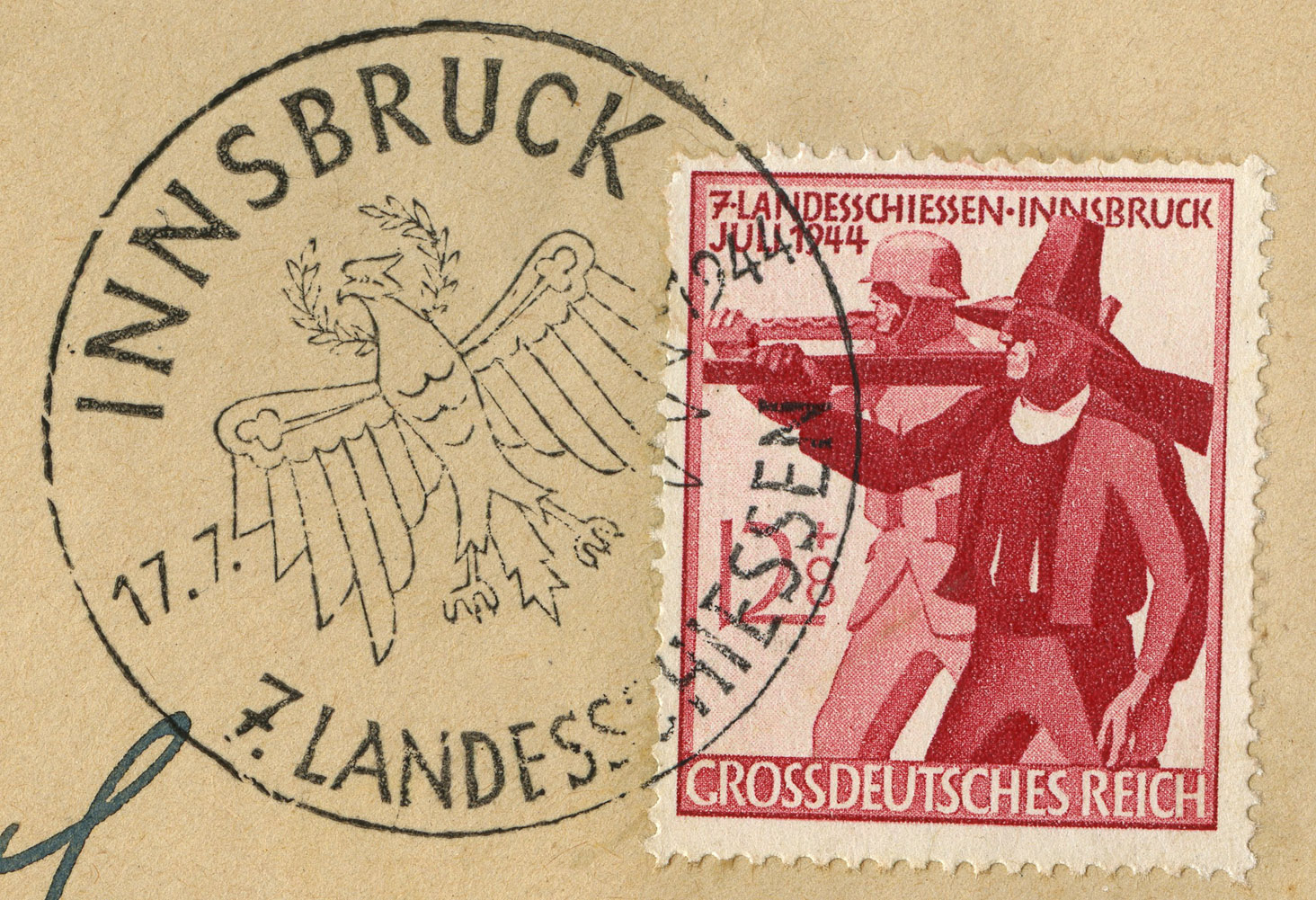
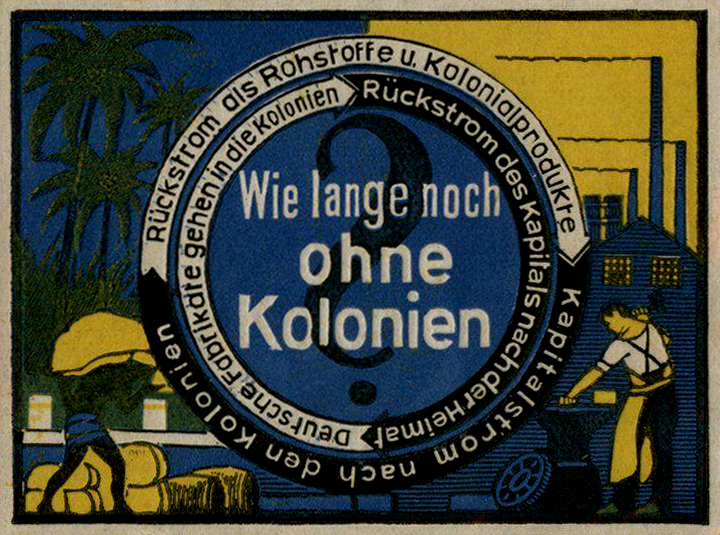
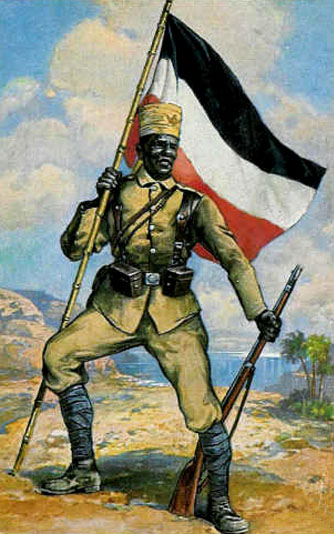
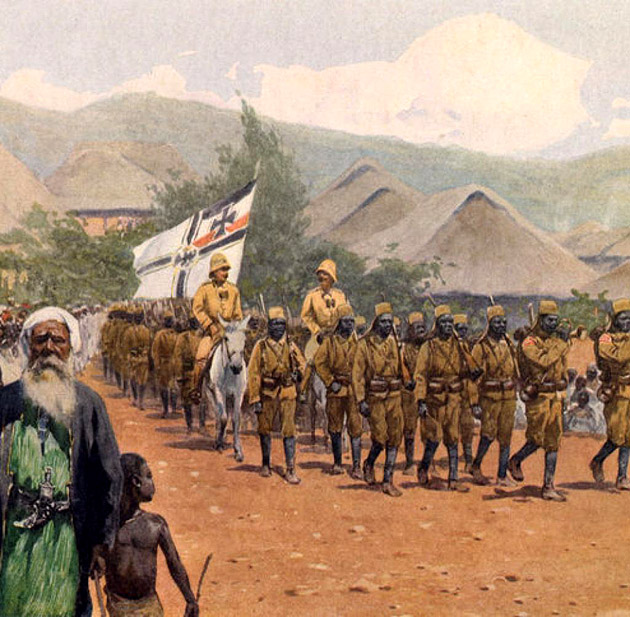
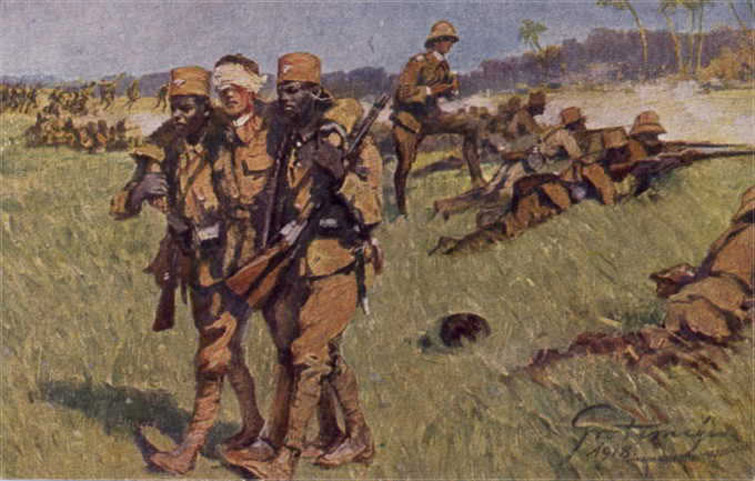
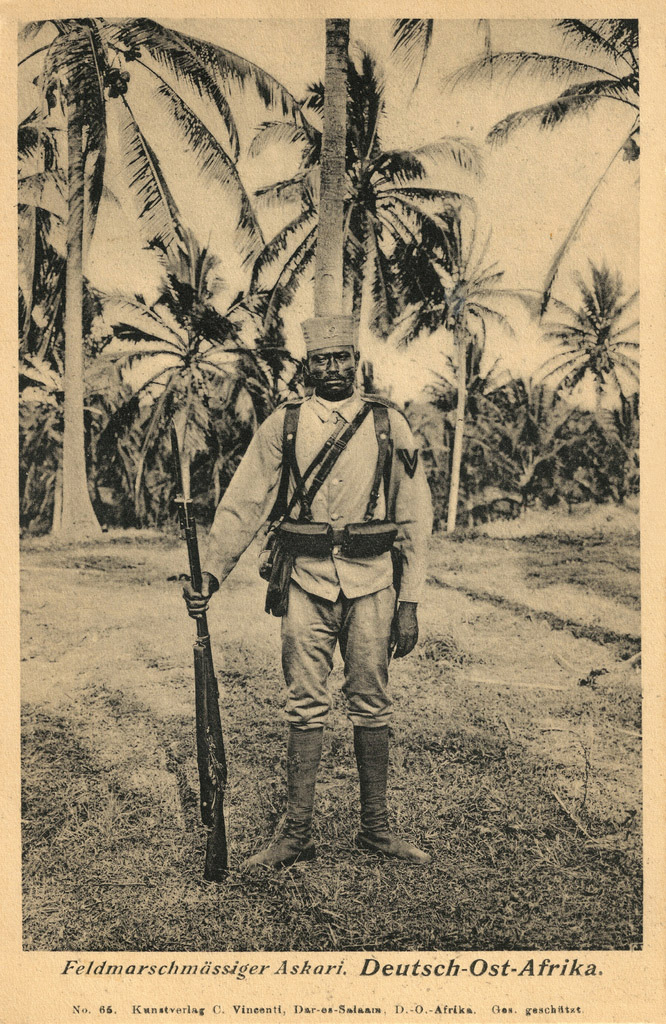
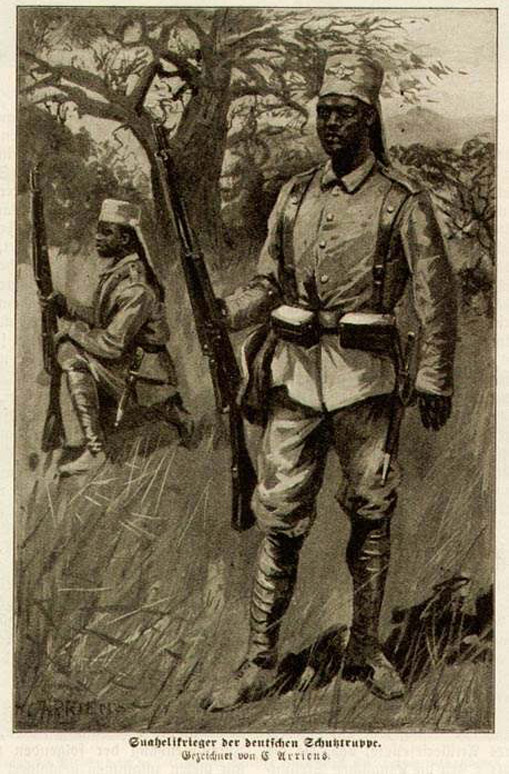
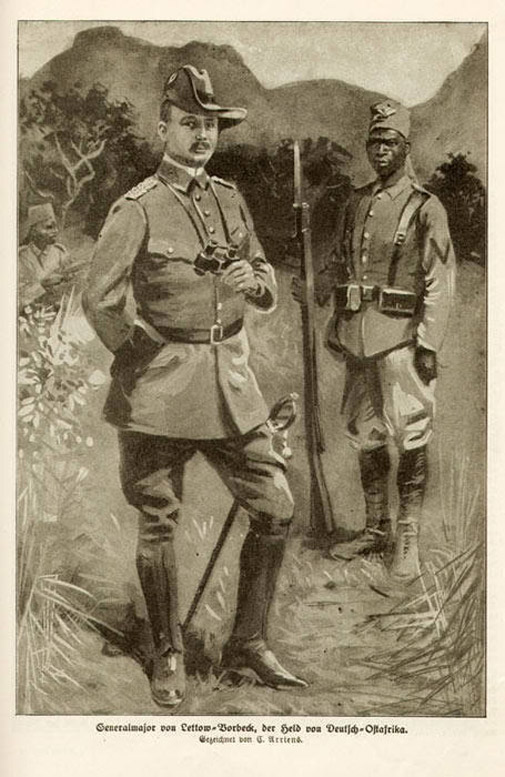
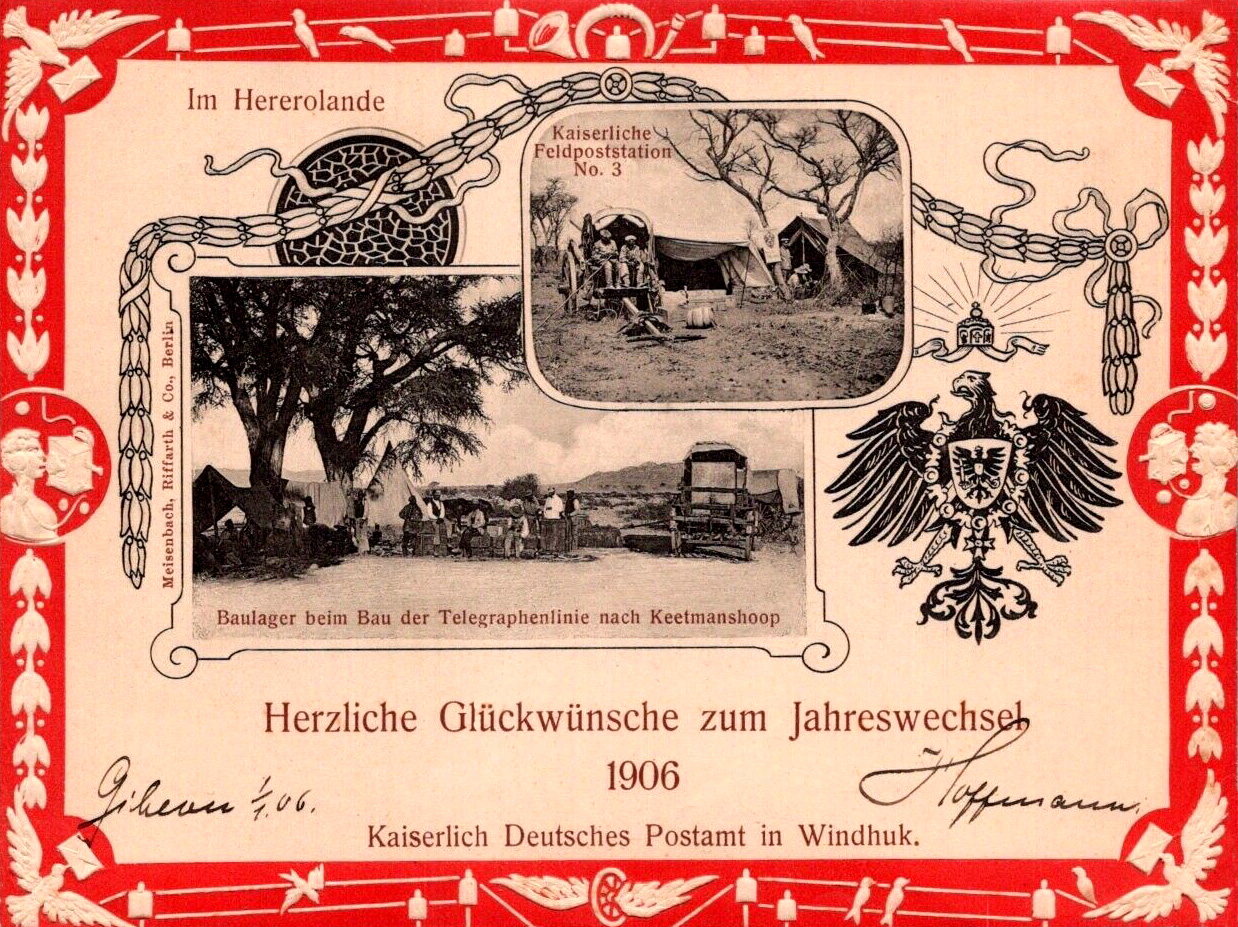
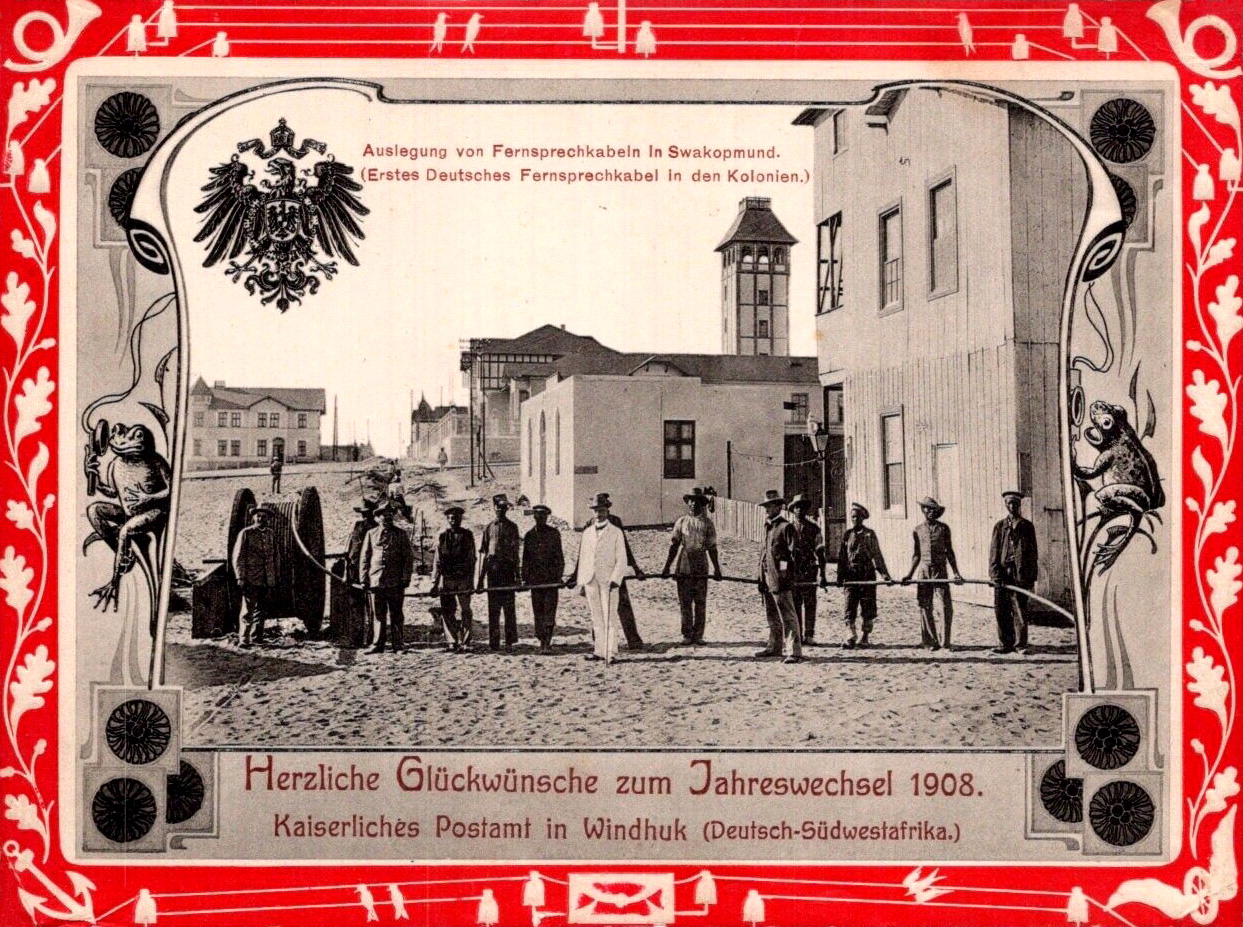

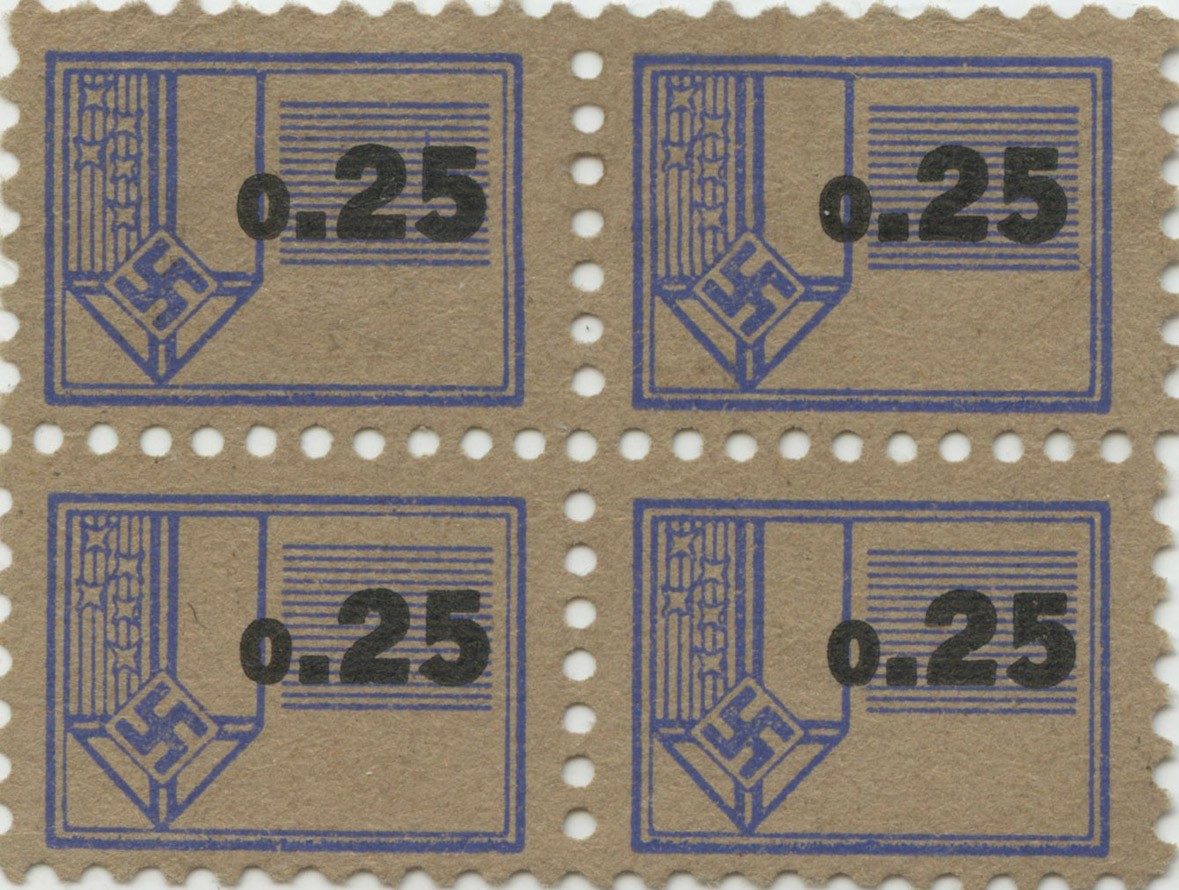
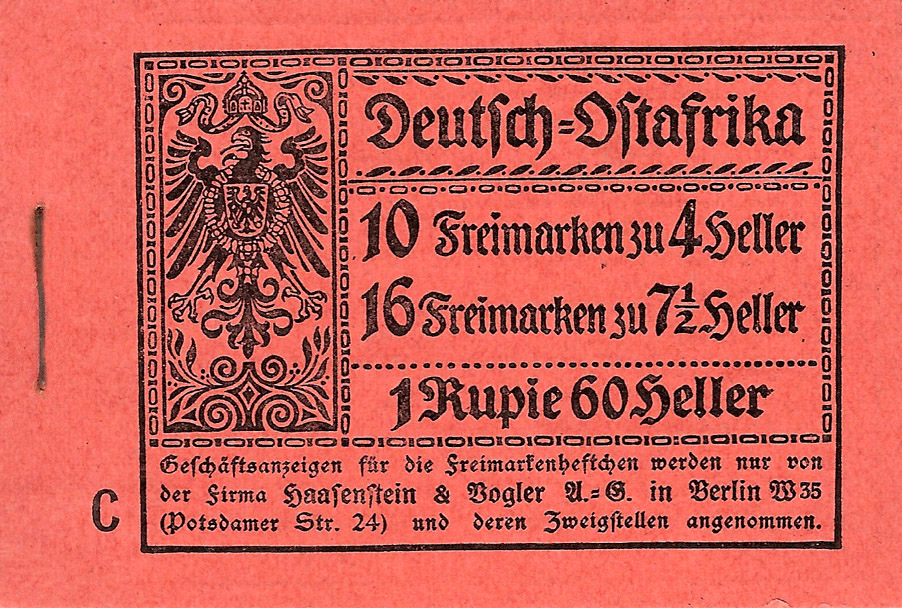
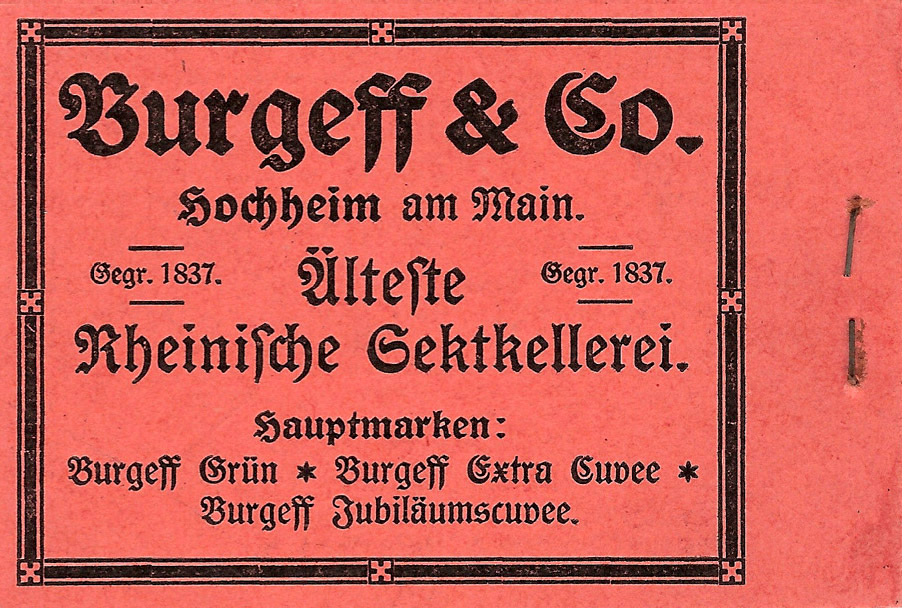
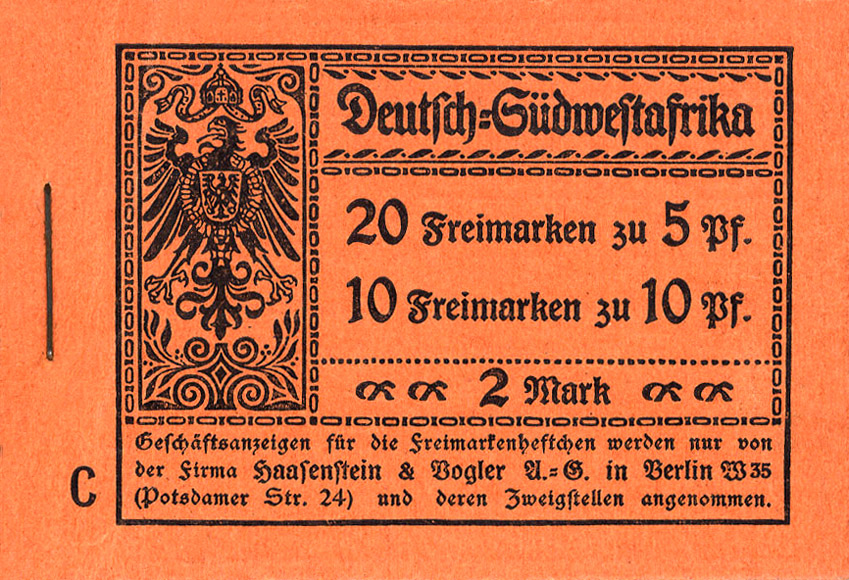
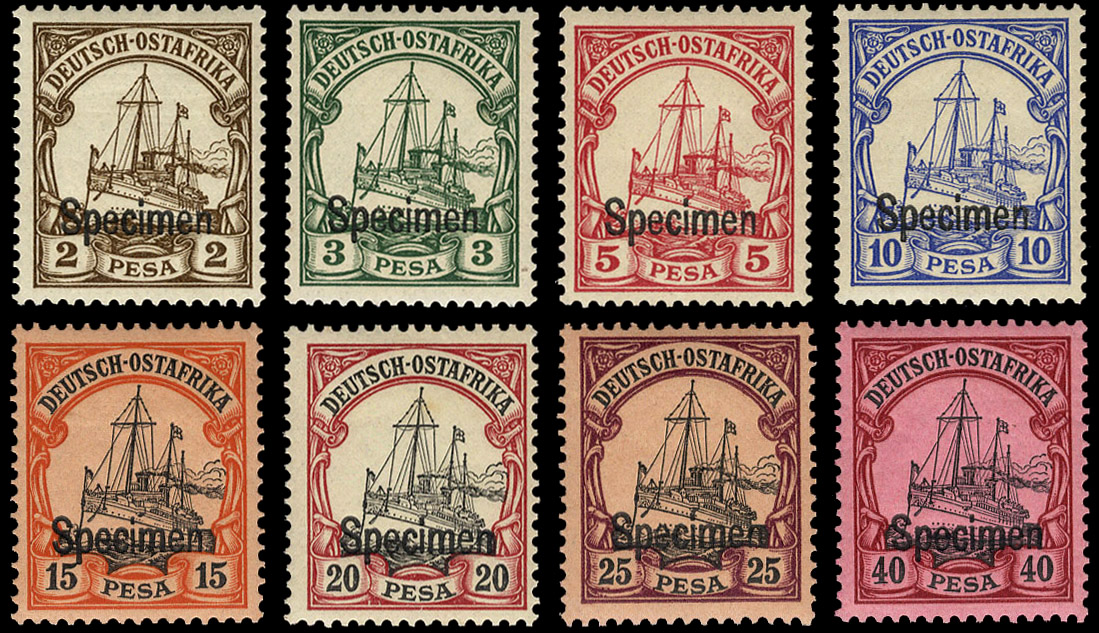
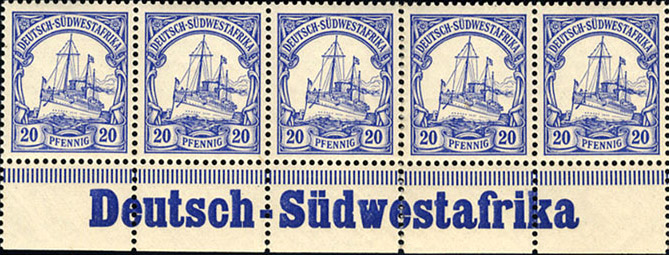
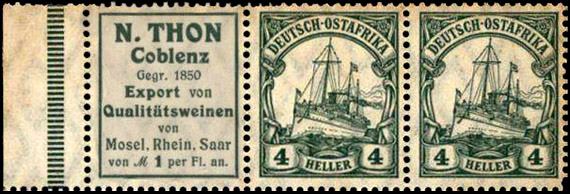


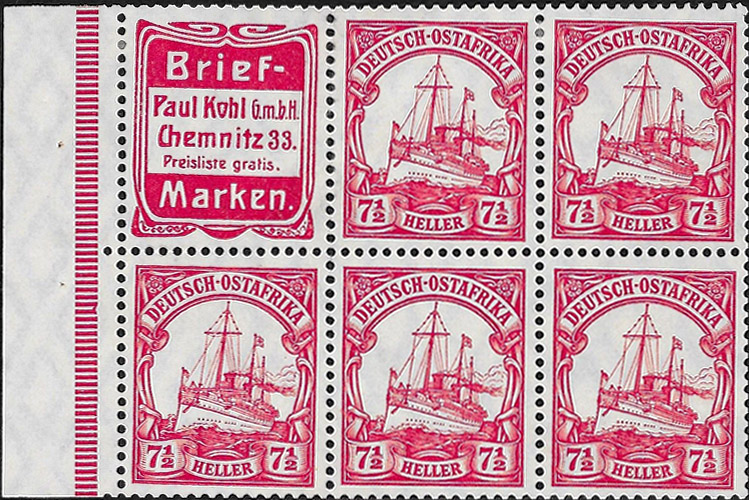
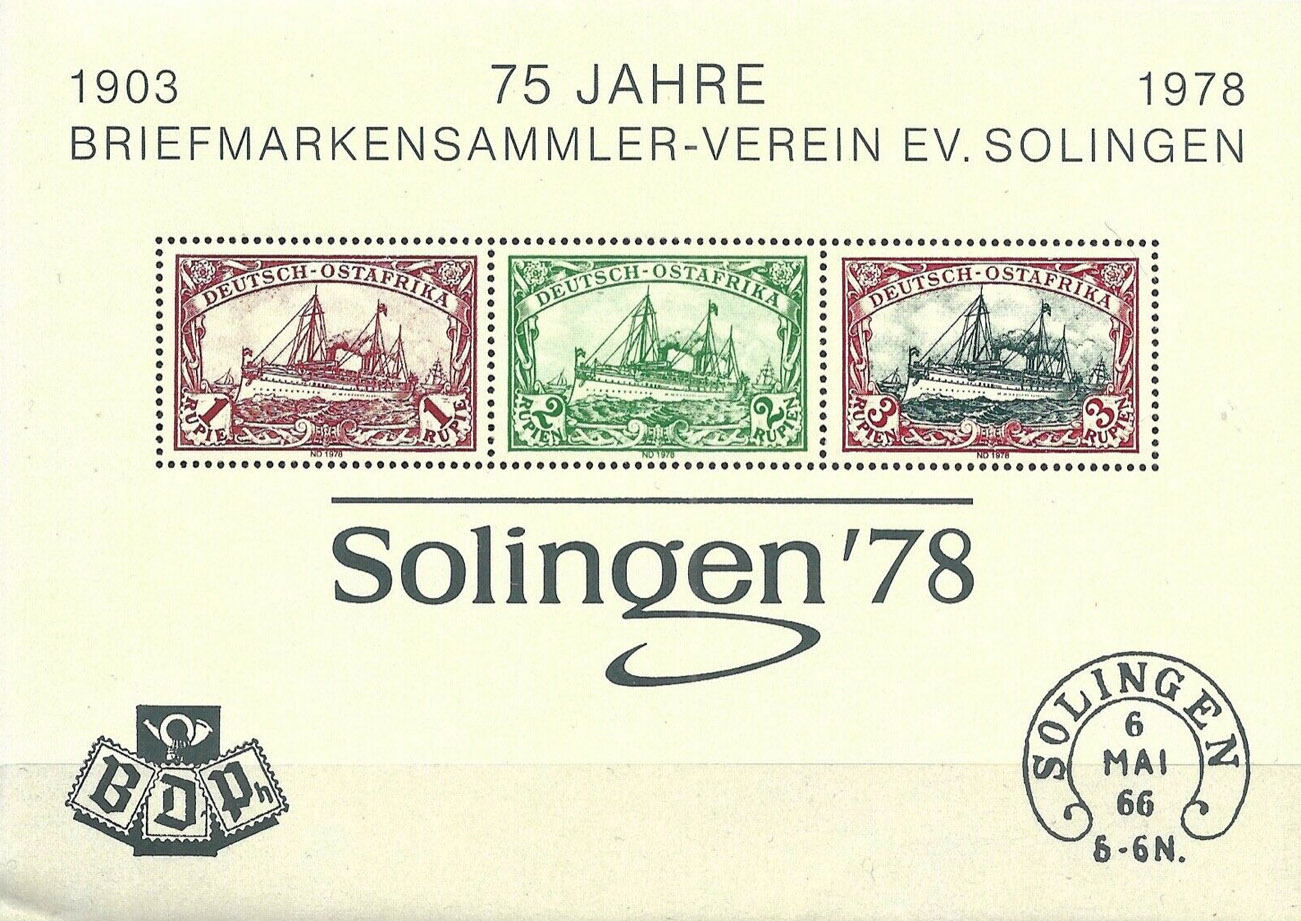
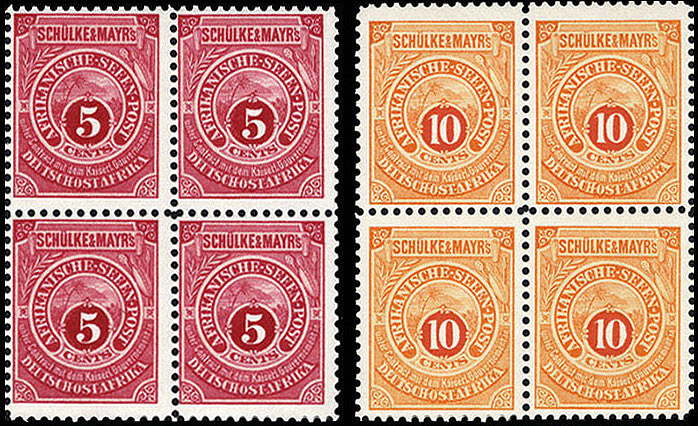
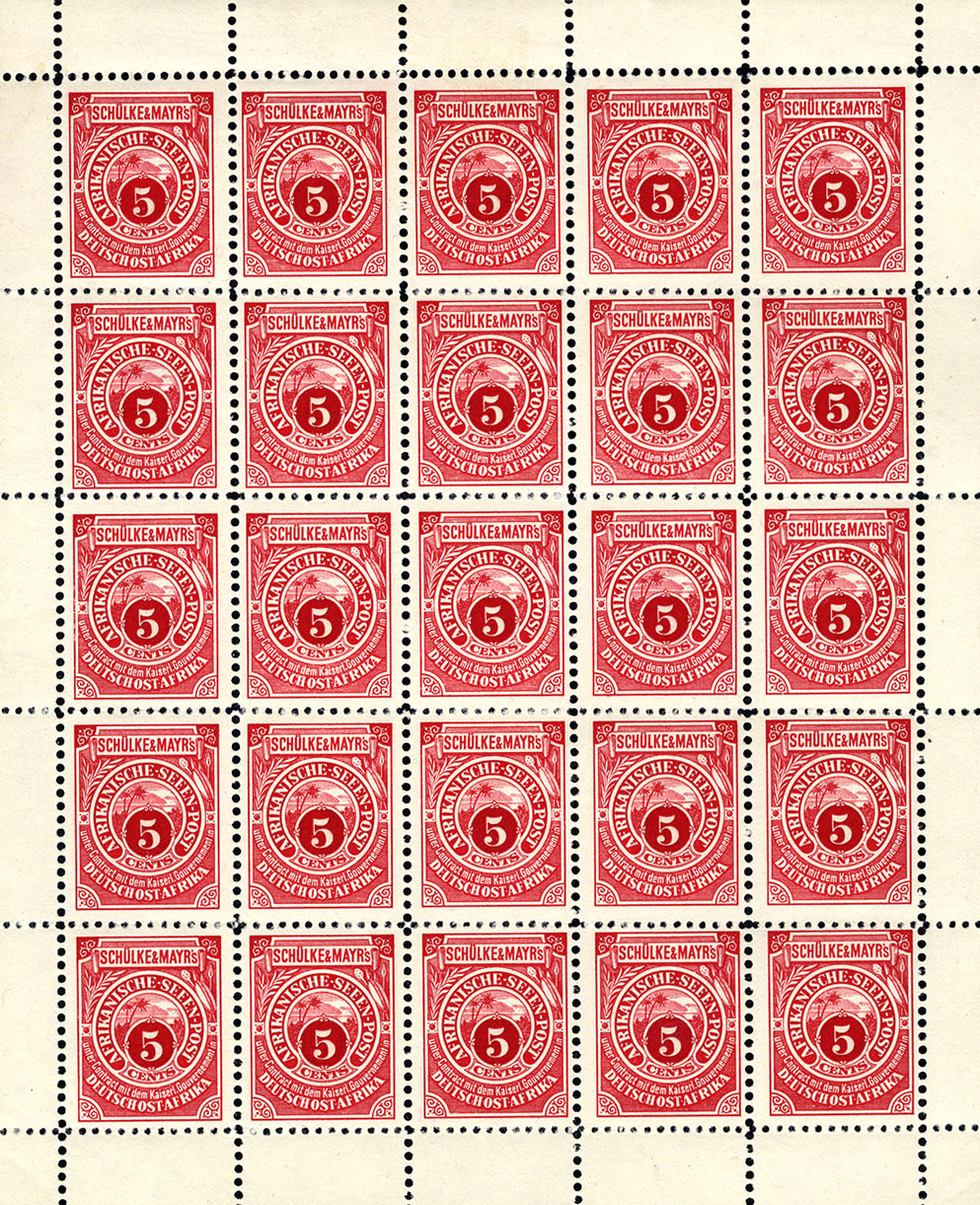

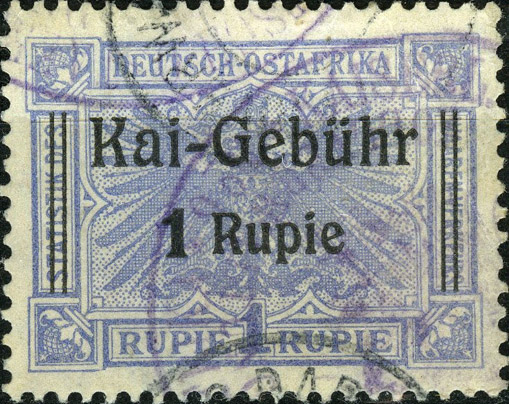
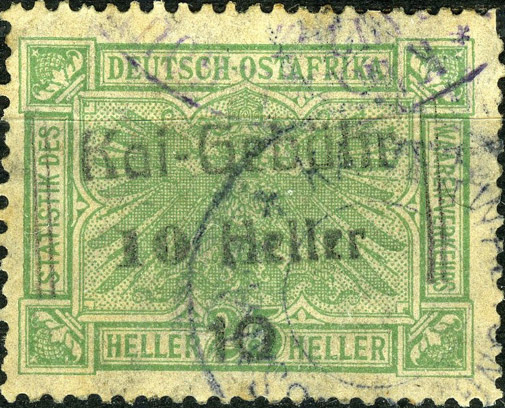
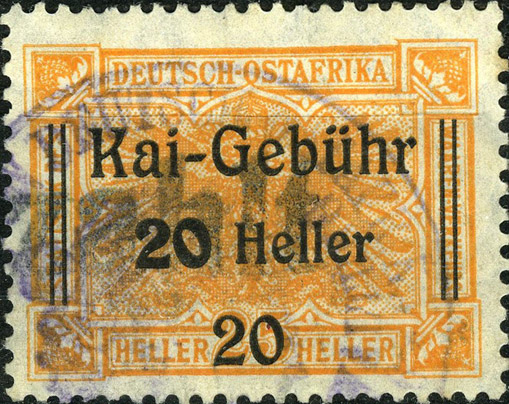
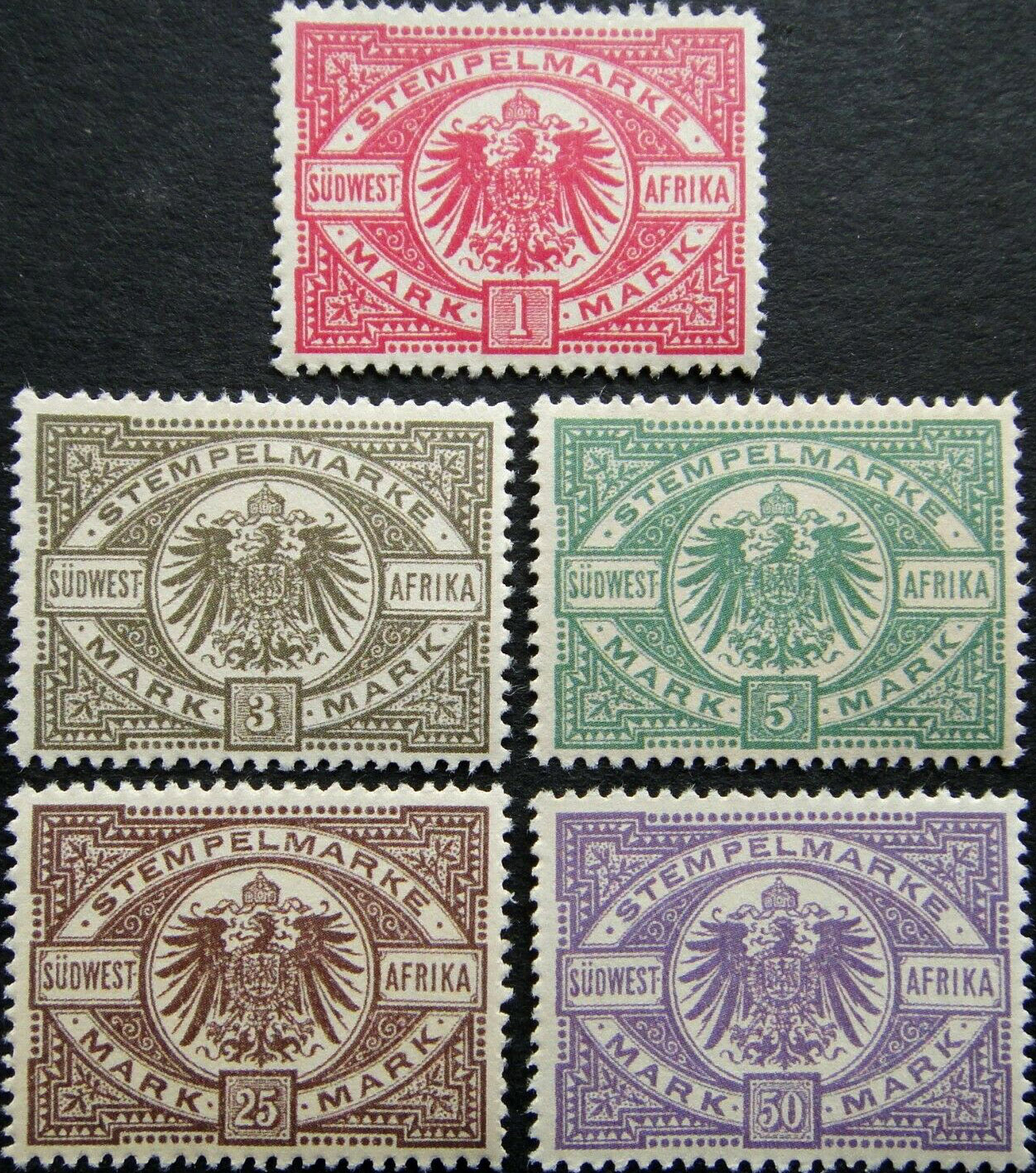
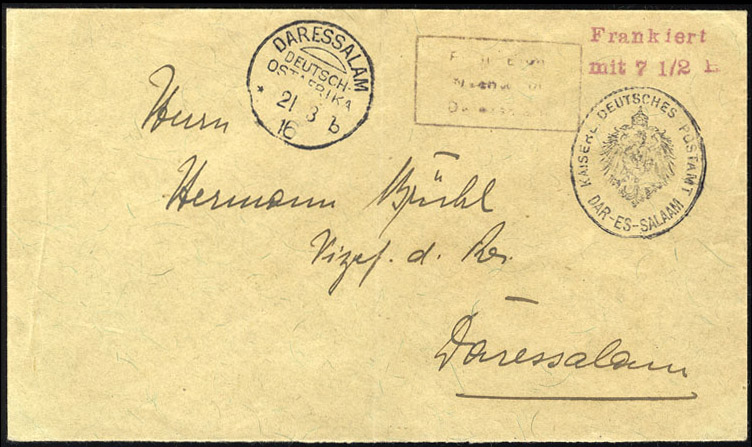
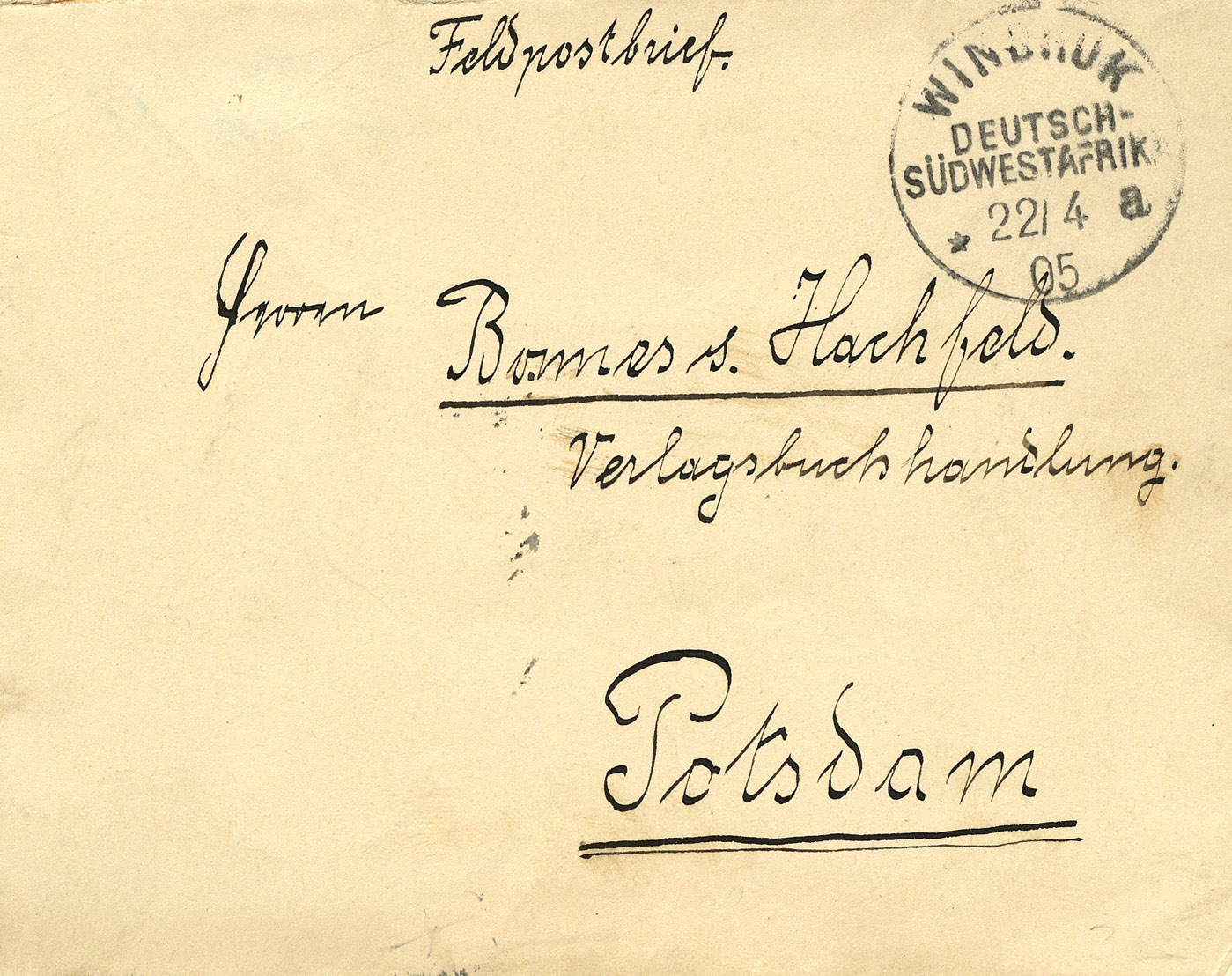
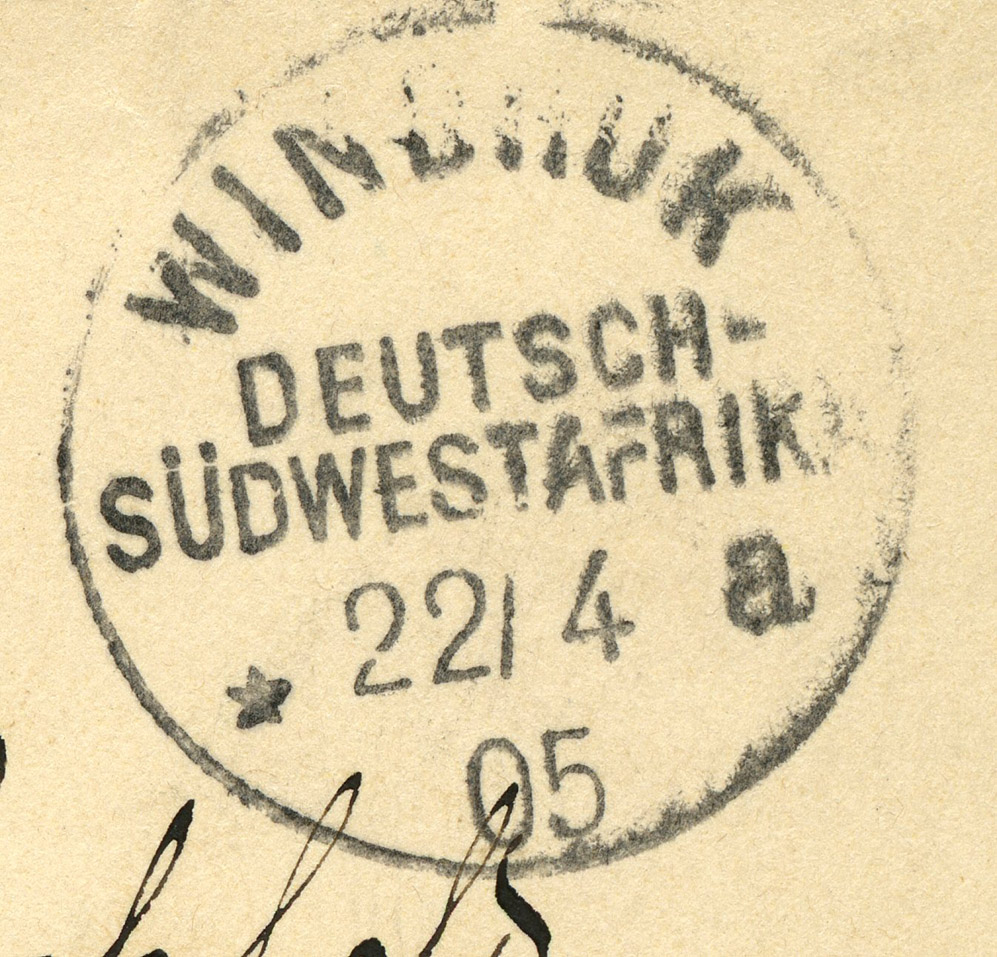
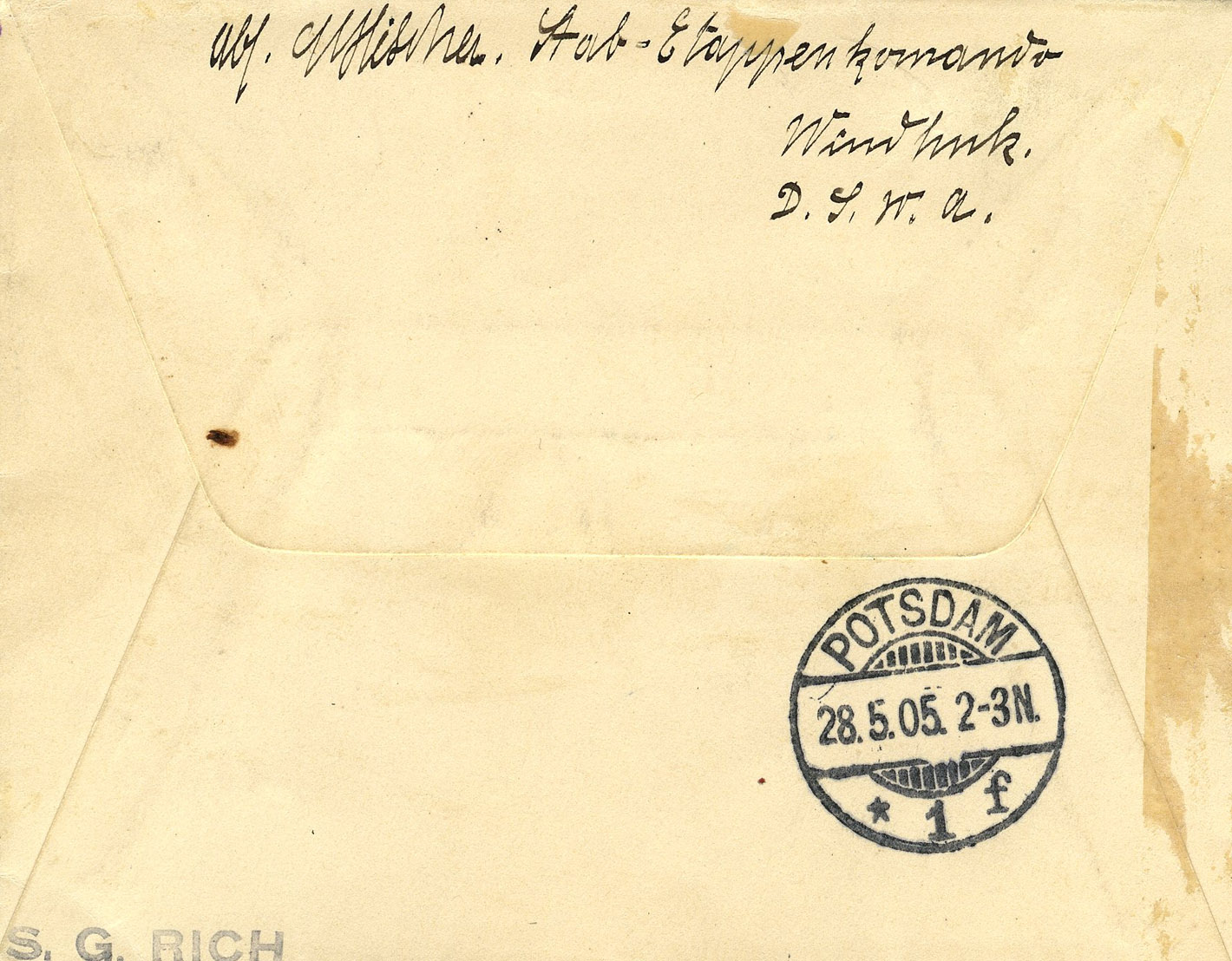
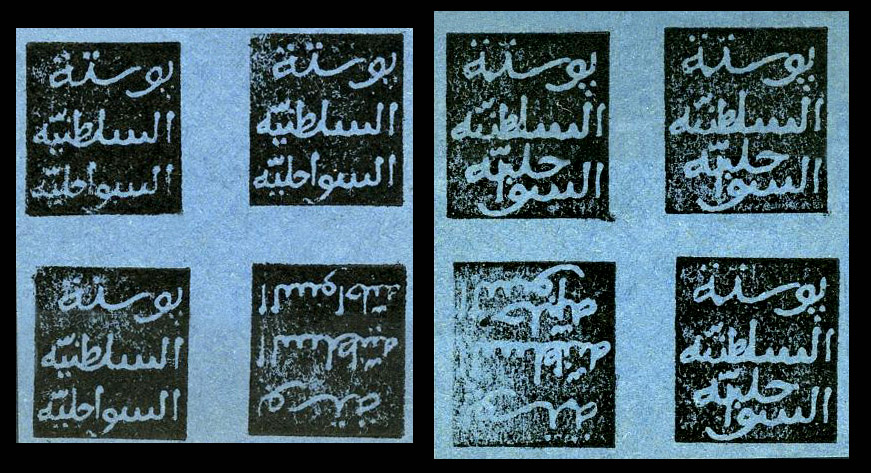
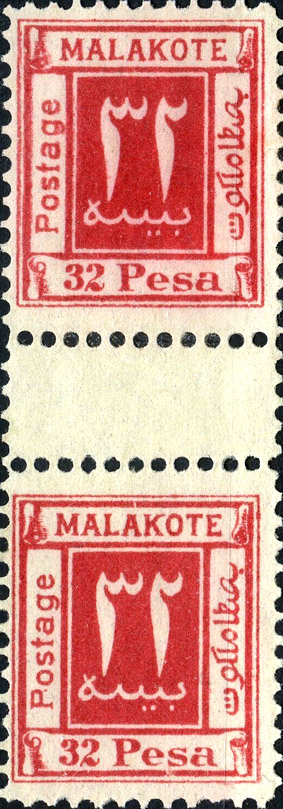

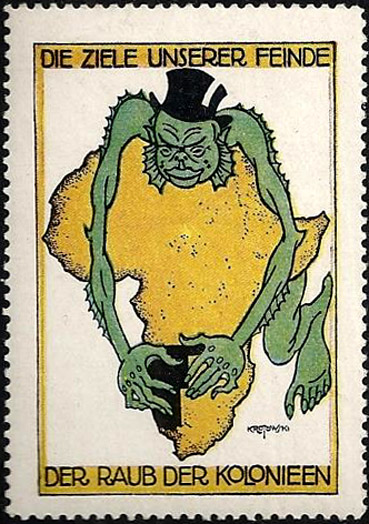
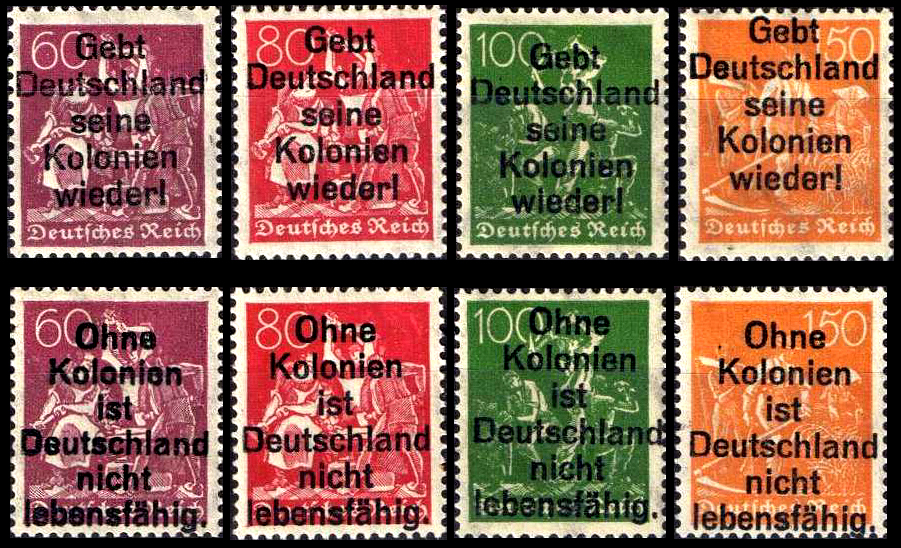
The top stamps say: 'Give Germany back her colonies'. The bottom row says: 'Germany is not viable without colonies'.]
